Courses
Accounting & Auditing CPE Courses
Accountants' Guidebook
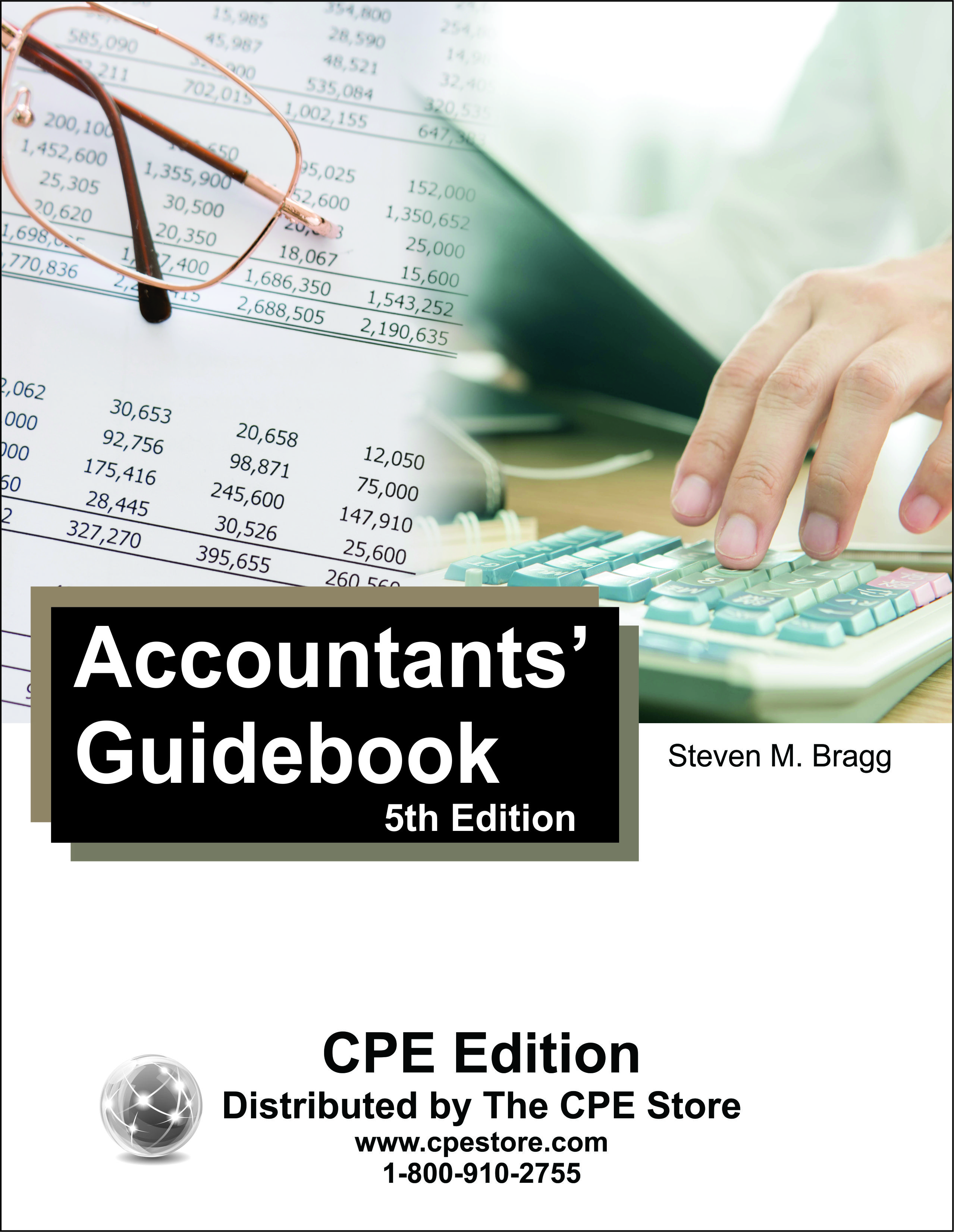
Course number: AA477705
This course is intended to improve the performance of accountants by increasing their knowledge of the practical operational details of accounting, as well as the accounting standards to which they are subjected. Covers accounting for receivables, investments, inventory, intangibles, equity, payroll, stock-based compensation, income taxes, business combinations, and property, plant & equipment. You will also learn about revenue recognition, foreign currency matters, accounting for leases, accounting changes and error corrections, closing the books, preparing financial statements, public company financial reporting, management reports, cash receipts management, collection tactics, payroll management, budgeting, business ratios, cost object analysis, and more. Course level: Basic. Prerequisites: None. Course includes integrated text and study guide, final exam, and grading service.NASBA field of study: Accounting Course credit: 30 hours
Printed Version$209
PDF$209
Colleague Test(s)$90
Contents
Accounting and Reporting for Government
On Sale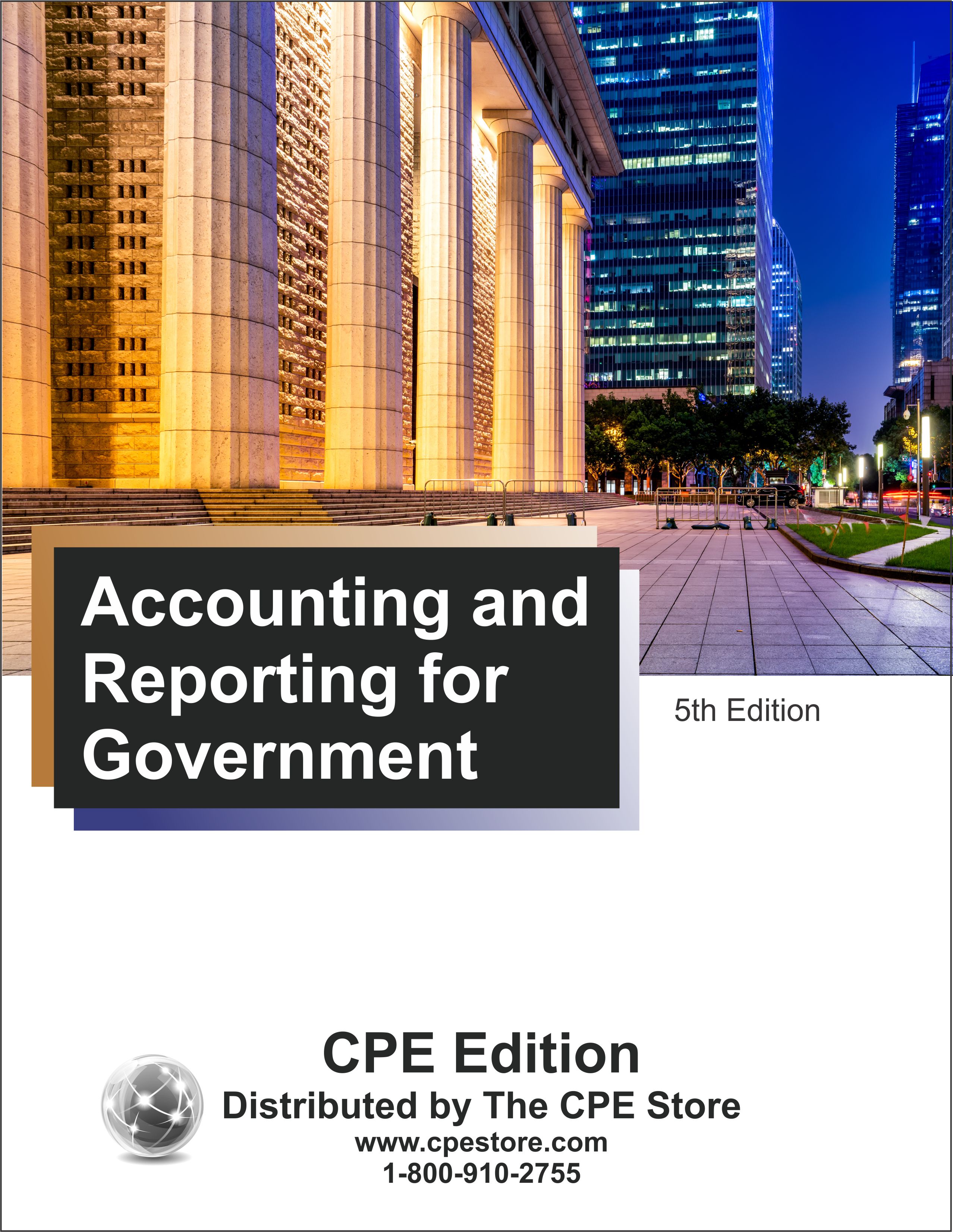
Course number: AA799805
This course on accounting for governmental entities is intended to be used by anyone who would like to gain knowledge of accounting and financial reporting currently recommended for state and local governmental units. The course provides an overview of (1) the fundamental concepts underlying state and local governmental accounting and reporting, (2) the importance of budgetary accounting in government, and (3) the recognition rules and journal entries related to governmental financing. It also describes (1) the accounts and journal entries related to transactions specific to governmental entities, (2) the process of defining the governmental reporting entity, (3) the components of the annual comprehensive financial report (ACFR), (4) the reporting requirements for government-wide and fund-based financial statements, and (5) other required information in the ACFR. Course level: Basic. Prerequisites: None. Course includes integrated text and study guide, final exam and grading service.NASBA field of study: Accounting (Governmental) Course credit: 8 hours
Printed Version$57
PDF$57
Colleague Test(s)$25
Contents
Accounting Best Practices
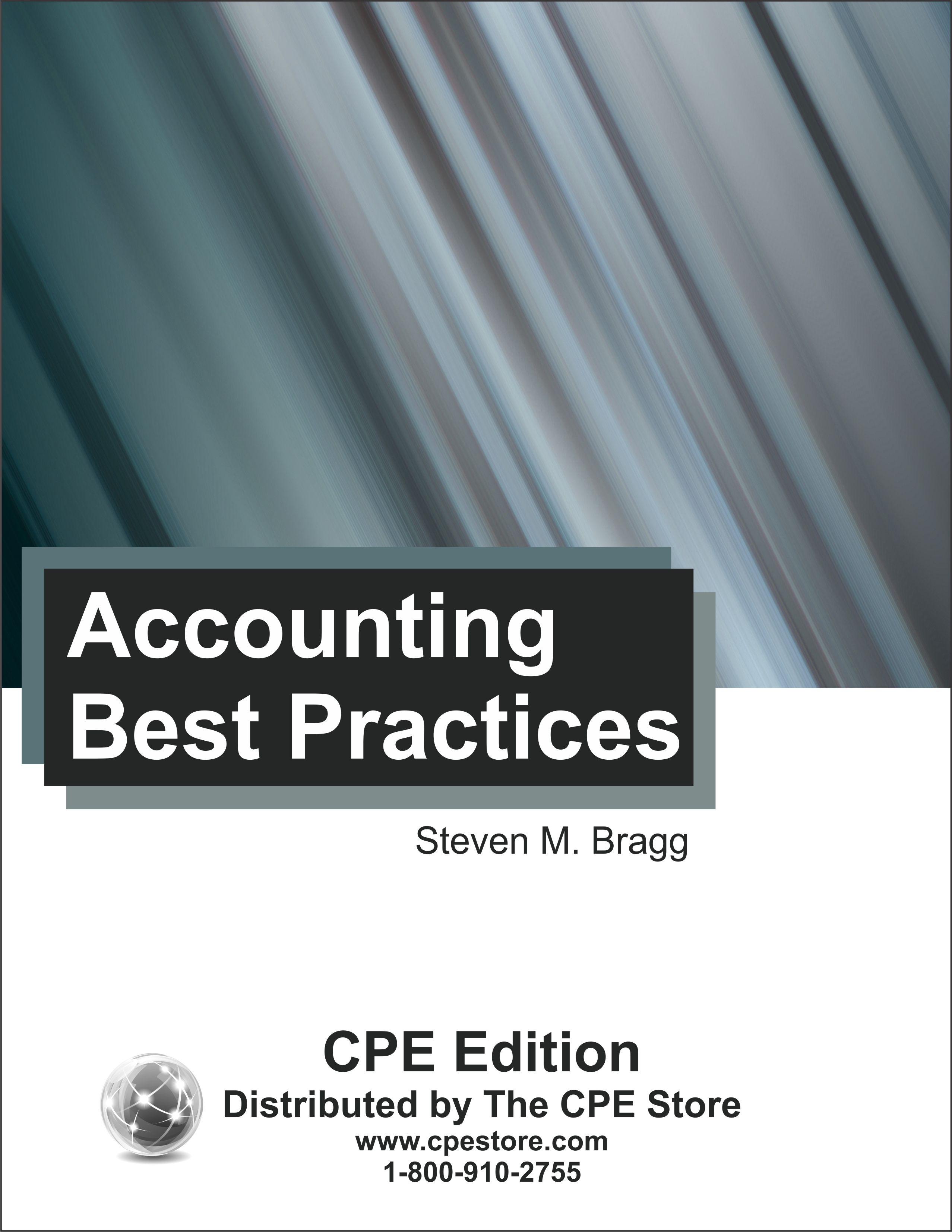
Course number: AA421301
The accounting department contains a broad array of processes, all of which can be fine-tuned to improve their performance. In the Accounting Best Practices course, we cover hundreds of best practices and tips that can reduce costs, increase transaction speeds, and eliminate errors. The topics covered include billings, budgeting, cost accounting, payroll, and much more. This is an essential guide for the practicing accountant. Course level: Basic. Prerequisites: None. Course includes integrated text and study guide, final exam, and grading service.NASBA field of study: Accounting Course credit: 11 hours
Printed Version$89
PDF$89
Colleague Test(s)$35
Contents
Accounting Changes and Error Corrections
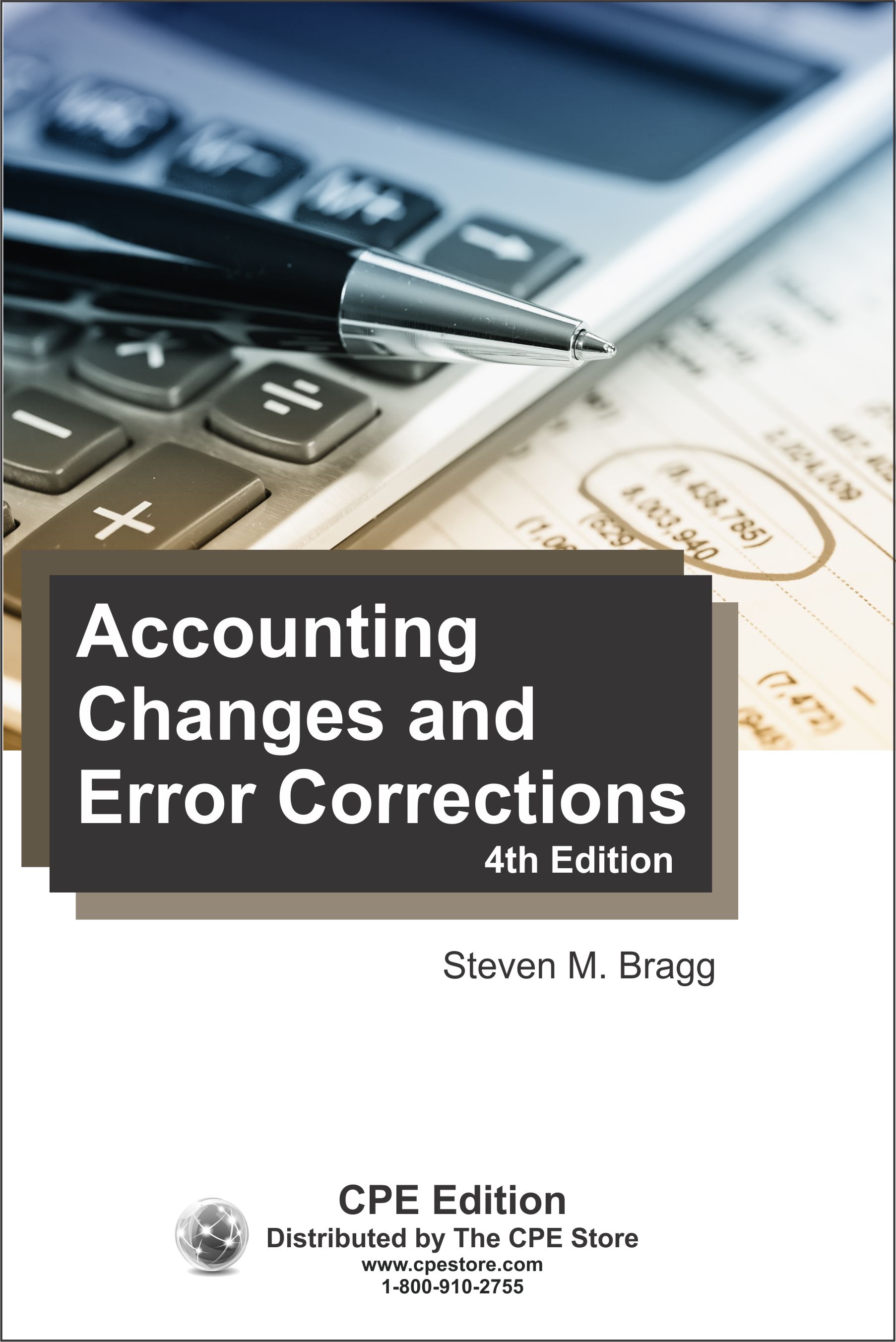
Course number: AA458204
Accounting Changes and Error Corrections describes the situations in which it is necessary to make adjustments to prior period financial statements, and when adjustments are only needed for the current period or in future periods. The differing treatments of changes in accounting principle, accounting estimate, and reporting entity are noted, as well as how to deal with the correction of errors in previously issued financial statements. The course also addresses the concept of materiality, which pertains to the correction of accounting errors. Course level: Basic. Prerequisites: None. Course includes integrated text and study guide, final exam and grading service.NASBA field of study: Accounting Course credit: 1 hour
Printed Version$19
PDF$19
Colleague Test(s)$12
Contents
Accounting Controls
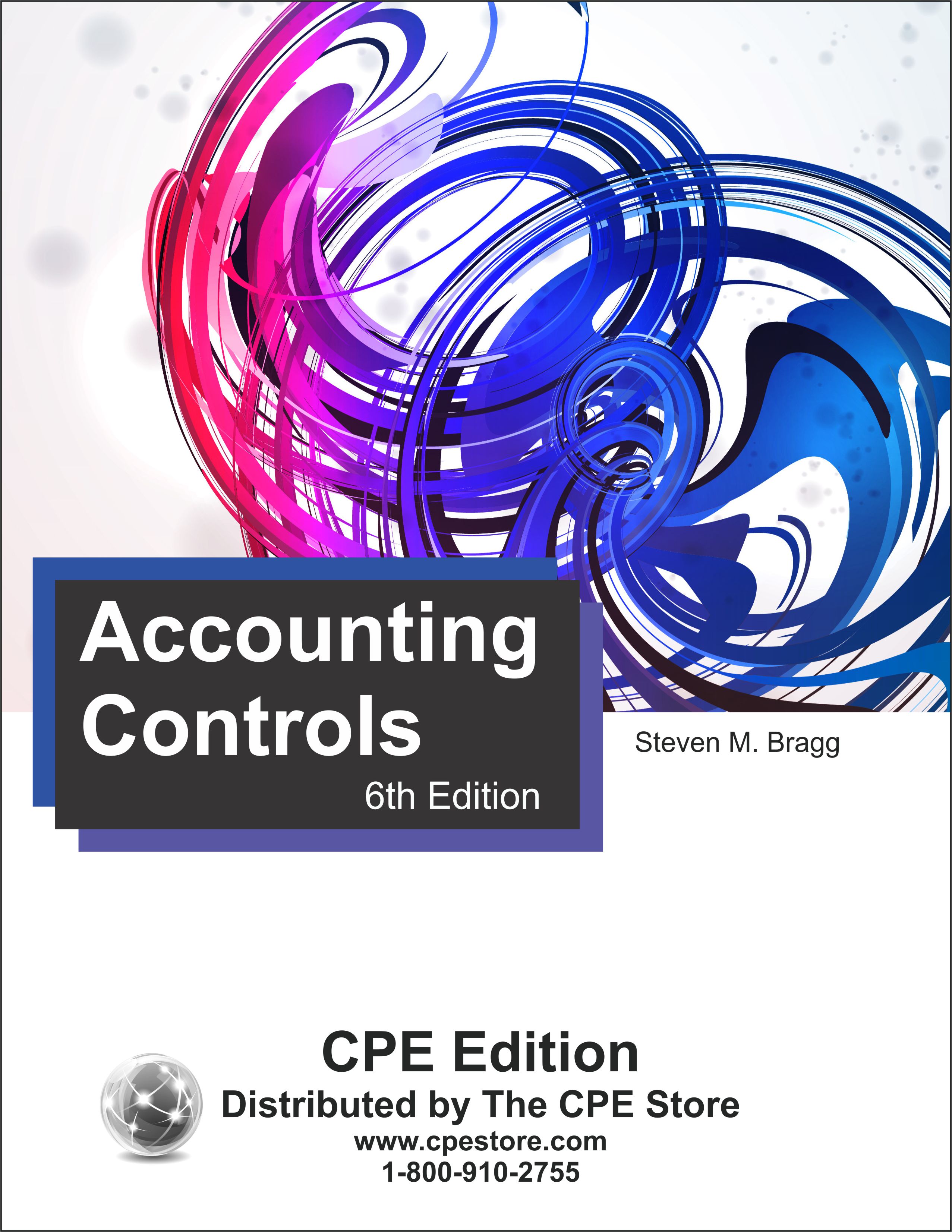
Course number: AA471806
Describes the controls needed for all of the major functional areas of a business, including order entry, credit, receipt of cash, shipping, customer billing, accounts receivable collection, purchasing, accounts payable, expense report processing, procurement cards, petty cash, receiving, payroll, fixed assets, cash forecasting, and funding-related aspects of the treasury function. Also describes the types of controls needed for closing the books. Includes numerous illustrations and flowcharts. Course level: Basic. Prerequisites: None. Course includes integrated text and study guide, final exam and grading service.NASBA field of study: Accounting Course credit: 12 hours
Printed Version$89
PDF$89
Colleague Test(s)$35
Contents
Accounting Desk Book: Selected Topics
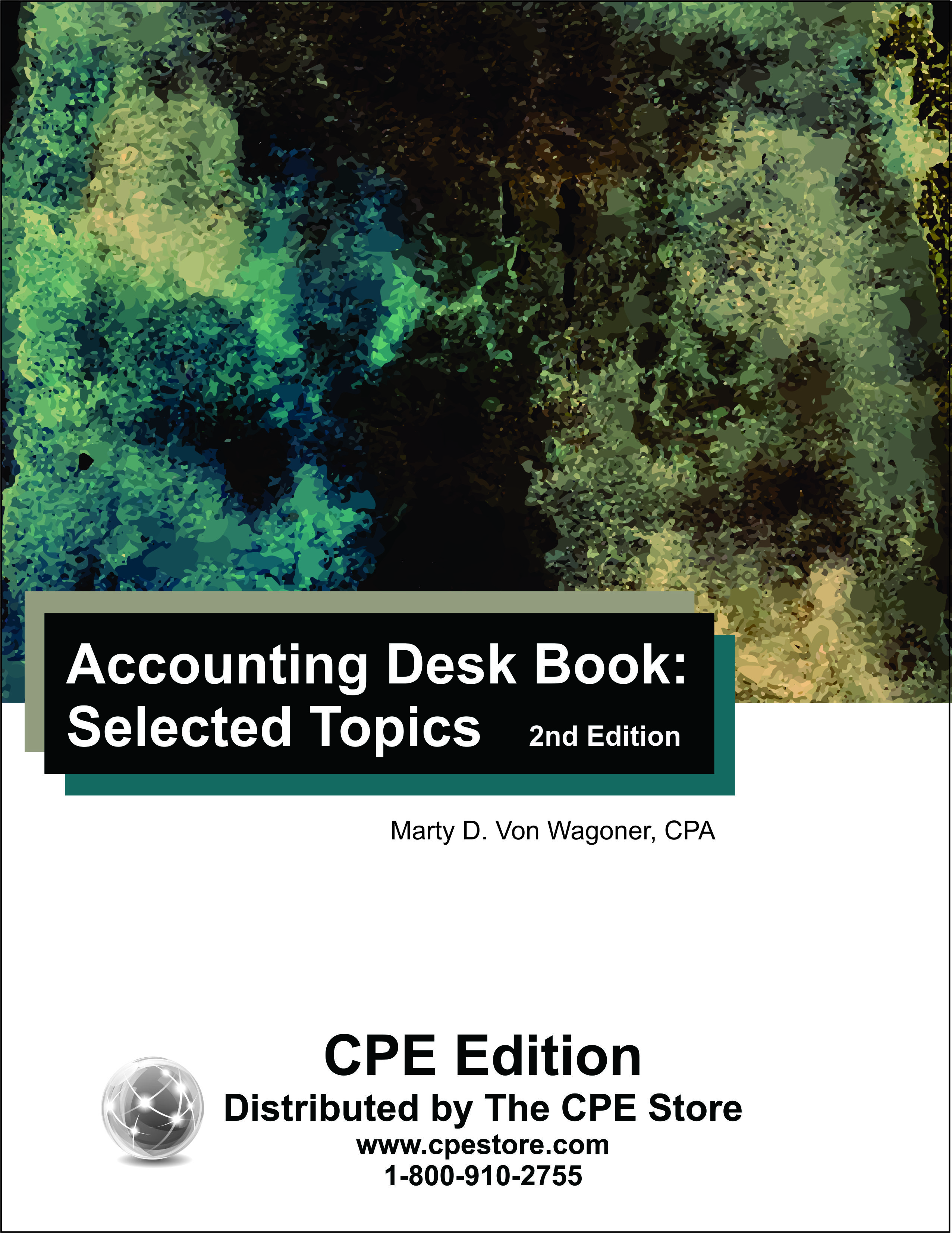
Course number: AA990231
Discusses selected topics that cover many aspects of accounting. These topics include the principles, disclosure, analysis, and interpretation of financial statements, revenues and expenses, stockholders’ equity, the Statement of Cash Flows, segment reporting, cost accounting, budgeting, change in accounting methods, auditor independence rules, practicing before the IRS and the power of attorney guidelines, internet accounting, e-commerce, insurance accounting, expert witness guidelines, internal controls, the going concern concept, interim reporting guidelines, reporting of cash payments over $10,000, goodwill, foreign currency translations, the FASB codification project and international convergence, and the whistleblower program. Course level: Basic. Prerequisites: None. Course includes integrated text and study guide, final exam, and grading service.NASBA field of study: Accounting Course credit: 24 hours
Printed Version$159
PDF$159
Colleague Test(s)$70
Contents
Accounting for Casinos and Gaming
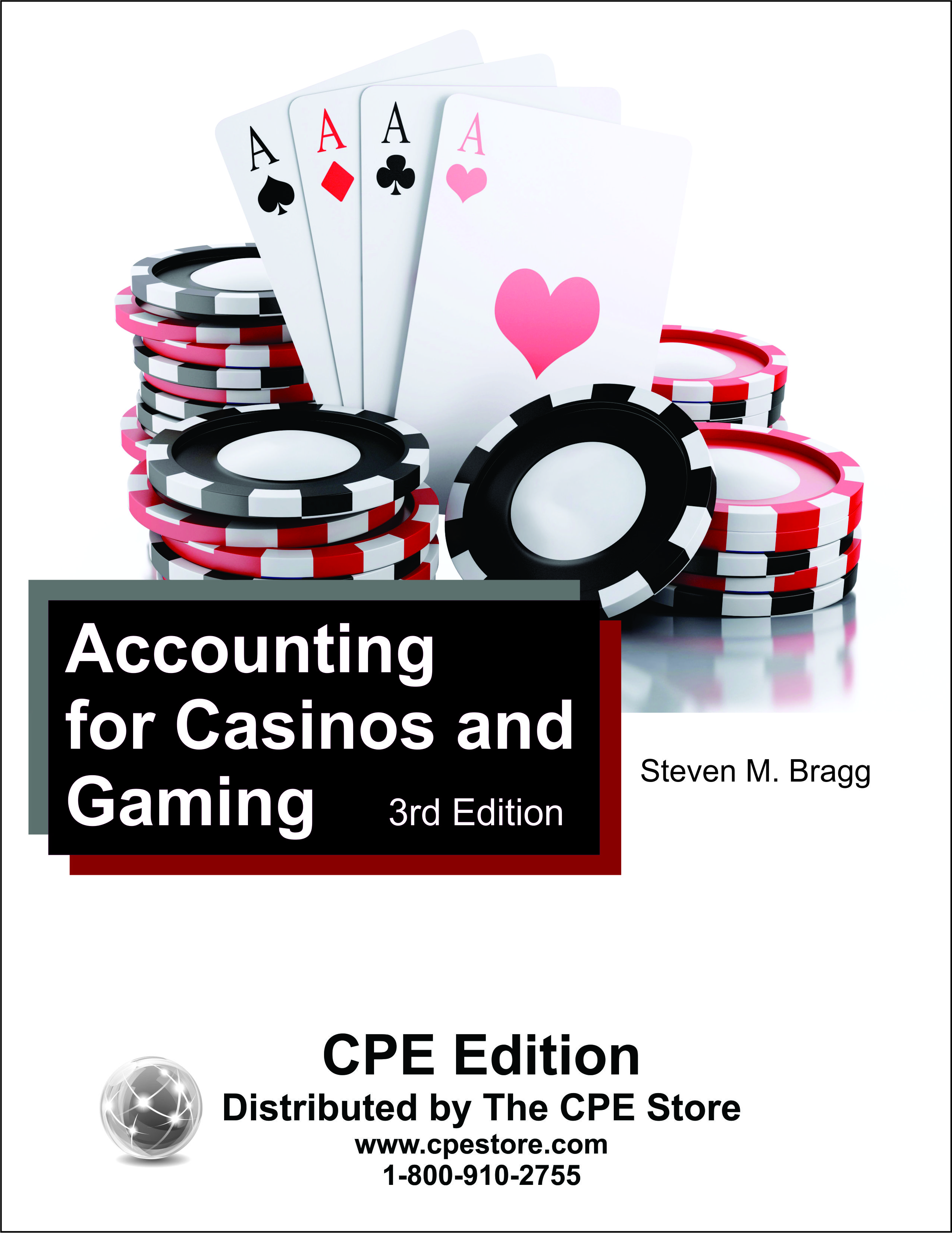
Course number: AA462703
The Accounting for Casinos and Gaming course provides an overview of gaming operations, and describes those accounting issues most relevant to a gaming entity. Topics covered include the accounting for loyalty and incentive programs, jackpots, chips and tokens, licensing fees, payroll, marker collections, fixed assets, and interest capitalization. The course also addresses gaming controls and federal reporting requirements. Course level: Basic. Prerequisites: None. Course includes integrated text and study guide, final exam, and grading service.NASBA field of study: Accounting Course credit: 10 hours
Printed Version$79
PDF$79
Colleague Test(s)$30
Contents
Accounting for Churches
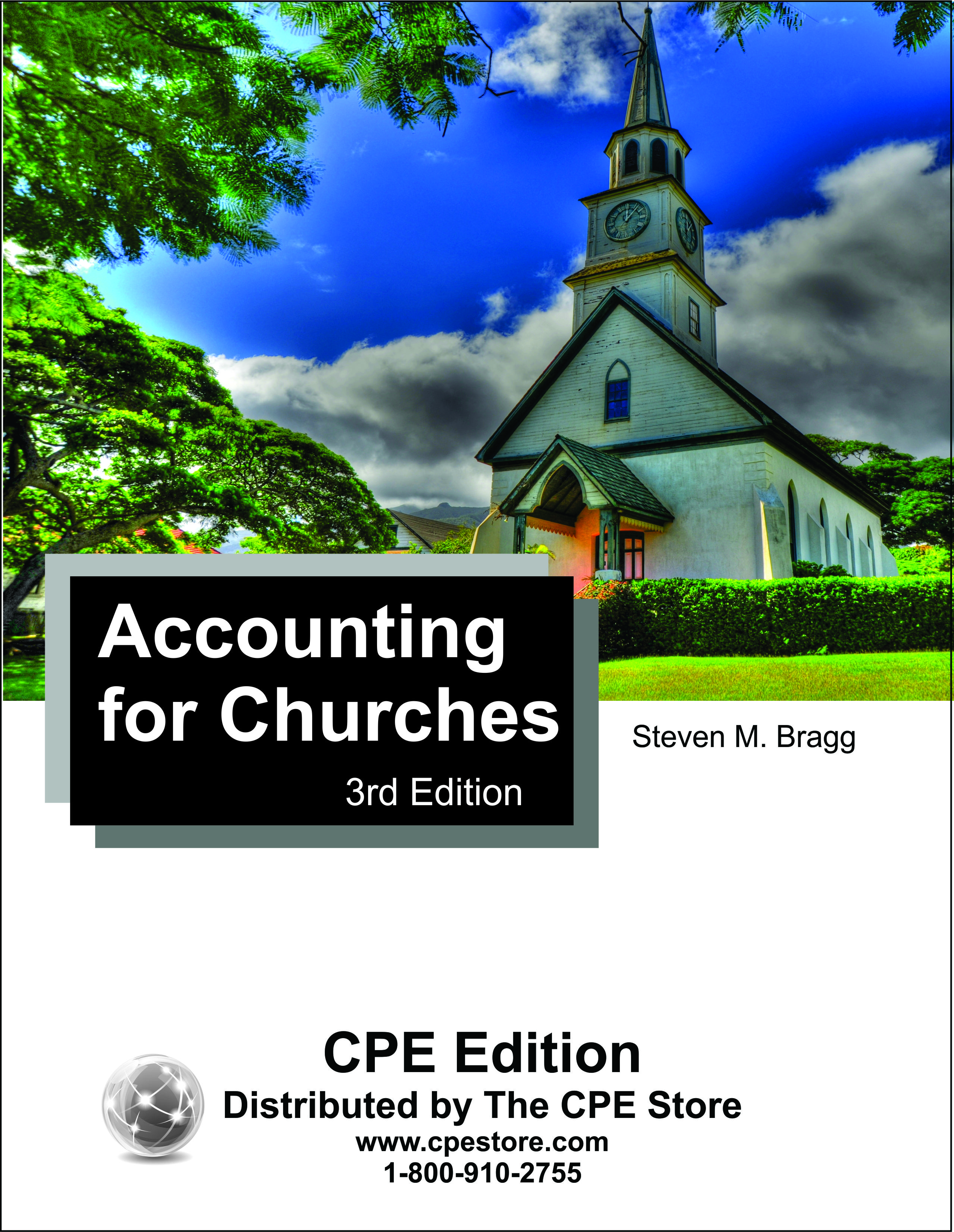
Course number: AA412203
The accounting for a church can be fairly difficult, since it must deal with large numbers of donations, track multiple programs, account for significant fixed assets, and work within special taxation rules. In the Accounting for Churches course, we show how to deal with all of these issues, while also covering payroll, payables, budgeting, closing the books, document retention, accounting controls, and much more. In short, this course is the comprehensive reference for how to account for churches. Course level: Basic. Prerequisites: None. Course includes integrated text and study guide, final exam, and grading service.NASBA field of study: Accounting Course credit: 4 hours
Printed Version$39
PDF$39
Colleague Test(s)$15
Contents
Accounting for Derivatives and Hedges

Course number: AA452803
Accounting for Derivatives and Hedges describes a number of derivatives that can be used to mitigate certain types of risk, with an emphasis on how these derivatives are deployed. The course also notes the accounting, controls, and disclosures for derivatives and hedges, with specific emphasis on cash flow hedges and fair value hedges. Course level: Basic. Prerequisites: None. Course includes integrated text and study guide, final exam, and grading service.NASBA field of study: Accounting Course credit: 3 hours
Printed Version$29
PDF$29
Colleague Test(s)$15
Contents
Accounting for Earnings per Share
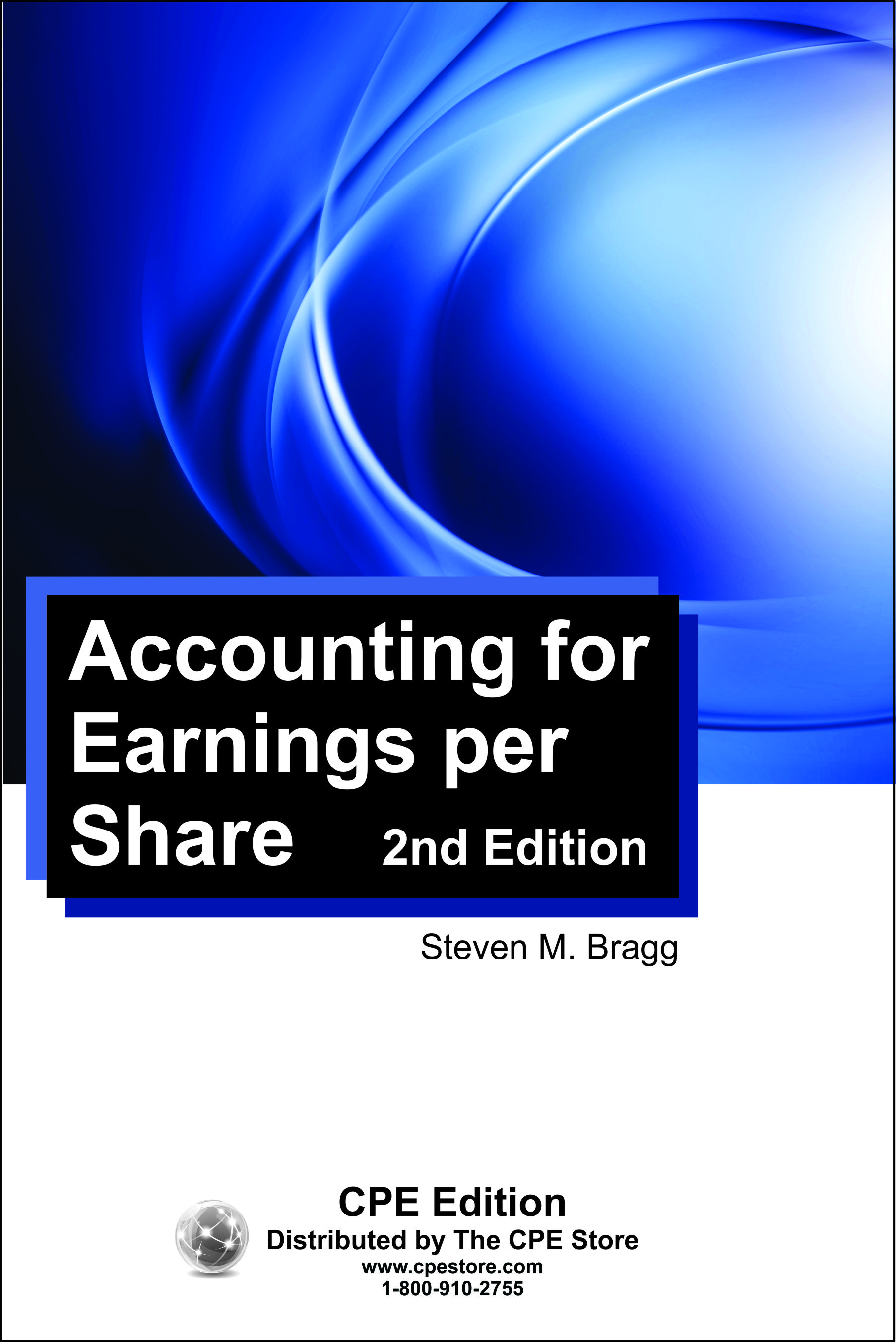
Course number: AA456802
Earnings per share information must be included in the financial statements of a public company. Accounting for Earnings per Share walks you through the process of calculating this information. It does so by describing the requirements for calculating and presenting basic earnings per share and diluted earnings per share. It also addresses the calculation methods used to derive earnings per share, including the treasury stock method, reverse treasury stock method, and two-class method. In short, this course is a handy ongoing reference for anyone who has to calculate earnings per share information on a regular basis. Course level: Basic. Prerequisites: None. Course includes integrated text and study guide, final exam and grading service.NASBA field of study: Accounting Course credit: 1 hour
Printed Version$19
PDF$19
Colleague Test(s)$12
Contents
Accounting for Hedge Funds
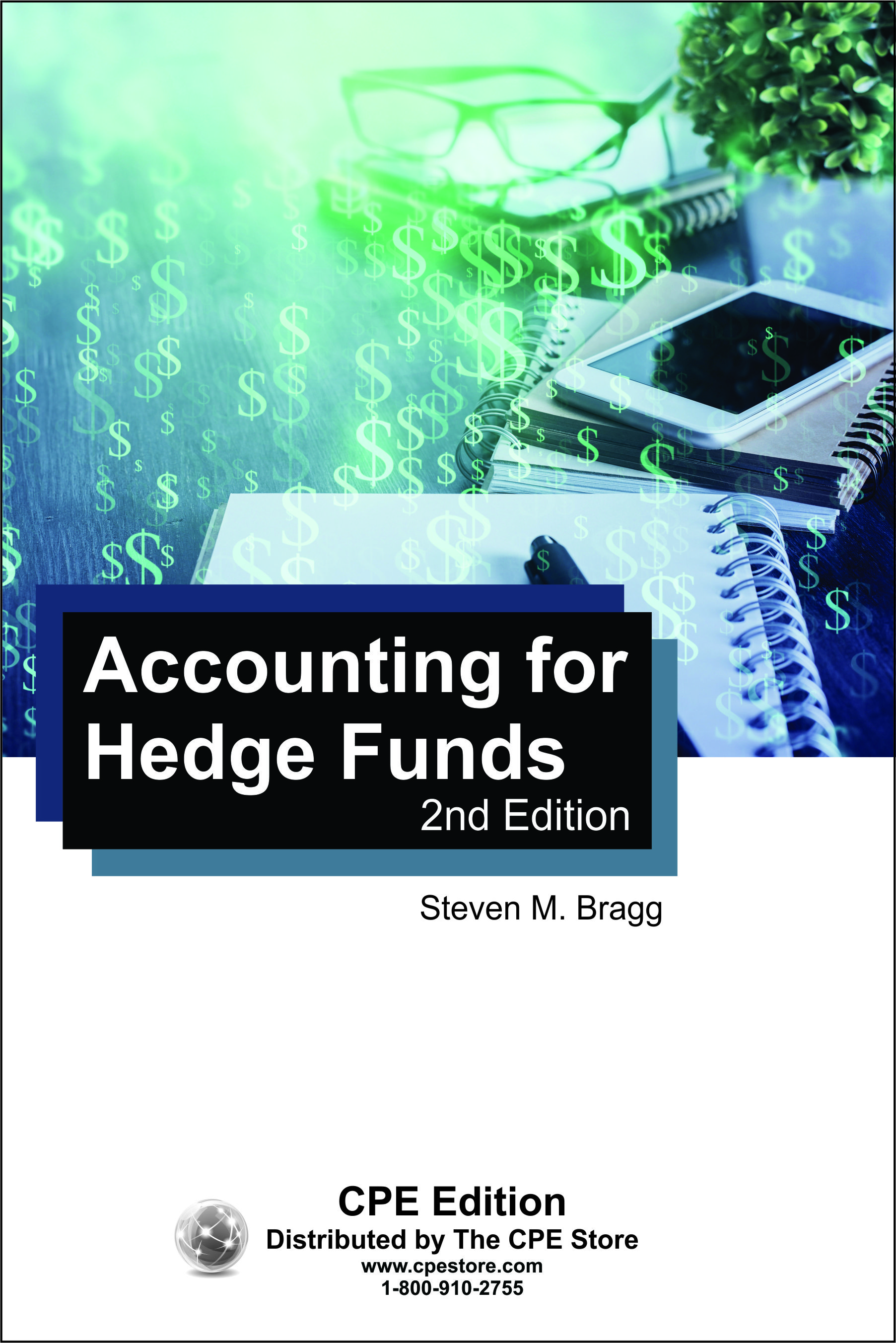
Course number: AA446202
A hedge fund has a number of unique operating and reporting characteristics that present special challenges for the accountant. In the Accounting for Hedge Funds course, we discuss how to deal with these challenges – including the proper accounting for a fund’s investment portfolio, how to calculate and reconcile net asset value, account for investor transactions, and deal with side pocket investments. Course level: Basic. Prerequisites: None. Course includes integrated text and study guide, final exam, and grading service.NASBA field of study: Accounting Course credit: 1 hour
Printed Version$19
PDF$19
Colleague Test(s)$12
Contents
Accounting for Homeowners' Associations
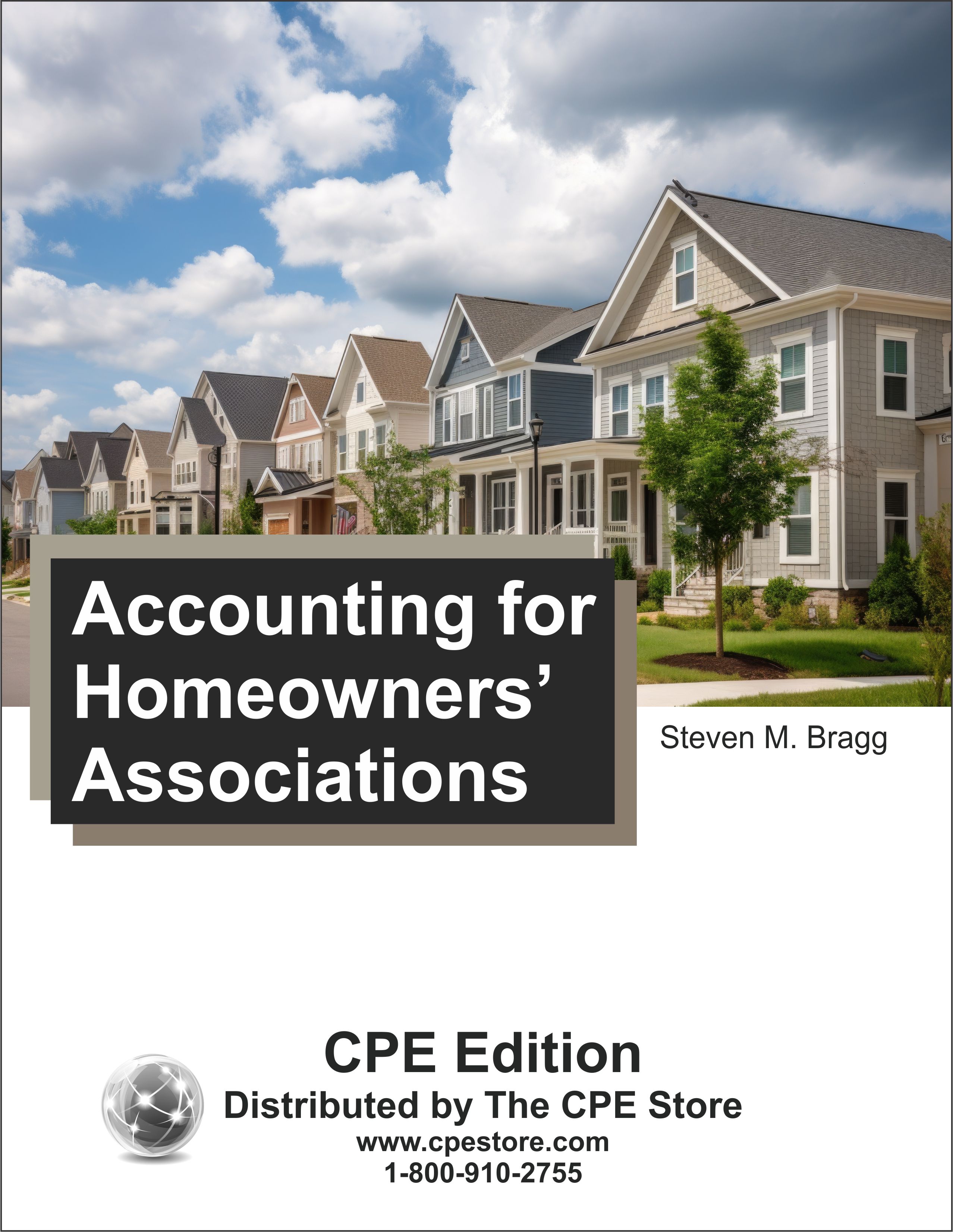
Course number: AA412101
The accounting for and reporting of transactions for a homeowners’ association, as well as other common interest realty associations, is quite extensive. In the Accounting for Homeowners’ Associations course, we cover all aspects of the accounting for many types of common interest realty associations, with an emphasis on homeowners’ associations. The course addresses the accounting for all types of assets, liabilities, revenues, and expenses, as well as financial statements, disclosures, and controls. Course level: Basic. Prerequisites: None. Course includes integrated text and study guide, final exam, and grading service.NASBA field of study: Accounting Course credit: 3 hours
Printed Version$29
PDF$29
Colleague Test(s)$15
Contents
Accounting for Income Taxes
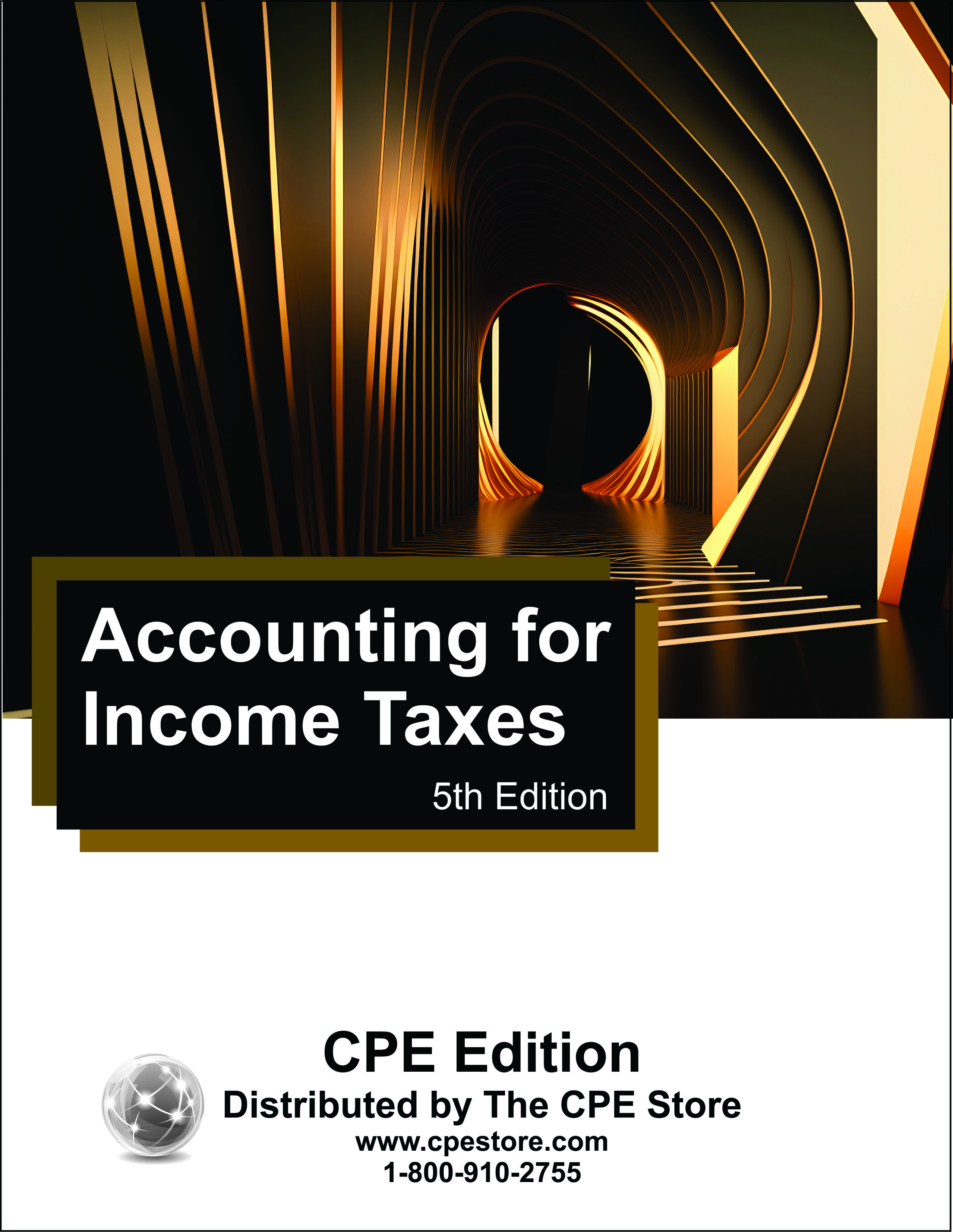
Course number: AA772305
Accounting for income taxes is one of the more challenging topics of financial accounting. Corporations must file an income tax return following the guidelines developed by the IRS. Because GAAP and tax regulations differ in several ways, so frequently do pretax financial income and taxable income. Hence, the amount that a company reports as tax expense will differ from the amount of taxes payable to the IRS. Those differences produce a complex accounting standard. Tax-related restatement is one of the leading causes of financial restatements. This course is designed to help you navigate the complexities of income taxes. It identifies ASC 740 Income Taxes accounting and financial reporting requirements for the effects of taxes based on income. It describes the basic principles such as the asset and liability method, tax positions assessment, and the effect of temporary differences. It explains how to assess whether a valuation allowance is necessary for its deferred tax assets. It also covers key concepts such as asset acquisition, intraperiod allocations, and interim reporting related to income taxes. Finally, it addresses financial statement presentation and disclosure. Specific examples are included to illustrate the application. Relevant references to and excerpts from ASC 740 are discussed throughout the course. Course level: Basic. Prerequisites: None. Course includes integrated text and study guide, final exam and grading service.NASBA field of study: Accounting Course credit: 6 hours
Printed Version$59
PDF$59
Colleague Test(s)$20
Contents
Accounting for Inventory
On Sale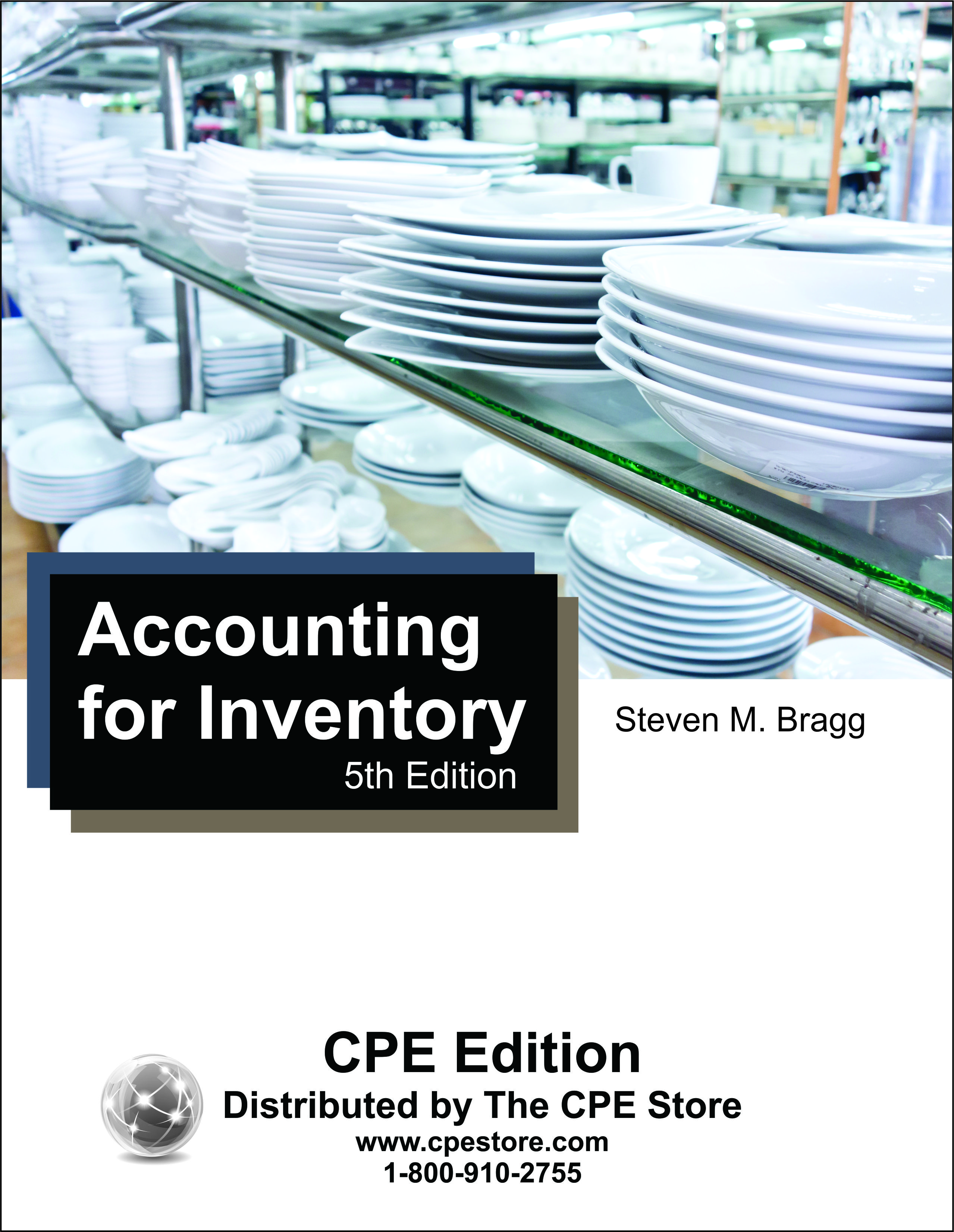
Course number: AA440305
Presents every issue that the accountant might need to create and maintain a comprehensive system of inventory accounting. Topics covered include periodic vs. perpetual inventory systems, inventory counting and reconciliation, estimating ending inventory, cost layering, standard costing, job costing, process control, overhead allocation, the lower of cost or market rule, obsolete inventory, spoilage, rework, scrap, disclosures, transfer pricing, controls, fraudulent inventory transactions, budgeting, measurements, sample journal entries, and much more. Course level: Basic. Prerequisites: None. Course includes integrated text and study guide, final exam and grading service.NASBA field of study: Accounting Course credit: 15 hours
Printed Version$92
PDF$92
Colleague Test(s)$45
Contents
Accounting for Investments
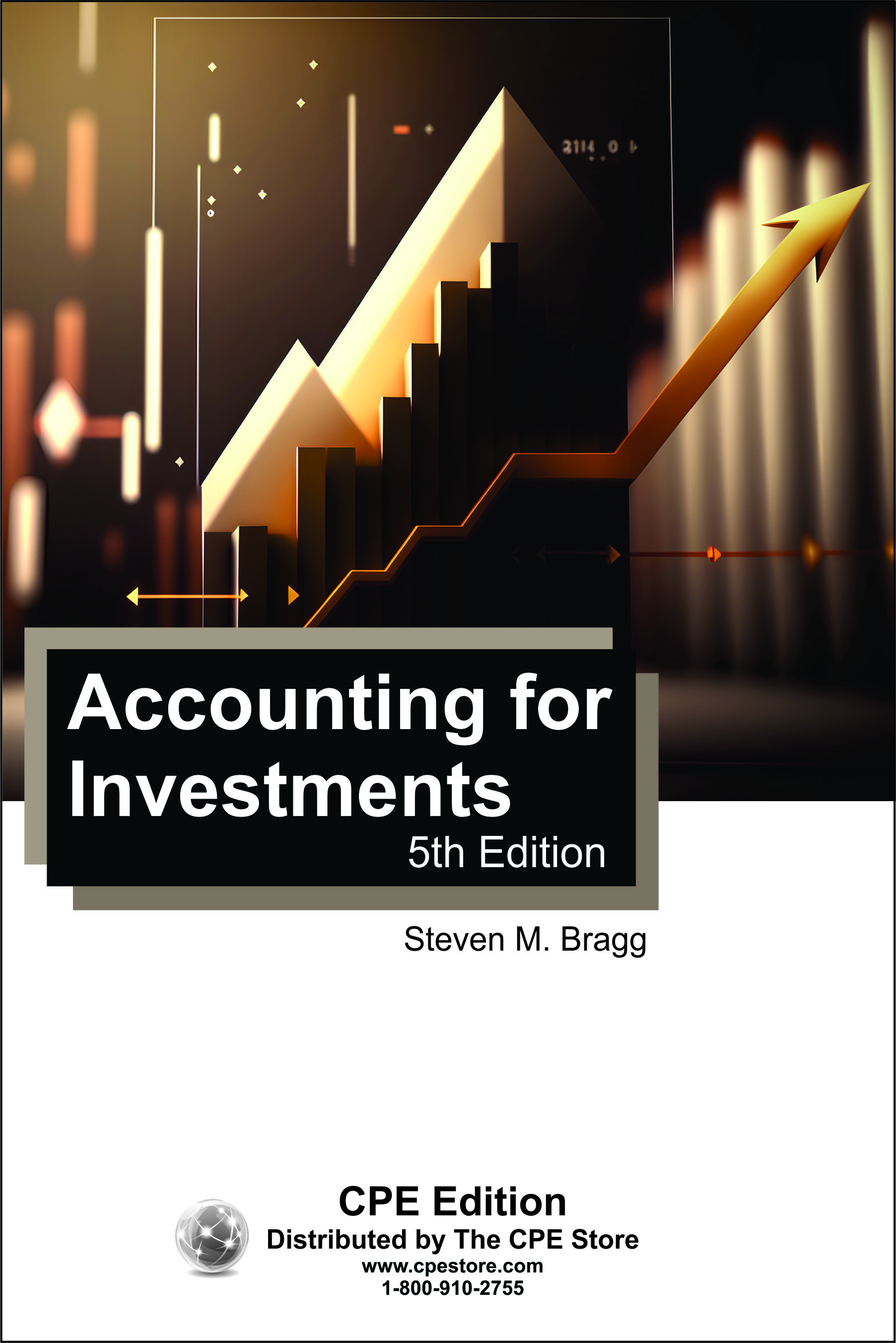
Course number: AA447505
Accounting for Investments describes how the accounting varies for each type of investment classification, notes the treatment of impaired assets, how to deal with realized and unrealized gains and losses, and the treatment of other accounting concepts. The course also describes the controls, forms, and procedures needed to effectively manage investments. Course level: Basic. Prerequisites: None. Course includes integrated text and study guide, final exam, and grading service.NASBA field of study: Accounting Course credit: 3 hours
Printed Version$29
PDF$29
Colleague Test(s)$15
Contents
Accounting for Leases
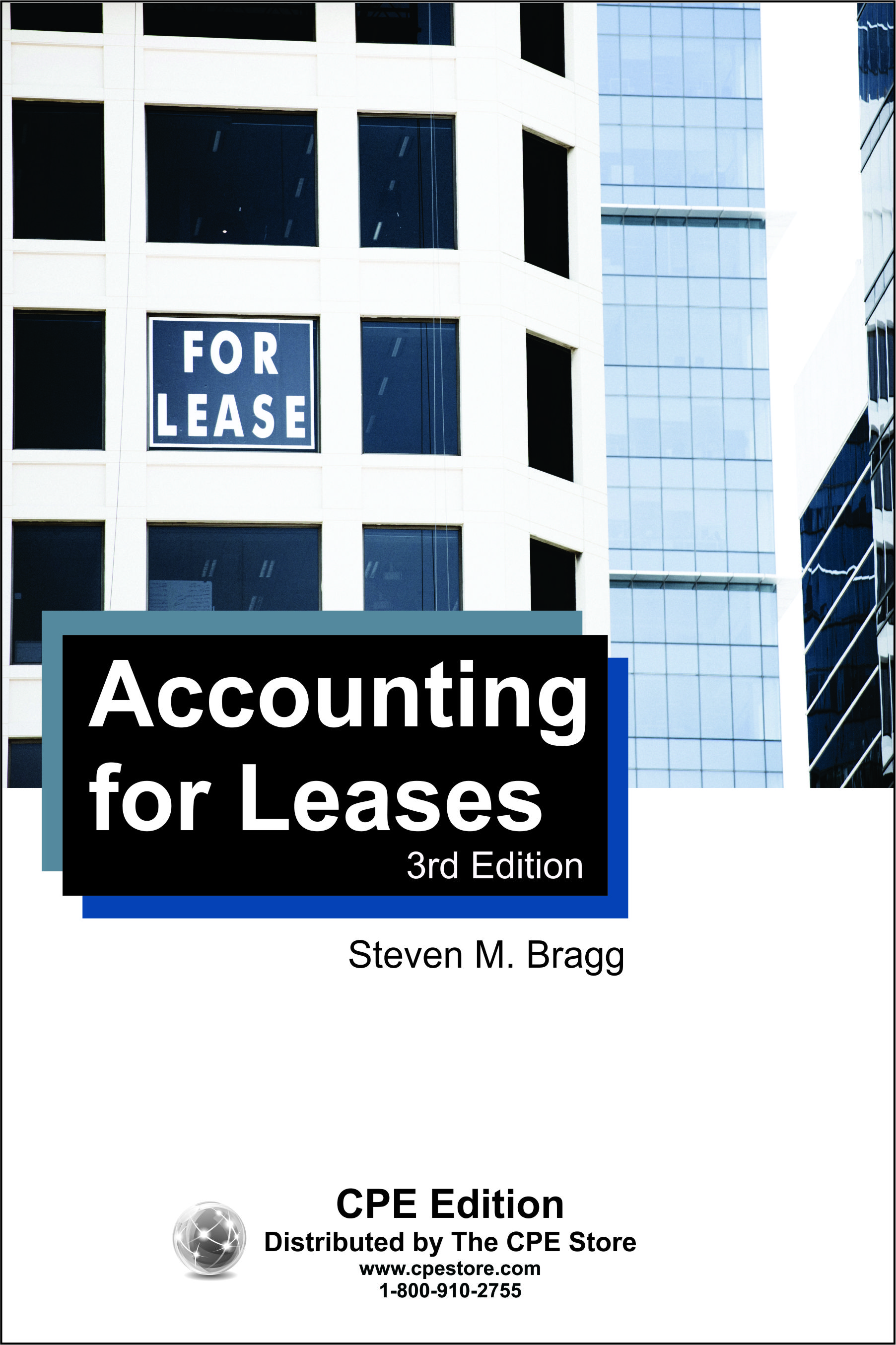
Course number: AA464503
The Accounting for Leases course discusses the different components of leases, the types of leases that may be used by a lessee and lessor, and the accounting for each type of lease. The course also addresses how lease liabilities and right-of-use assets are calculated and presented in the financial statements. A number of additional topics are addressed, including the treatment of initial direct costs, sale and leaseback transactions, and lease-related disclosures. Course level: Basic. Prerequisites: None. Course includes integrated text and study guide, final exam, and grading service.NASBA field of study: Accounting Course credit: 2 hours
Printed Version$19
PDF$19
Colleague Test(s)$12
Contents
Accounting for Managers
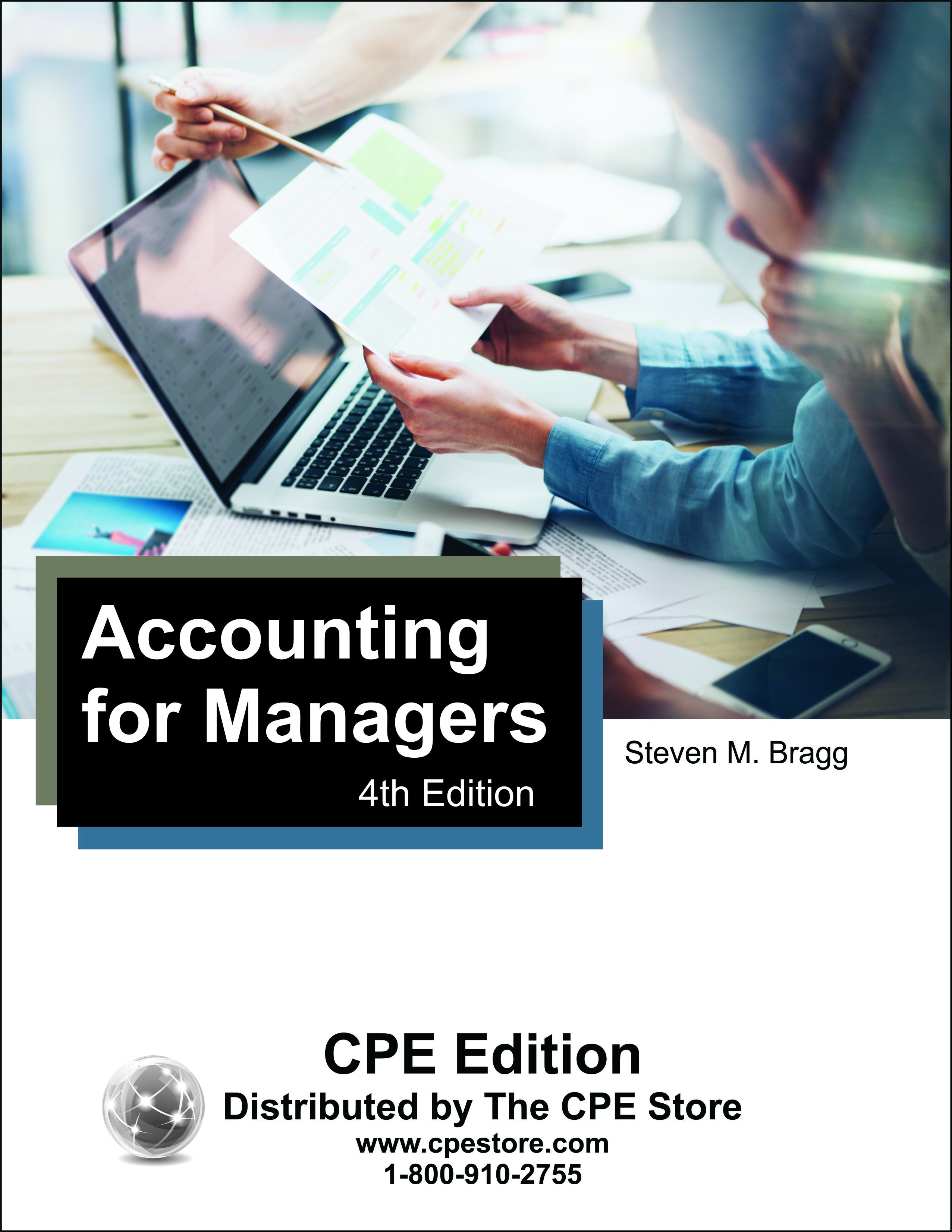
Course number: AA440704
Describes how accounting transactions are compiled into financial statements and how information about company performance can be extracted from those statements. Includes: an overview of the financial statements, interpreting financial statements using ratios, evaluation of responsibility centers, an overview of selected accounting standards, sales and marketing decisions, human resources decisions, investment decisions, acquisition decisions, cost accounting tools and concepts, target costing, constraint analysis, budgeting concepts and controls, and more. Course level: Basic. Prerequisites: None. Course includes integrated text and study guide, final exam, and grading service.NASBA field of study: Accounting Course credit: 18 hours
Printed Version$119
PDF$119
Colleague Test(s)$55
Contents
Accounting for Stock-Based Compensation
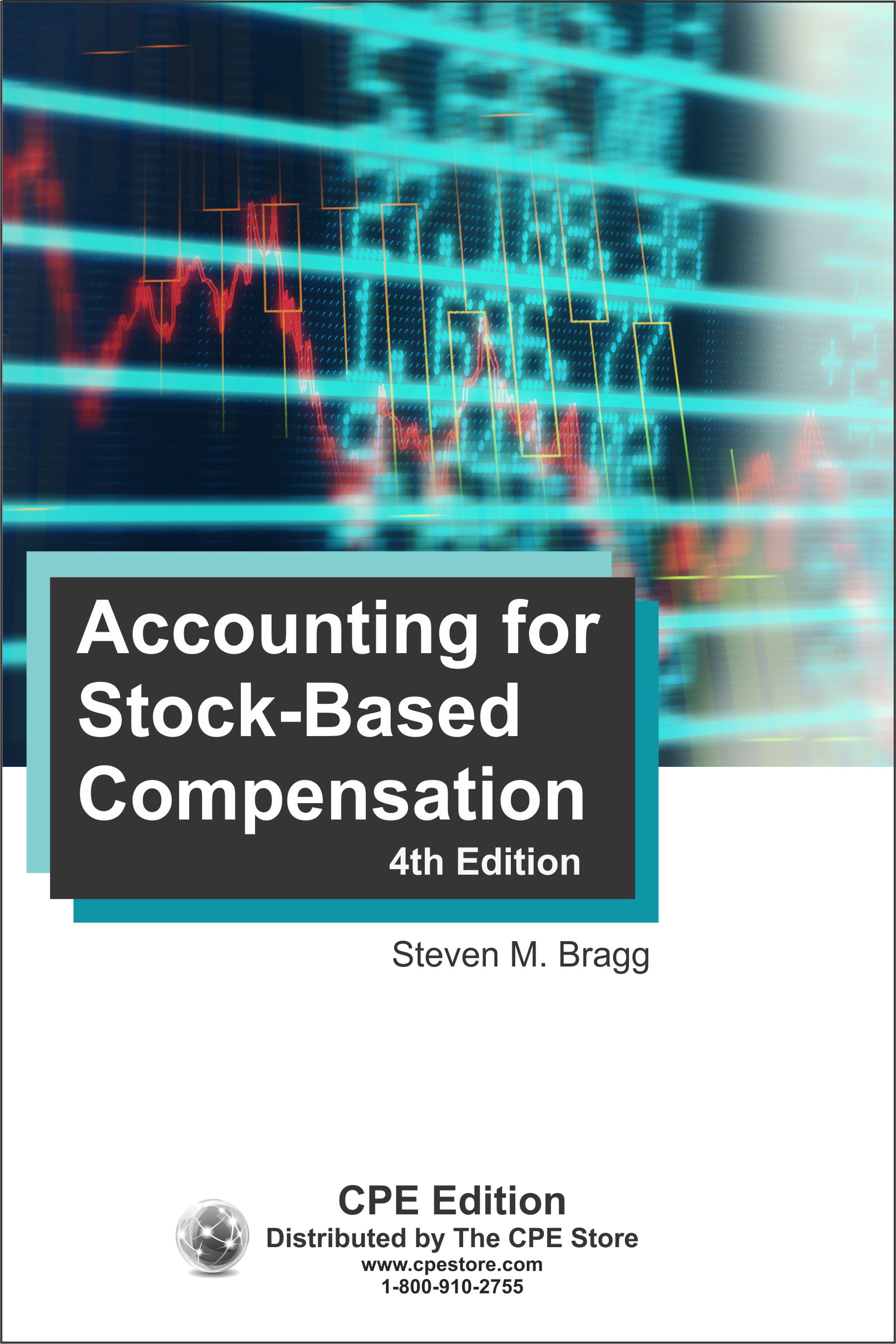
Course number: AA458404
The Accounting for Stock-Based Compensation course describes the treatment of equity-based compensation that is paid to employees and outsiders. The valuation and expense recognition for these stock awards is discussed, along with the related concepts of employee stock ownership plans and employee share purchase plans. In addition, the views of the Securities and Exchange Commission in regard to this topic are summarized. Course level: Basic. Prerequisites: None. Course includes integrated text and study guide, final exam and grading service.NASBA field of study: Accounting Course credit: 2 hours
Printed Version$19
PDF$19
Colleague Test(s)$12
Contents
Accounting Information Systems
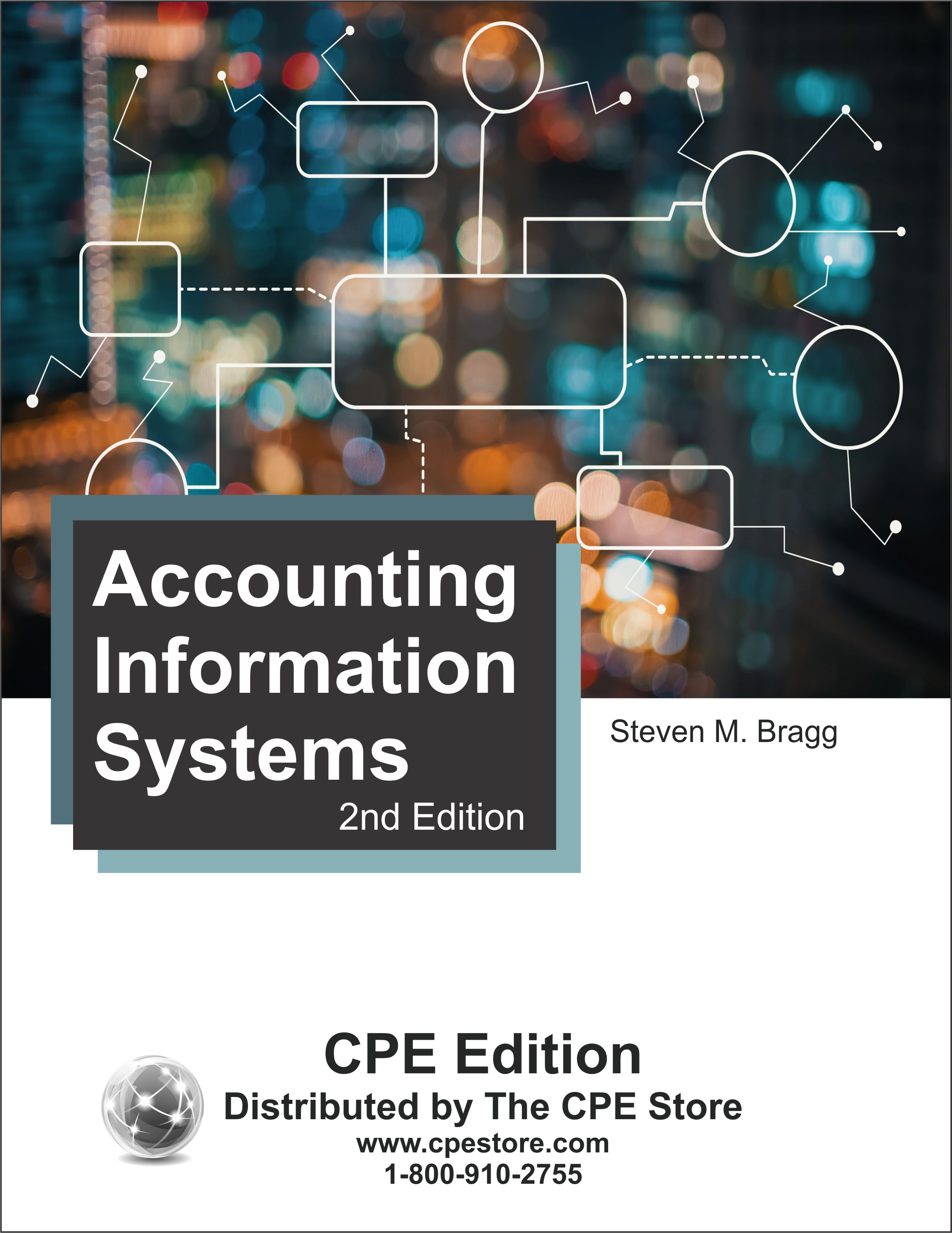
Course number: AA431402
The practicing accountant should have a thorough knowledge of the processes within an accounting system. Otherwise, it would not be possible to create a system of controls, write procedures, understand where errors are originating, or develop new systems. The Accounting Information Systems course provides the deep background needed to gain proficiency in this area. The course also examines how transactions are recorded and roll up into the general ledger and financial statements. In addition, there is significant treatment of the many controls integrated into accounting systems, as well as how someone could fraudulently penetrate an accounting system. Finally, the course describes the key events in the process of developing and installing a new system. In short, this course is the essential source book for the accountant who wants to understand the core functions of an accounting information system. Course level: Basic. Prerequisites: None. Course includes integrated text and study guide, final exam and grading service.NASBA field of study: Accounting Course credit: 13 hours
Printed Version$99
PDF$99
Colleague Test(s)$40
Contents
Accounting Procedures
On Sale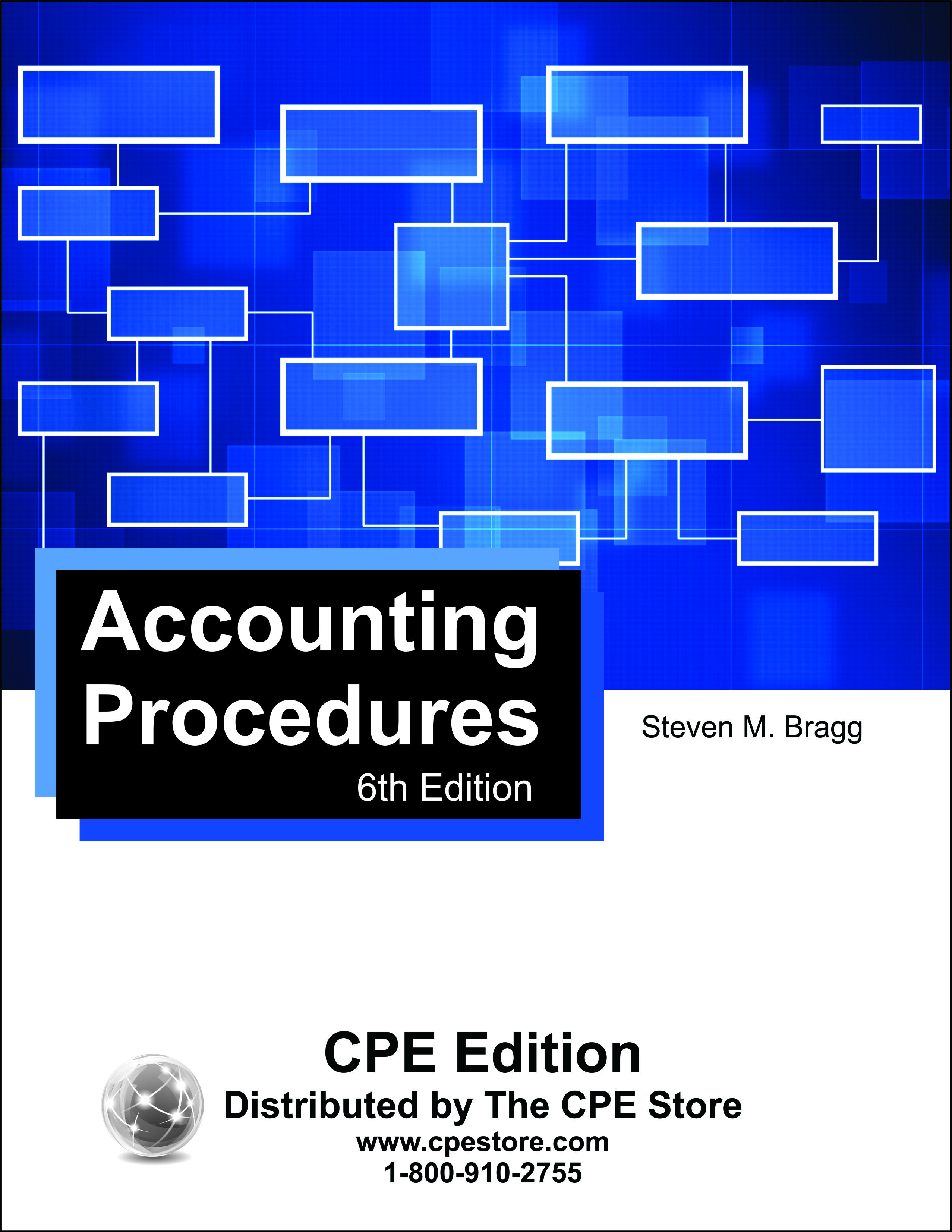
Course number: AA415206
This course contains the detailed procedures and forms needed for every accounting system, from accounts payable to treasury, as well as for such operational areas as order entry, shipping, purchasing, and receiving. Procedures are separately stated for manual and computerized accounting systems. The course also addresses how to create and enforce procedures, as well as when to update them. In short, this course provides the baseline policy and procedure information needed to enhance the operations of any business. Course level: Basic. Prerequisites: None. Course includes integrated text and study guide, final exam, and grading service.NASBA field of study: Accounting Course credit: 12 hours
Printed Version$76
PDF$76
Colleague Test(s)$35
Contents
Agricultural Accounting
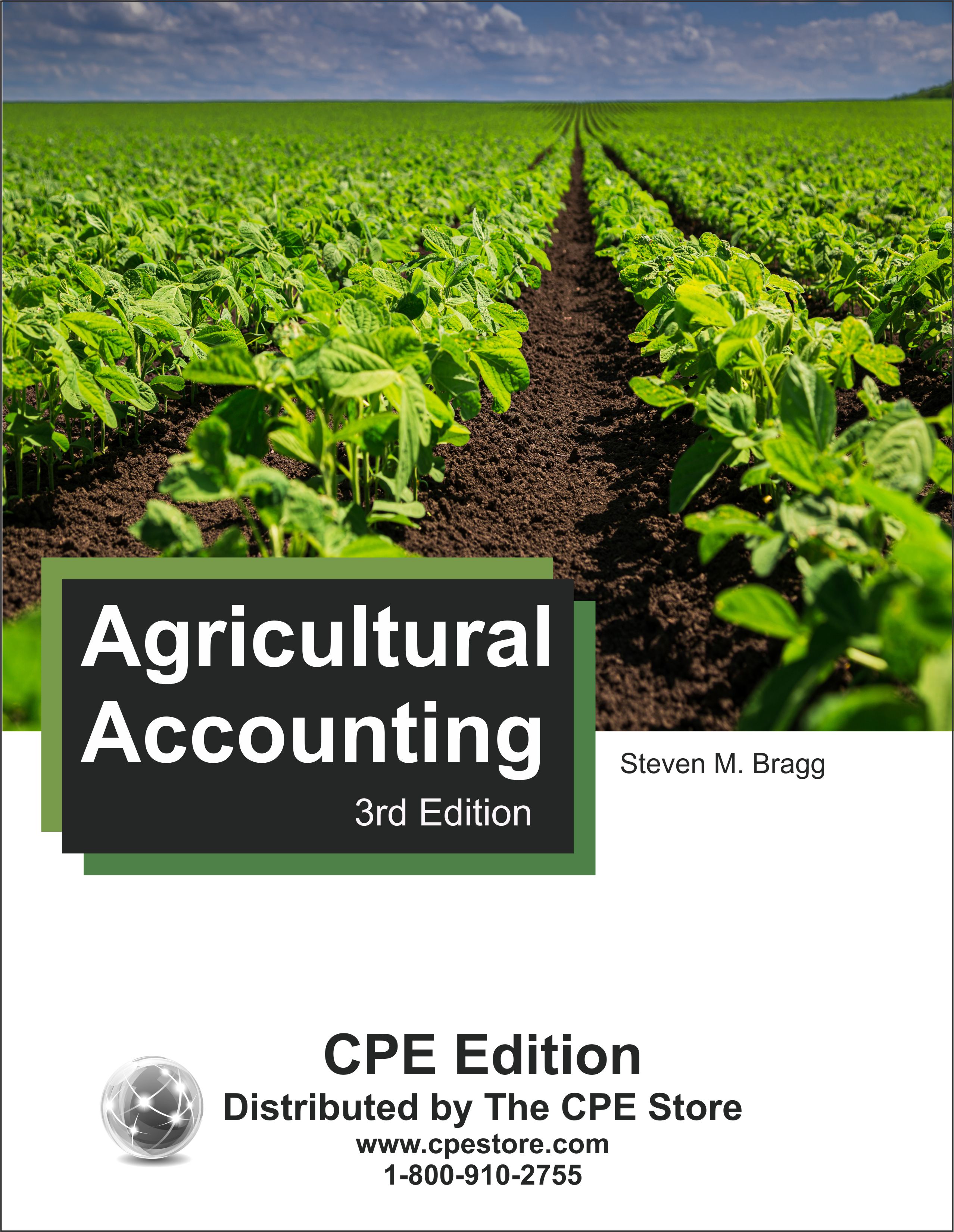
Course number: AA482803
This course addresses every aspect of the accounting that one might encounter in a farm, ranch, or related business. The intent is to not only explain accounting concepts, but also to provide examples and show how an accounting system can be constructed and operated. The course pays particular attention to unique aspects of agricultural accounting that are not encountered in other industries, including special valuation rules for inventory, hedging transactions, dealing with cooperatives, and recording noncurrent farm assets. Course level: Basic. Prerequisites: None. Course includes integrated text and study guide, final exam, and grading service.NASBA field of study: Accounting Course credit: 10 hours
Printed Version$79
PDF$79
Colleague Test(s)$30
Contents
Analyzing Cost Data for Management
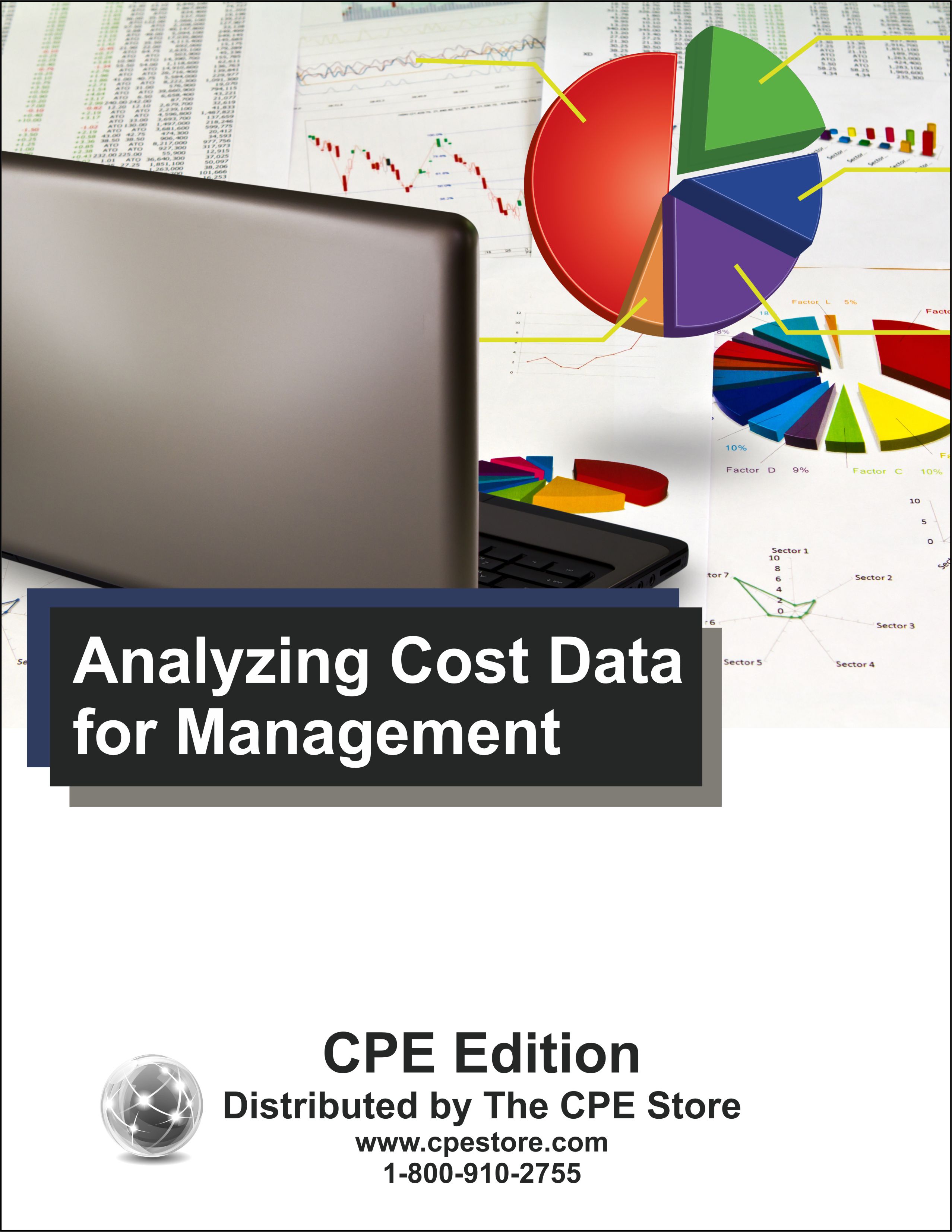
Course number: AA720901
This course covers the managerial use of accounting, financial, and operating data for planning, control, and decision making. The course is designed for managers and entrepreneurs who need hands-on knowledge and tools in processing, developing, and analyzing financial, cost, and business data for managerial use. Topics include strategic cost management, analysis of costs; break-even and contribution analysis; cost behavior analysis; activity-based costing (ABC); responsibility accounting and corporate balanced scorecard (CBS); budget for profit planning; short-term decisions; capital budgeting. Course Level: Basic. Prerequisites: None. Course includes integrated text and study guide, final exam, and grading service.NASBA field of study: Accounting Course credit: 9 hours
Printed Version$69
PDF$69
Colleague Test(s)$30
Contents
Auditing and Other Assurance Services
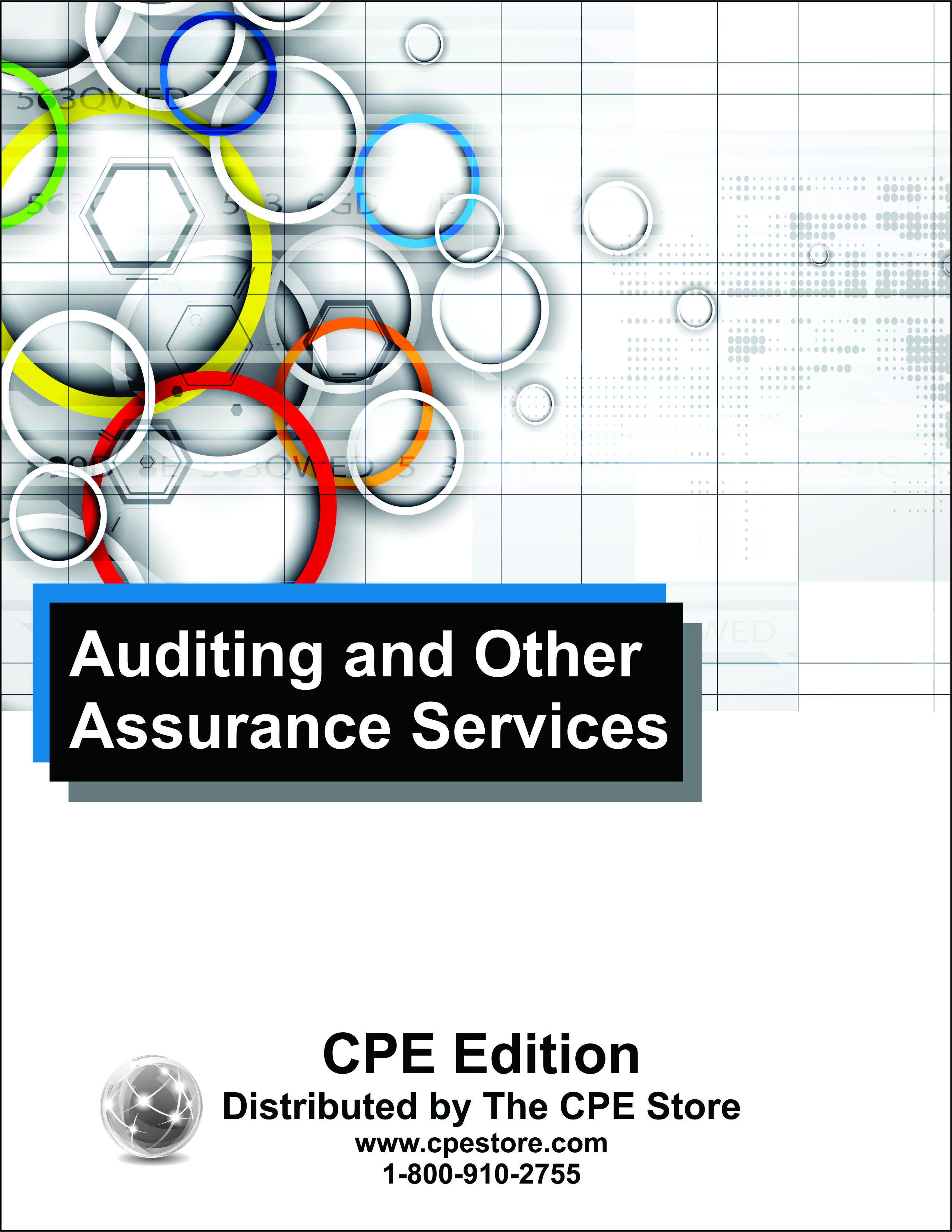
Course number: AA958201
Auditing and assurance services are important services provided by CPAs. This course will identify the different types of audits and the different types of assurance services. It will also define the importance of ethics in the CPA and auditing professions. This course will describe the different organizations that create and enforce ethical guidelines. Finally, this course will describe the importance of independence for auditors. Course level: Basic. Prerequisites: None. Course includes integrated text and study guide, final exam, and grading service.NASBA field of study: Auditing Course credit: 4 hours
Printed Version$39
PDF$39
Colleague Test(s)$15
Contents
Auditing Developments
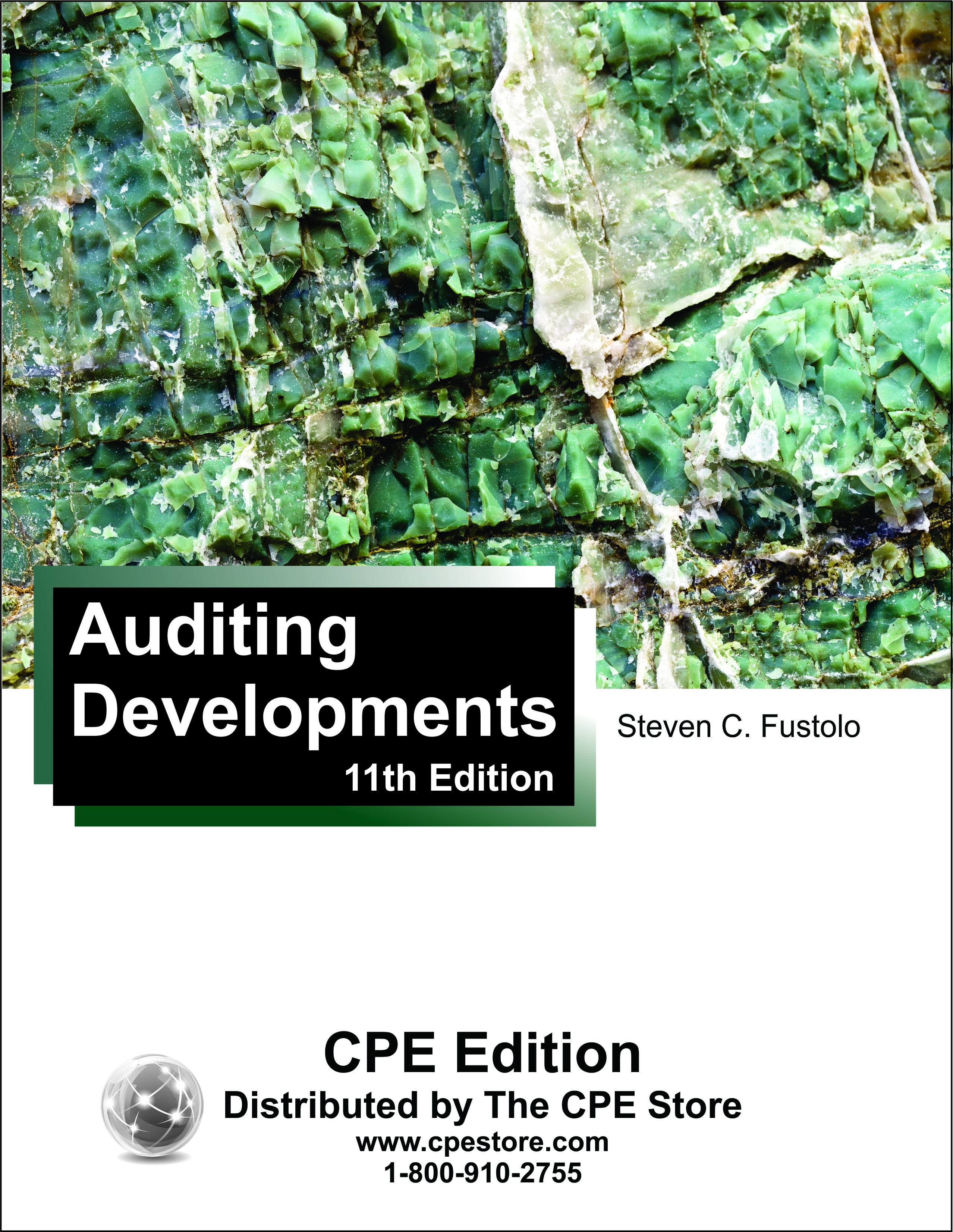
Course number: AA771411
Part of planning an audit involves consideration of the business and economic environment in which the client operates. To deal with the volatility in the business climate, auditors should focus their efforts in key areas and should take lessons from litigation. The objective of this course is to address the latest developments affecting audit engagements, including accounting and auditing engagement issues during post-COVID-19 and the impact of the pandemic on an entity’s ability to continue as a going-concern. This course provides an overview of auditing estimates and audit evidence, and changes made to the auditor’s understanding of the entity and its environment, risk assessment procedures, using the work of specialists as audit evidence, changes to compliance audits, and more. These changes are found in the newly issued SAS Nos. 142–149. Course level: Basic. Prerequisites: None. Course includes integrated text and study guide, final exam and grading service.NASBA field of study: Auditing Course credit: 16 hours
Printed Version$119
PDF$119
Colleague Test(s)$50
Contents
Auditing Nonprofit Entities
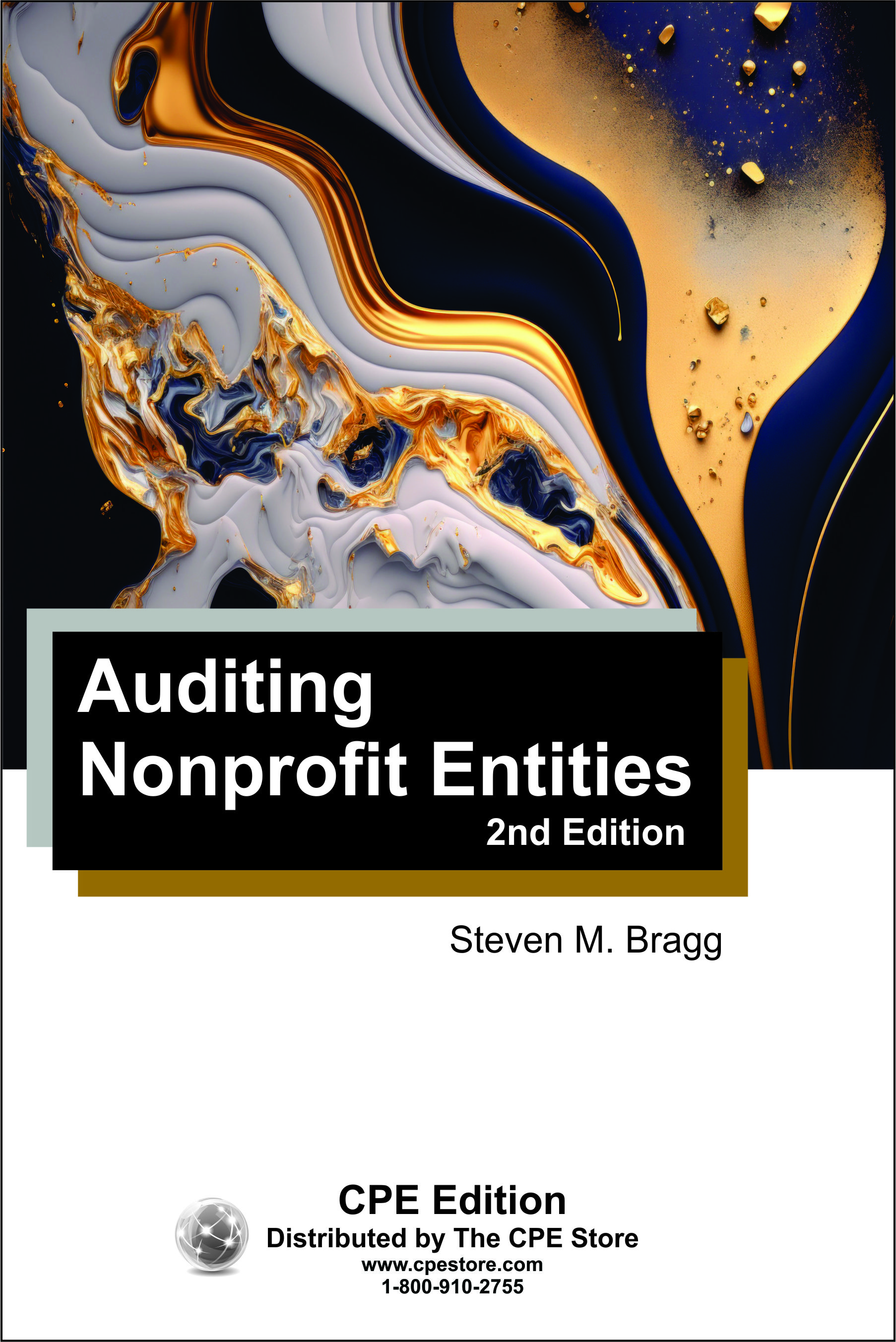
Course number: AA422702
Nonprofit entities present significant auditing challenges, since their reported results are closely tied to the nature of the contributions they receive, donor restrictions on the use of those contributions, and the need to present a high level of program effectiveness to donors. In the Auditing Nonprofit Entities course, we examine how the auditor can navigate these challenges by delving into nonprofit controls, as well as audit procedures that are specific to the industry. Particular attention is paid to the auditing of contributions, donor restrictions, endowment funds, fund-raising expenses, and split-interest agreements. Course level: Basic. Prerequisites: None. Course includes integrated text and study guide, final exam, and grading service.NASBA field of study: Auditing Course credit: 3 hours
Printed Version$29
PDF$29
Colleague Test(s)$15
Contents
Auditing State and Local Governments
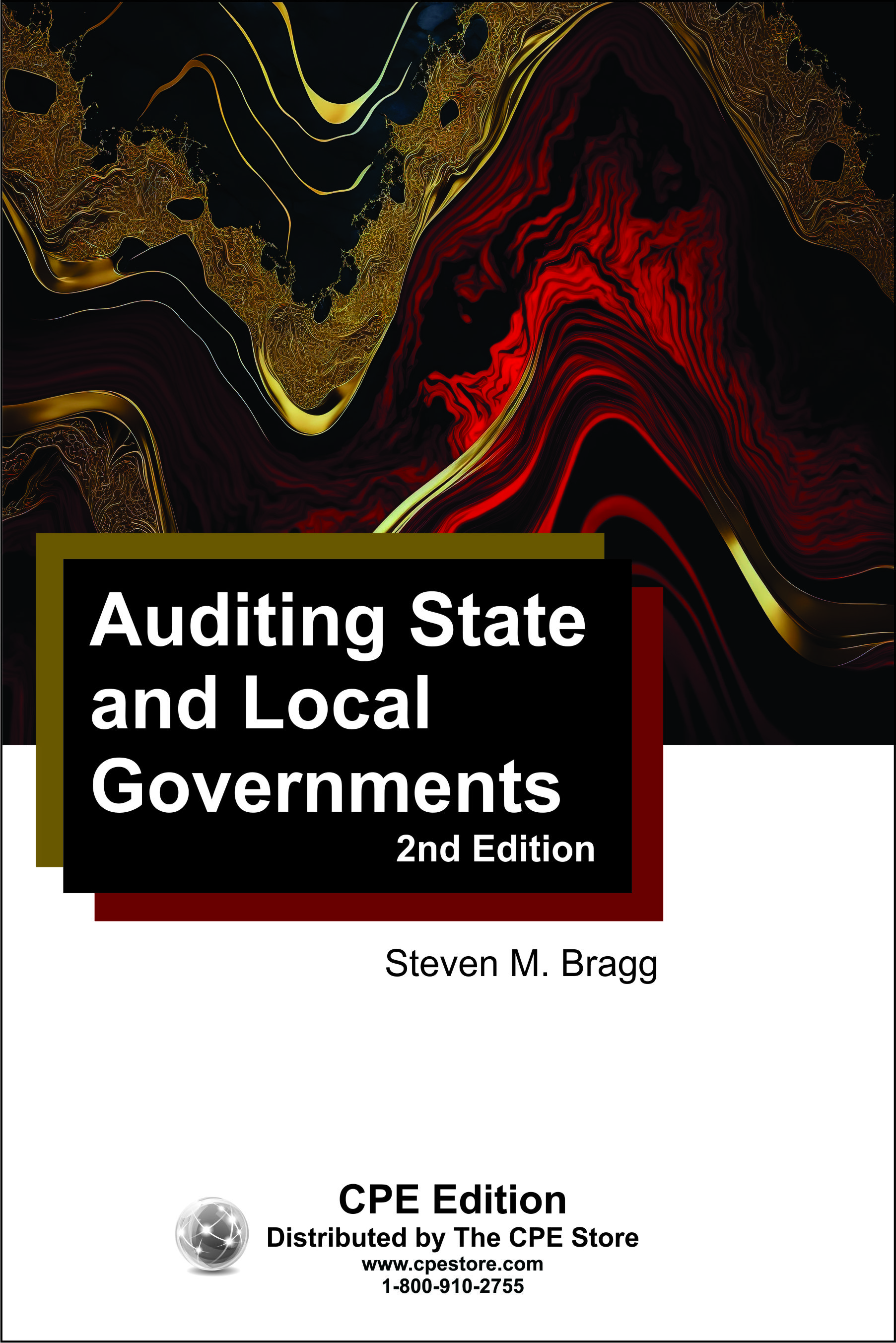
Course number: AA421802
Government entities present significant auditing challenges, since they may operate a multitude of funds, deal with grant funding, and account for significant infrastructure assets. In the Auditing State and Local Governments course, we examine how the auditor can navigate these challenges by delving into government controls and using targeted audit procedures. Particular attention is paid to component units, fund classifications, interfund activity, and the government budget. Course level: Basic. Prerequisites: None. Course includes integrated text and study guide, final exam, and grading service.NASBA field of study: Auditing (Governmental) Course credit: 3 hours
Printed Version$29
PDF$29
Colleague Test(s)$15
Contents
Balance Sheet: Reporting Assets
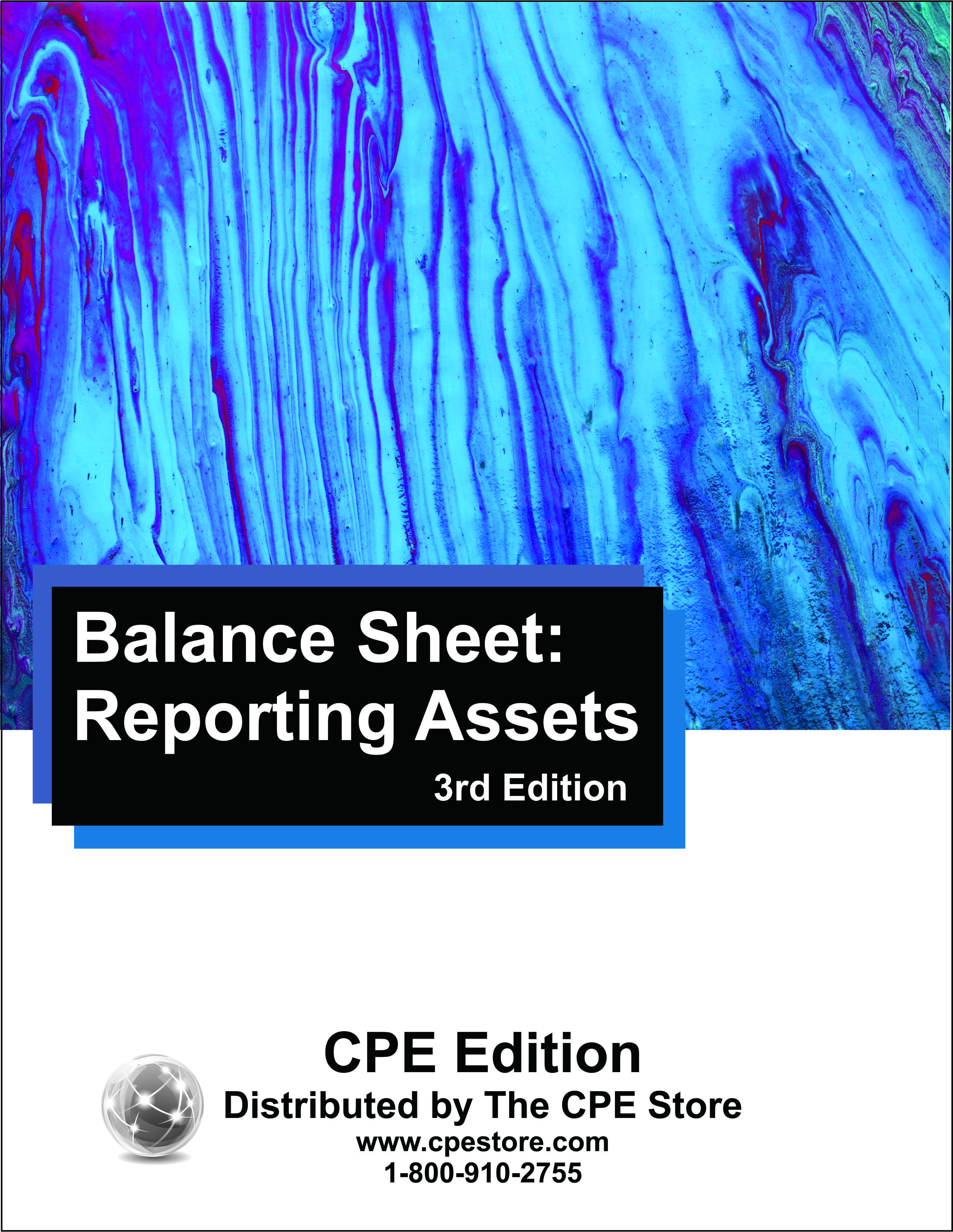
Course number: AA775703
This course discusses generally accepted accounting principles (GAAP) for reporting assets on the balance sheet. An asset is an item of economic value that is expected to yield a benefit to the owing entity in future periods. Assets are classified as being either current or noncurrent. Current assets, such as cash, accounts receivable, and prepaid expenses, are expected to be consumed within one year, while noncurrent assets, such as long-term investments, property, plant and equipment, and intangible assets, are to be consumed in more than one year. This course includes a discussion of both current and noncurrent assets. For example, promulgated GAAP for current assets is provided in ASC 210-10-45-1 through 45-4, Balance Sheet: Overall. Receivables are covered in ASC 310 Receivables comprising nonrefundable fees, loans and debt securities, and troubled debt restructurings by creditors. Guidance on the accounting and reporting of inventory is provided in ASC 330 Inventory. ASC 360 Property, Plant, and Equipment provides guidance on accounting for long-lived tangible assets such as land and land improvements, buildings, and equipment. Course level: Basic. Prerequisites: None. Course includes integrated text and study guide, final exam, and grading service.NASBA field of study: Accounting Course credit: 4 hours
Printed Version$39
PDF$39
Colleague Test(s)$15
Contents
Balance Sheet: Reporting Liabilities
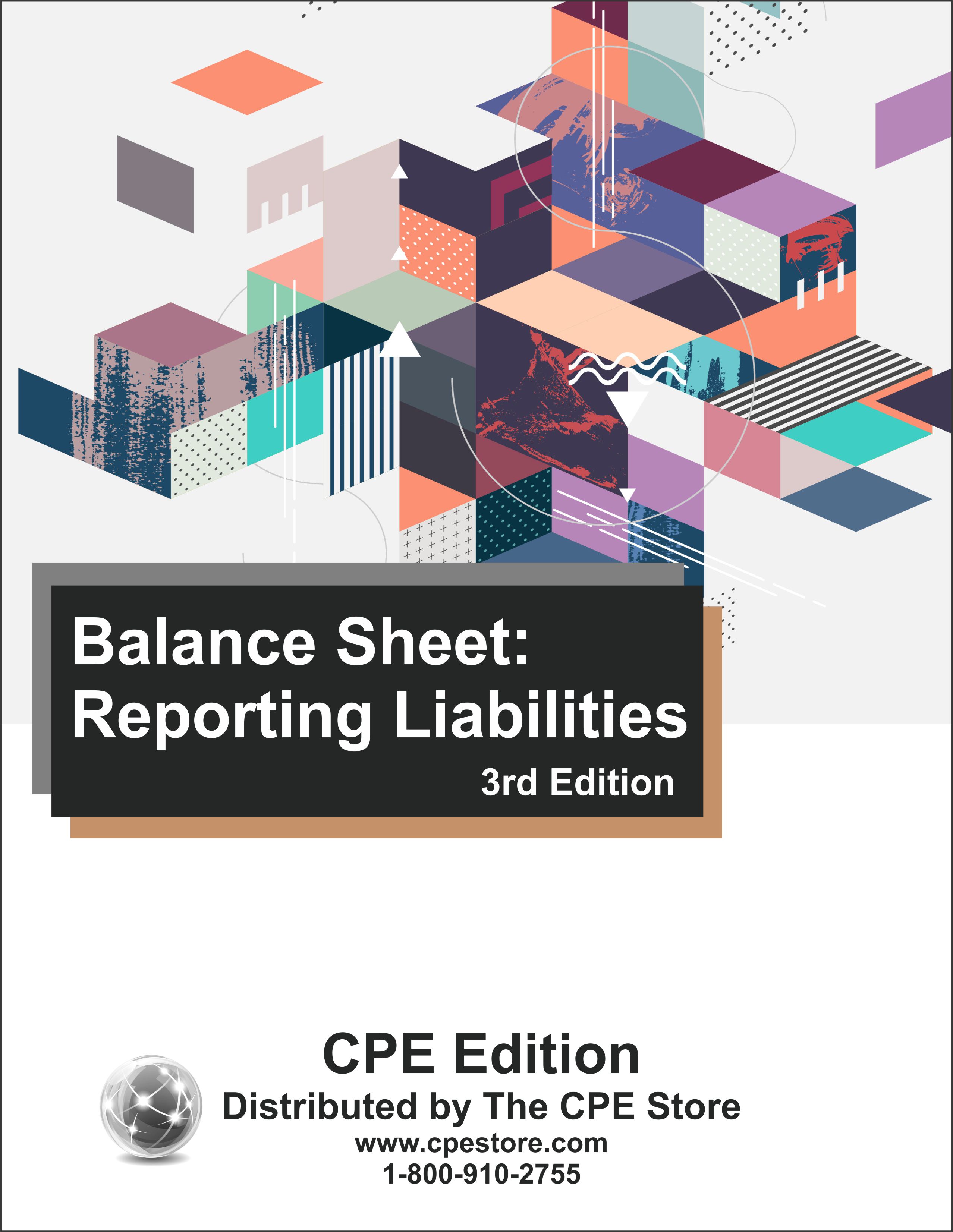
Course number: AA775903
This course discusses the accounting, reporting, and disclosures associated with both current and long-term liabilities on the balance sheet. A liability is a legal debt or obligation that arises during the course of business operations. A current liability, such as accounts payable, is payable within one year. Long-term liabilities, such as bonds payable, long-term loans, and capital leases, are obligations that are not due within one year of the date of the balance sheet. This course includes items covered in ASC 210-10-45-5 through 45-12, Balance Sheet: Overall and 470-10, Debt: Overall. Topics cover loss contingencies, compensated absences, termination benefits, troubled debt restructuring, refinancing of current to noncurrent debt, callable obligations by creditors, issuance of bonds, calling debt, imputing interest on noninterest notes payable, environmental liabilities, and offsetting of liabilities. Course level: Basic. Prerequisites: None. Course includes integrated text and study guide, final exam, and grading service.NASBA field of study: Accounting Course credit: 4 hours
Printed Version$39
PDF$39
Colleague Test(s)$15
Contents
Business Combinations and Consolidations
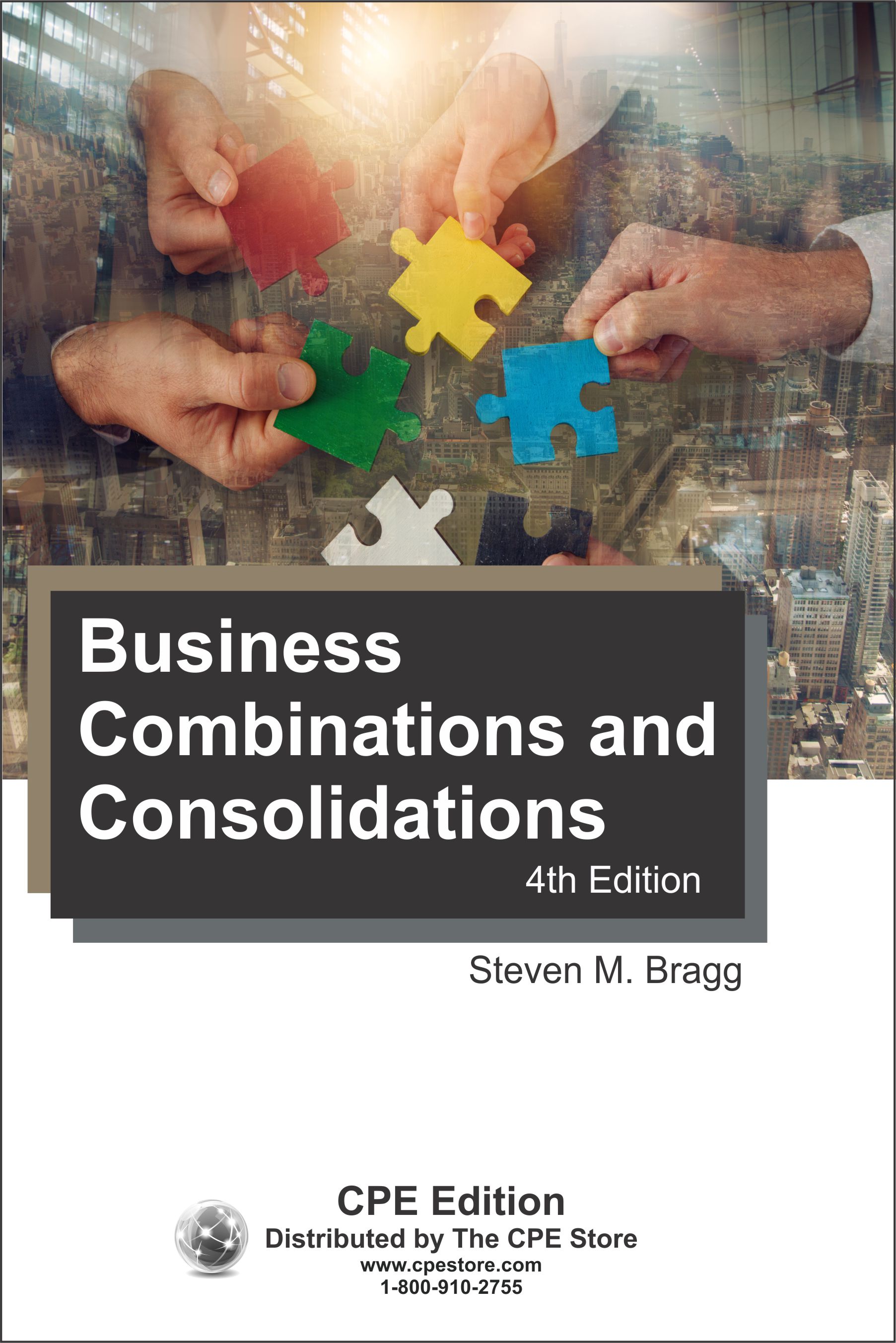
Course number: AA453304
This course describes the accounting for business combinations, including the identification of goodwill, reverse acquisitions, and disclosures. The course also notes how to account for a reduced investment in an investee using the equity method. The course goes on to discuss goodwill impairment, the consolidation of financial statements, and the steps involved in integrating accounting activities following a business combination. Course level: Basic. Prerequisites: None. Course includes integrated text and study guide, final exam, and grading service.NASBA field of study: Accounting Course credit: 3 hours
Printed Version$29
PDF$29
Colleague Test(s)$15
Contents
Closing the Books

Course number: AA419407
This course demonstrates how the accounting systems summarize information into financial statements, how to close the books efficiently, how to construct financial statements, and the controls and record keeping systems needed to close the books. Includes detailed information on closing each system, including Cash, Accounts Receivable, Inventory, Fixed Assets, Accounts Payable, and Payroll. Also covers various financial statement formats and how to create them, as well as the general types of disclosures that should accompany the financial statements. Course level: Basic. Prerequisites: None. Course includes integrated text and study guide, final exam, and grading service.NASBA field of study: Accounting Course credit: 15 hours
Printed Version$109
PDF$109
Colleague Test(s)$45
Contents
Conducting Compilation Engagements
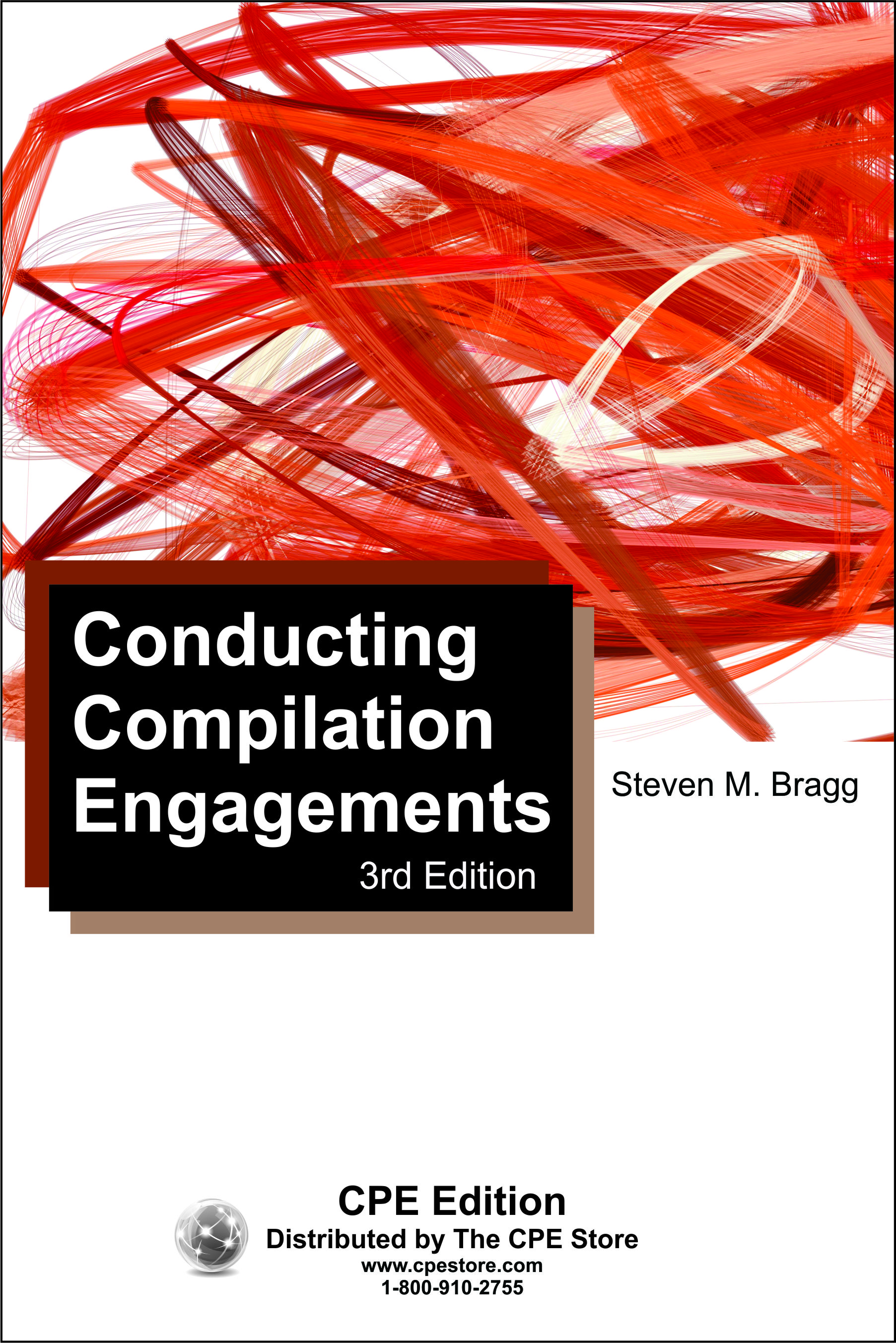
Course number: AA483403
A compilation engagement involves a greatly reduced set of activities from a review engagement, and especially from an audit. In Conducting Compilation Engagements, we describe the steps required to complete a compilation, as well as every other aspect of a compilation engagement, including the engagement letter and the compilation report. The course also includes the requirements for an engagement in which the accountant is called upon to prepare financial statements for a client. This course is based on SSARS 21, Statements on Standards for Accounting and Review Services: Clarification and Recodification. Course level: Basic. Prerequisites: None. Course includes integrated text and study guide, final exam, and grading service.NASBA field of study: Auditing Course credit: 1 hour
Printed Version$19
PDF$19
Colleague Test(s)$12
Contents
Conducting Review Engagements
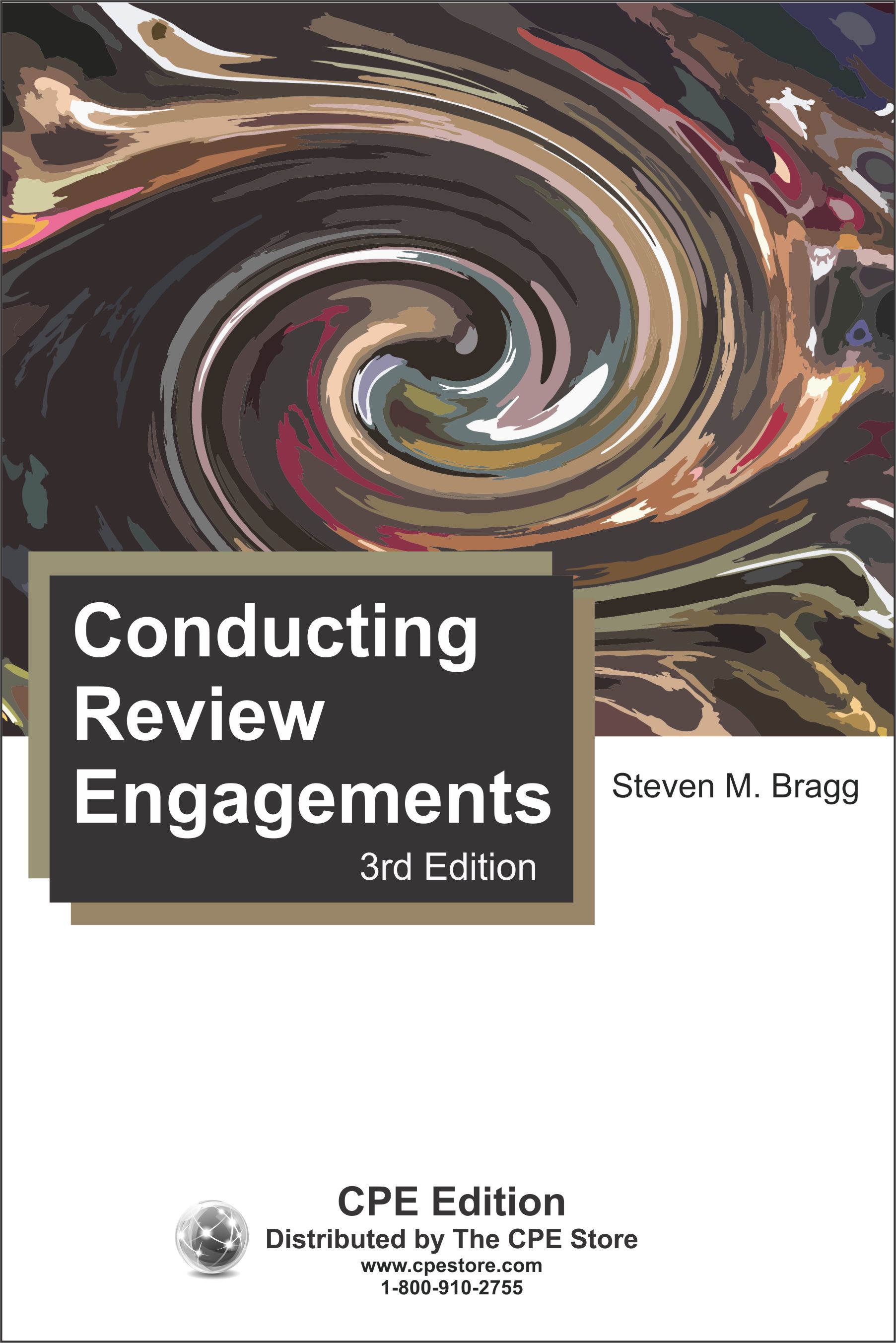
Course number: AA483303
A review engagement involves a significantly reduced set of activities from an audit engagement, with a focus on analytical procedures and inquiries. In Conducting Review Engagements, we describe the nature of these analytical procedures and inquiries, as well as every other aspect of a review engagement, including the engagement letter, representation letter, and accountant’s review report. This course is based on SSARS 21, Statements on Standards for Accounting and Review Services: Clarification and Recodification. Course level: Basic. Prerequisites: None. Course includes integrated text and study guide, final exam, and grading service.NASBA field of study: Auditing Course credit: 2 hours
Printed Version$19
PDF$19
Colleague Test(s)$12
Contents
Construction Accounting
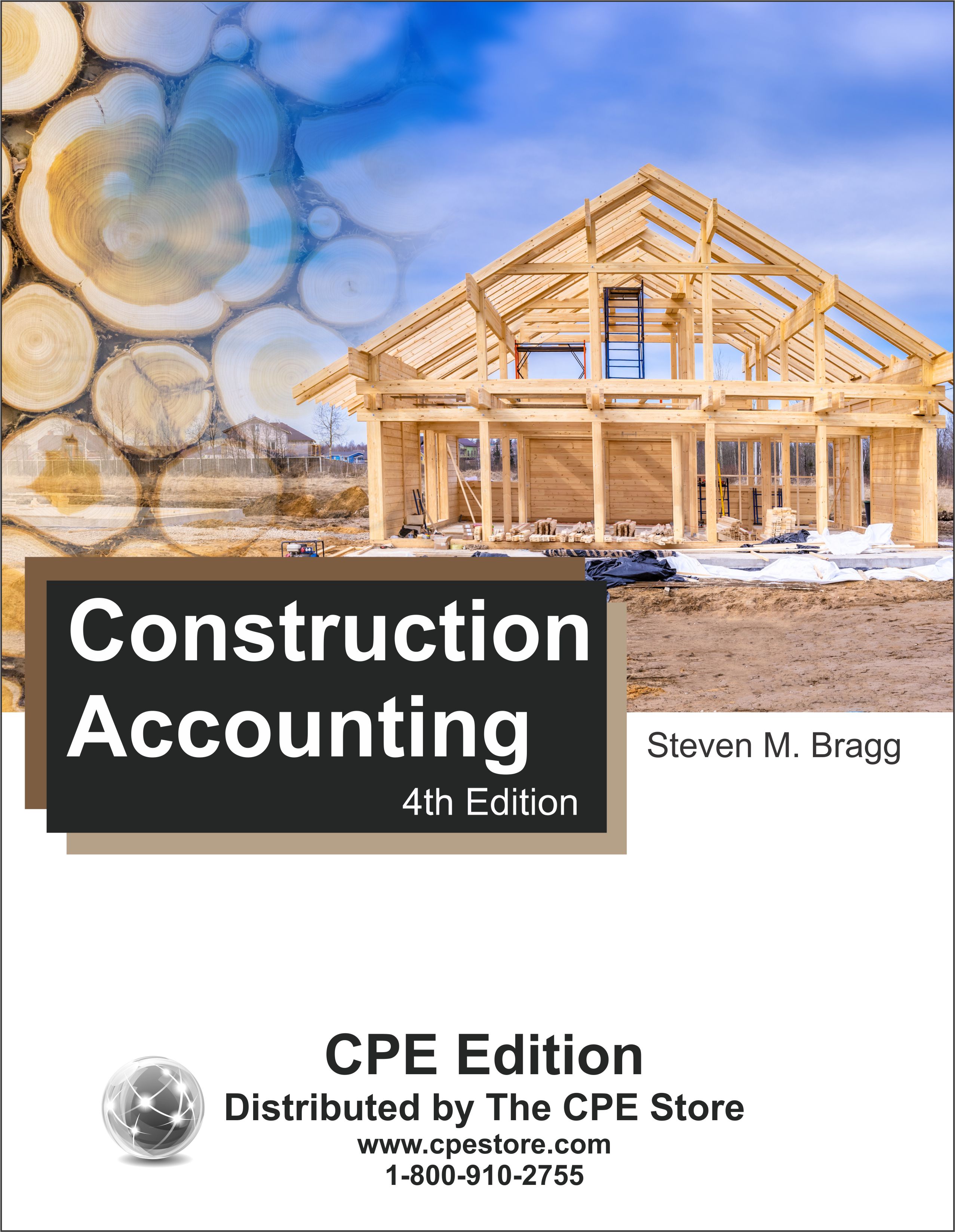
Course number: AA475204
This course addresses every aspect of the accounting for a construction business. The intent is to not only explain accounting concepts, but also provide examples and show how an accounting system can be constructed and operated. The course pays particular attention to unique aspects of construction accounting that are not encountered in other industries, including the job cost ledger, change orders, back charges, percentage of completion calculations, and the treatment of anticipated losses on contracts. Course level: Basic. Prerequisites: None. Course includes integrated text and study guide, final exam, and grading service.NASBA field of study: Accounting Course credit: 11 hours
Printed Version$89
PDF$89
Colleague Test(s)$35
Contents
Cost Accounting Fundamentals
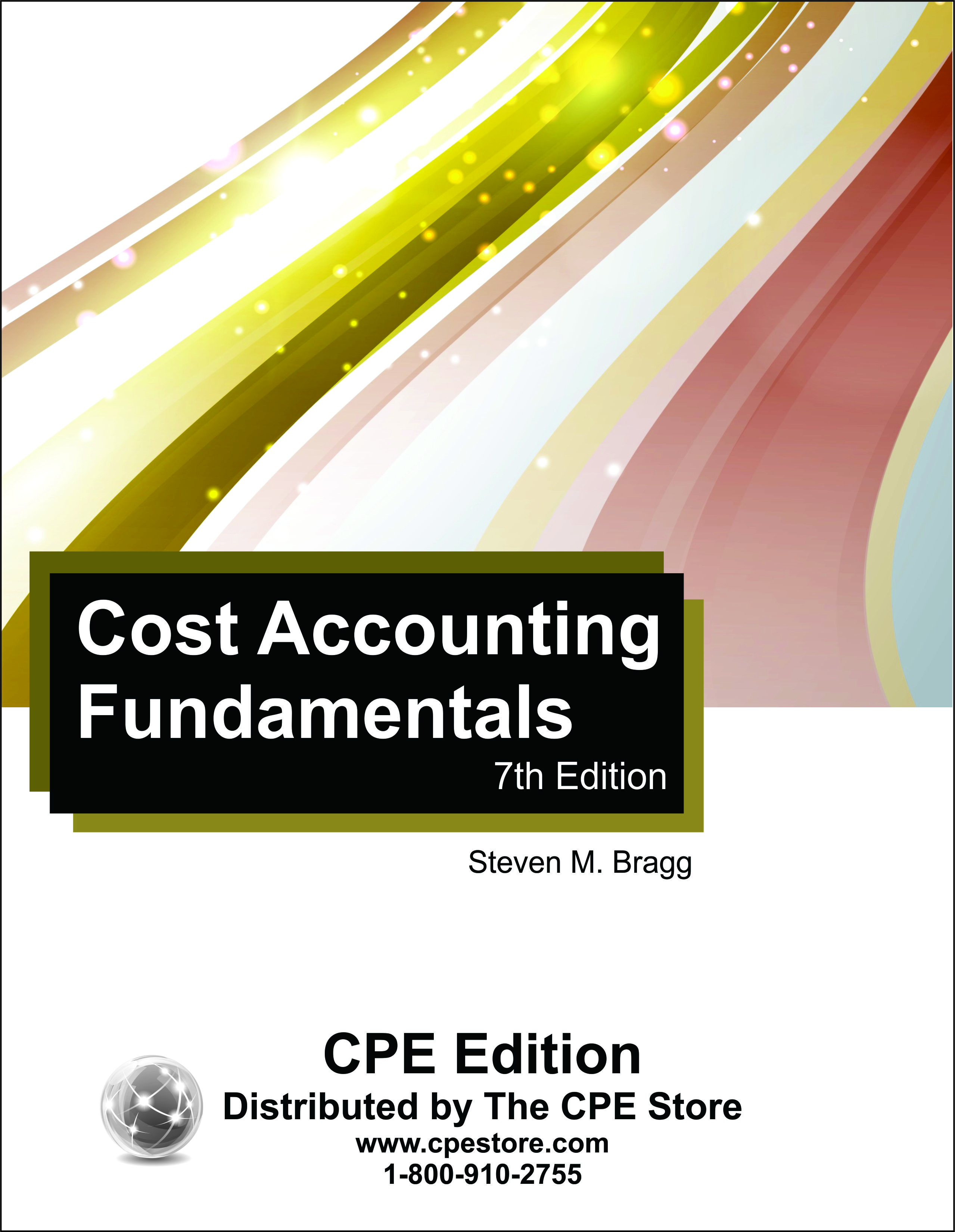
Course number: AA434407
Describes the key cost accounting concepts that most concern the practicing cost accountant, and illustrates them with numerous examples. The course is designed for those who can benefit from its detailed descriptions of inventory valuation methods, product pricing techniques, cost analysis methods, and more. Cost Accounting Fundamentals includes such key topics as job costing, process costing, standard costing, target costing, transfer pricing, activity-based costing, constraint analysis, and capital budgeting analysis. The coverage of target costing, resource consumption cost concepts, and related cost planning and management topics make this course invaluable. Course level: Basic. Prerequisites: None. Course includes integrated text and study guide, final exam, and grading service.NASBA field of study: Accounting Course credit: 15 hours
Printed Version$109
PDF$109
Colleague Test(s)$45
Contents
Detecting Accounting Fraud Before It's Too Late
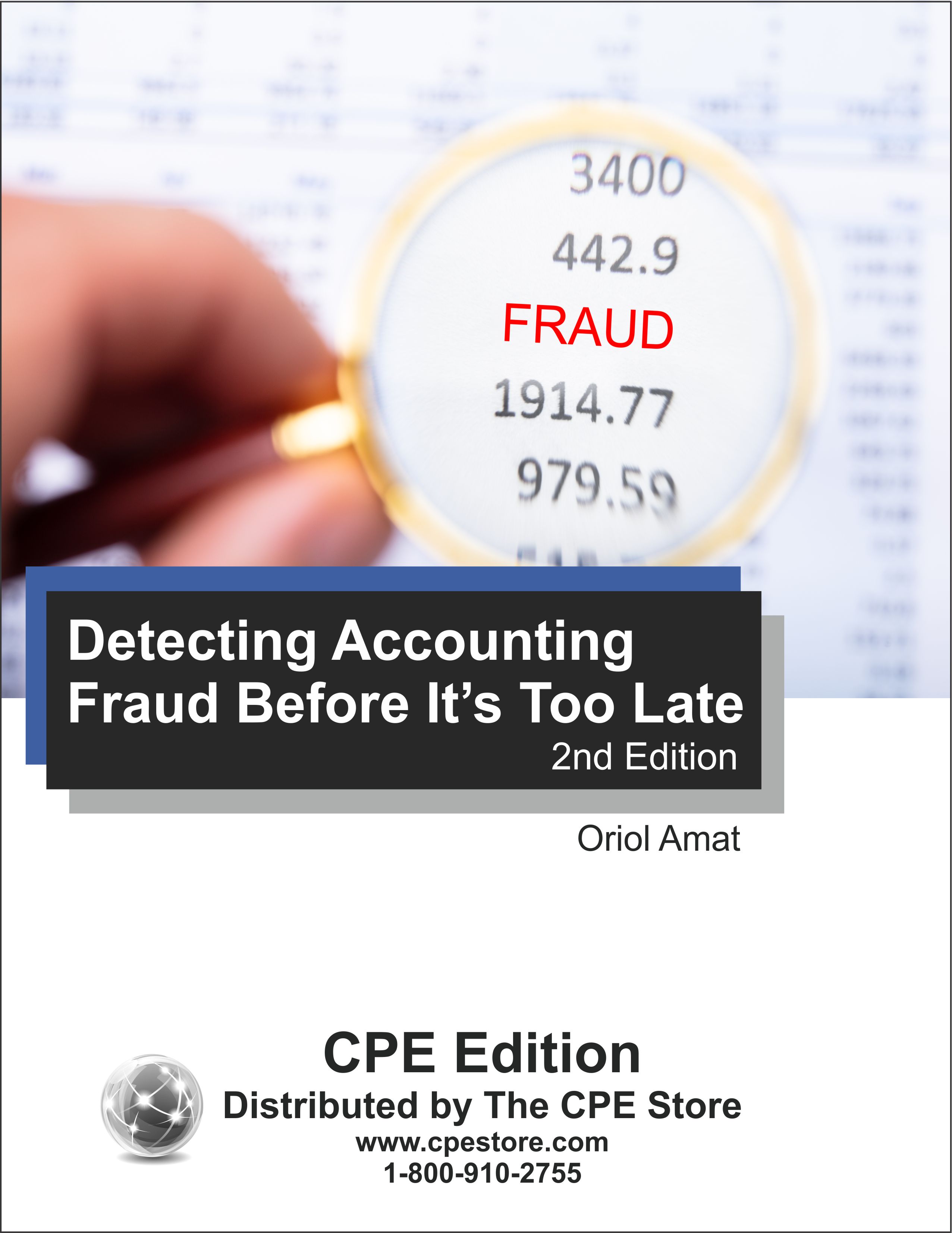
Course number: AA694402
This course provides information on the various types of fraud and accounting manipulations that occur in a business environment. It contains a multitude of real fraud cases that show how fraud is committed and the regulations and changes that ensued from these fraudulent actions. The topics discussed include the history of accounting fraud, problems with legislation and those involved in the financial information, personal and organizational warning signs of fraud, and ratios that indicate fraud in the accounts. Additionally, legal and illegal accounting manipulations are addressed, as well as the ethical considerations and economic consequences of these manipulations. Finally, the course offers suggestions on how to deter accounting fraud, and provides information on the criminal responsibility of legal entities and regulatory compliance. Course level: Basic. Prerequisites: None. Course includes integrated text and study guide, final exam and grading service.NASBA field of study: Accounting Course credit: 8 hours
Printed Version$69
PDF$69
Colleague Test(s)$25
Contents
Effective Collections
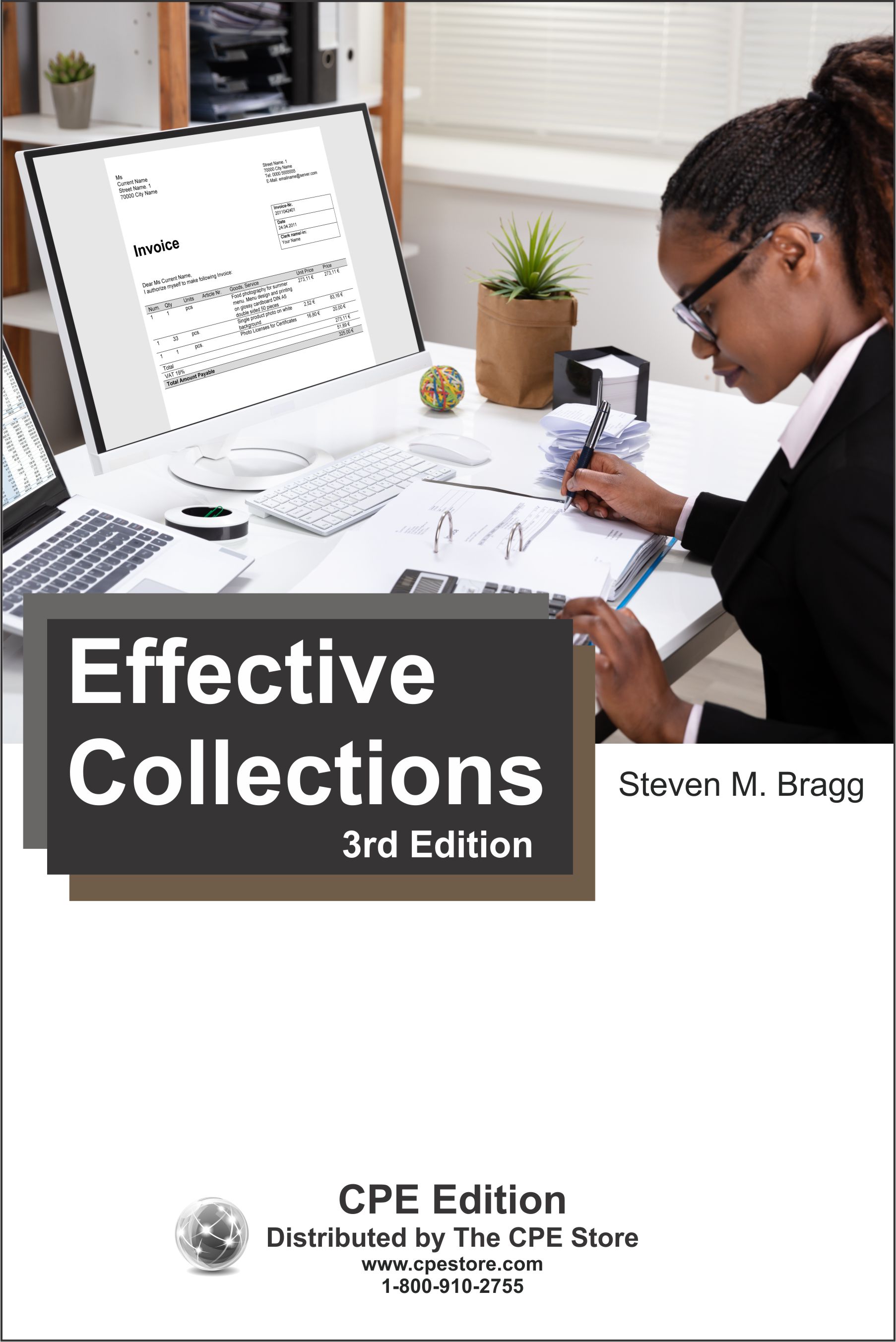
Course number: AA489203
The Effective Collections course gives the accountant a complete set of tools for how to collect overdue invoices from customers, thereby accelerating cash flows and reducing the need for alternative forms of financing. The techniques covered include courtesy calls, dunning letters, salesperson assistance, arbitration, collection agencies, small claims court, and involuntary bankruptcy. The course shows the accountant how to select a reputable collection agency and monitor its operations, and also provides advice about when it makes sense to engage in litigation. Course level: Basic. Prerequisites: None. Course includes integrated text and study guide, final exam, and grading service.NASBA field of study: Accounting Course credit: 2 hours
Printed Version$19
PDF$19
Colleague Test(s)$12
Contents
Employee Retention Credit & Pass-Through Entity Tax Disclosures
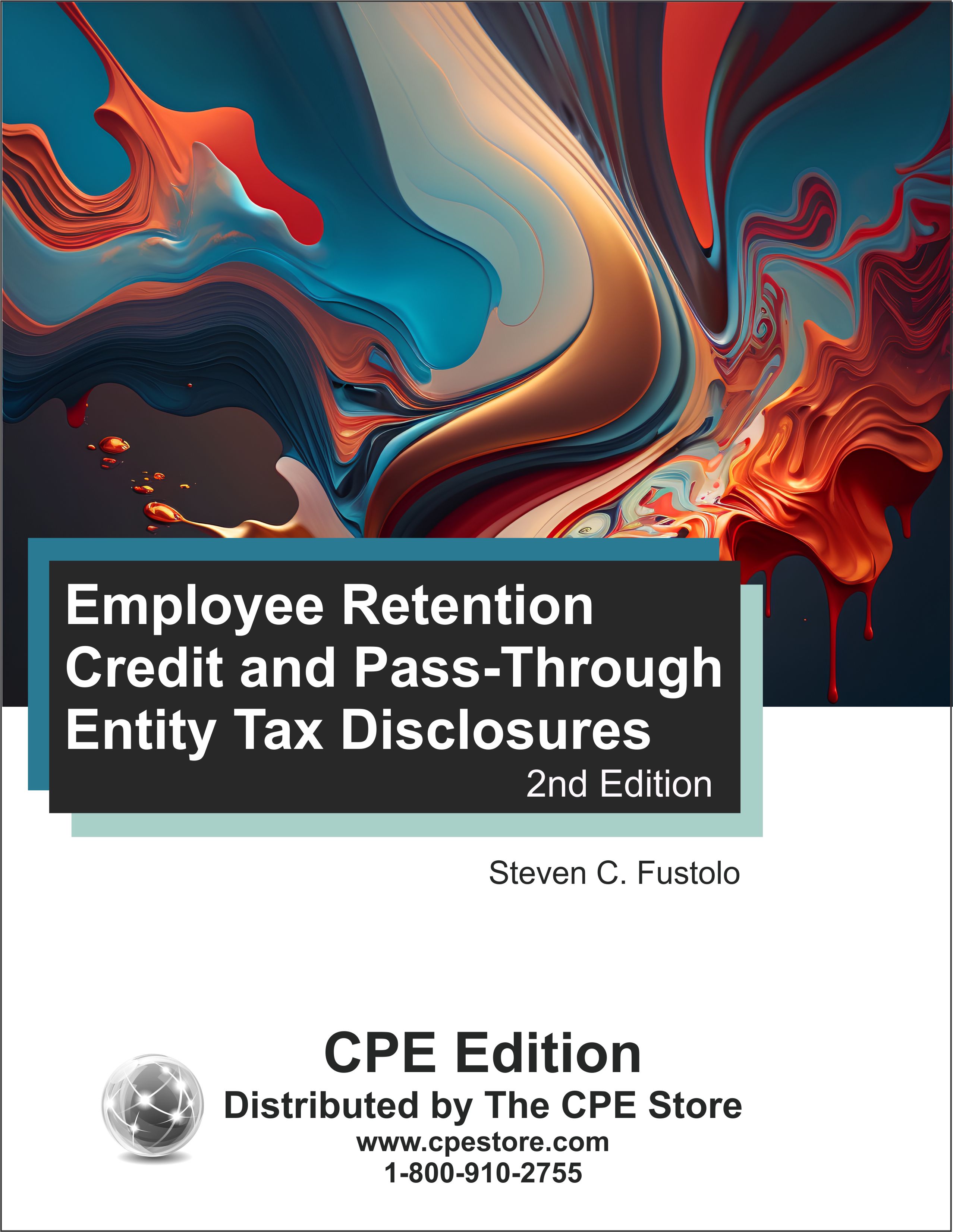
Course number: AA776402
The objective of this course is to review the accounting and financial disclosures related to two recent changes from legislation: the Employee Retention Credit (ERC) and the Pass-Through Entity (PTE) Tax. Topics include: An overview of the ERC rules; models to use to account for the ERC; comparing use of the ASC 958 model with the IAS 20 model to account for the ERC; disclosures required for the ERC including disclosures found in newly issued ASU 2021-10; fixing 2020 ERC presentation and disclosure errors; presenting the ERC on tax-basis financial statements; overview of the Pass-Through Entity (PTE) Tax election; GAAP accounting for the PTE tax; GAAP disclosures for the PTE tax; presenting the PTE tax on tax-basis financial statements, and more. Course level: Basic. Prerequisites: None. Course includes integrated text and study guide, final exam, and grading service.NASBA field of study: Accounting Course credit: 2 hours
Printed Version$19
PDF$19
Colleague Test(s)$12
Contents
Entertainment Industry Accounting
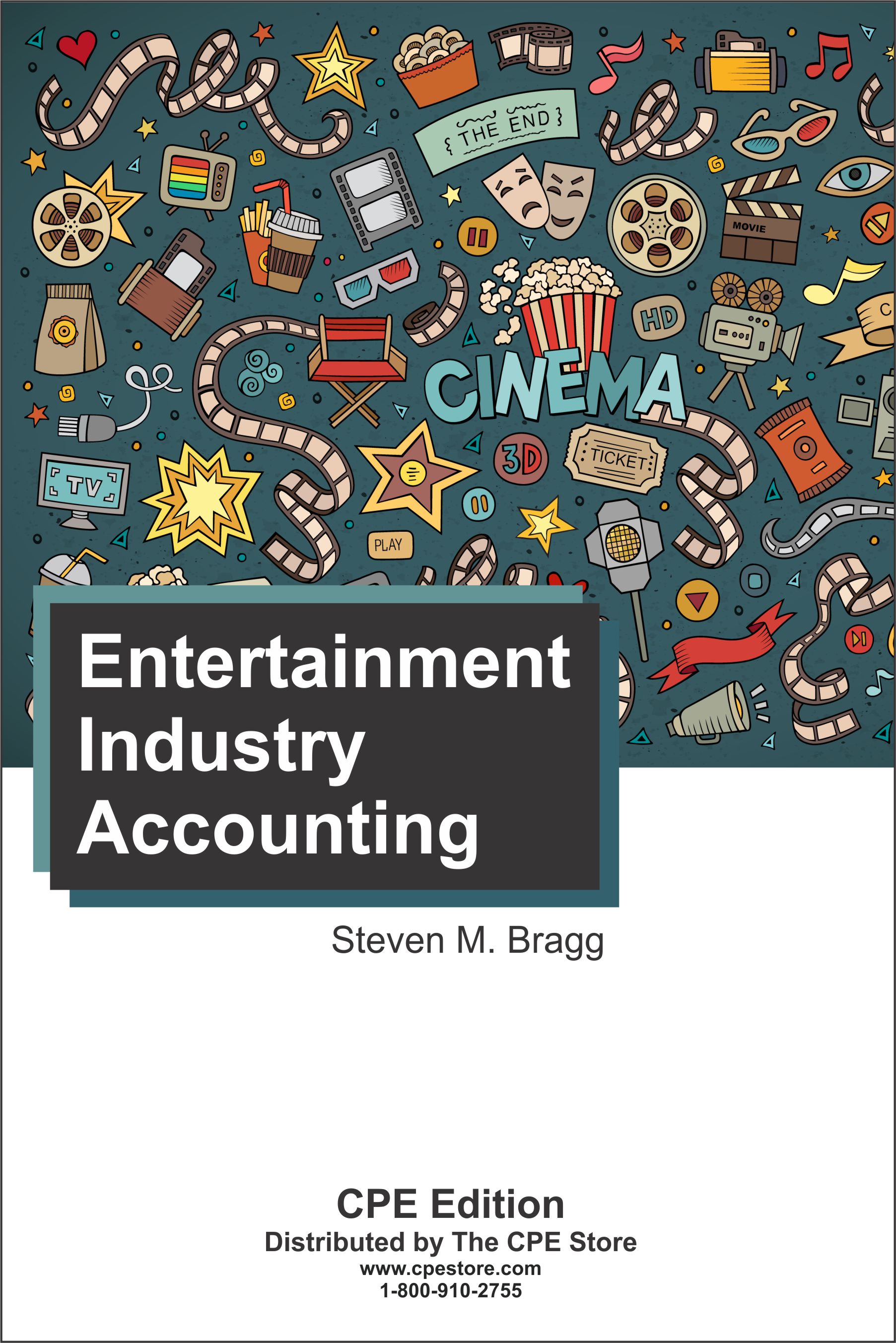
Course number: AA477601
A number of accounting standards are targeted at the entertainment industry, requiring businesses to follow specific rules for license agreements, the buildout of cable systems, film costs, music licensing, and more. Entertainment Industry Accounting covers these accounting requirements, along with related presentation and disclosure topics, with the intent of clarifying how specific transactions are to be handled. This course covers the accounting for broadcasting, cable television, films, and music. Course level: Basic. Prerequisites: None. Course includes integrated text and study guide, final exam and grading service.NASBA field of study: Accounting Course credit: 1 hour
Printed Version$19
PDF$19
Colleague Test(s)$12
Contents
Essentials of Forensic Accounting
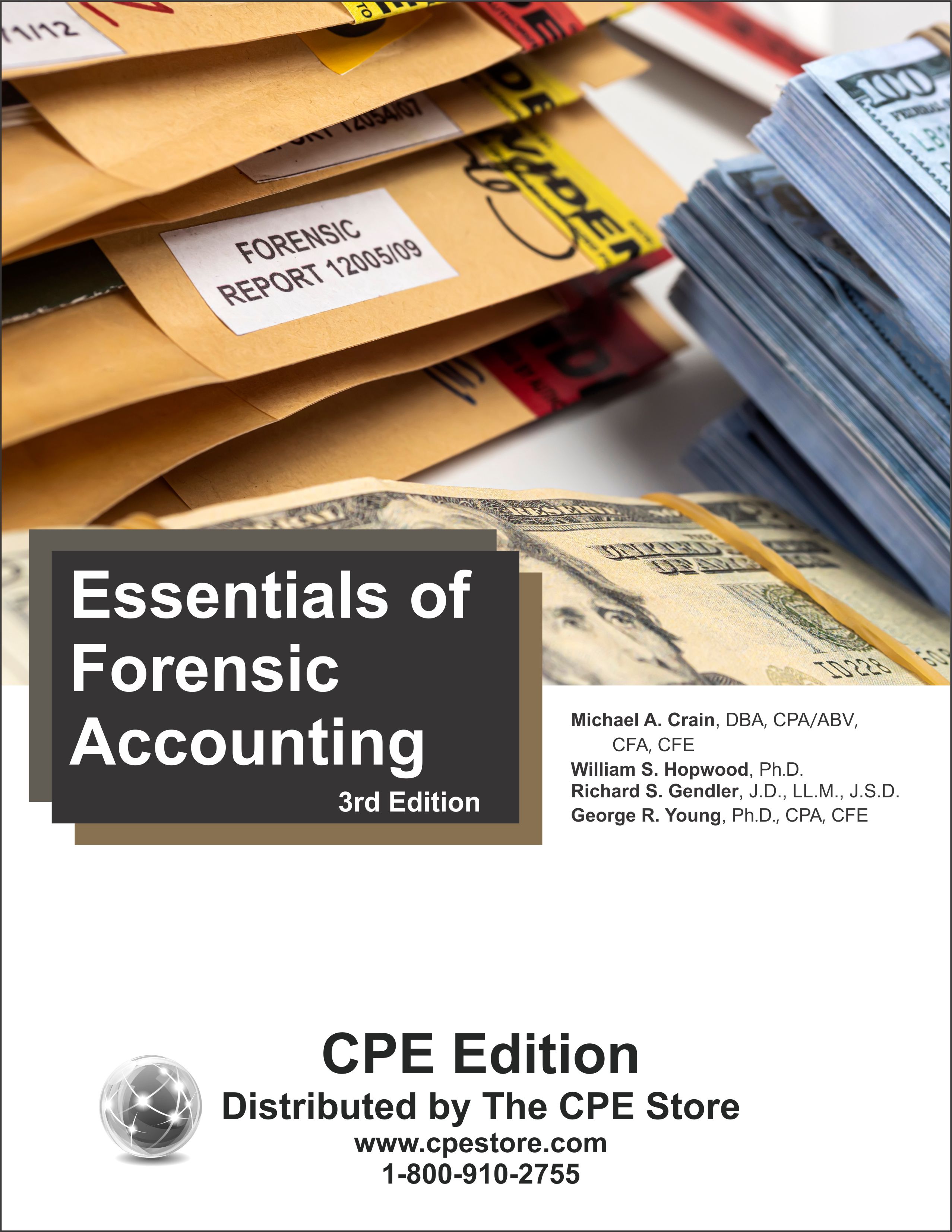
Course number: AA688803
This course covers everything you need to know about Forensic Accounting, with a heavy emphasis on the legal side. Topics include: the forensic accounting profession; civil and criminal procedure; evidence; discovery; litigation services; engagement and practice management; fraud prevention, detection and response; fraud schemes and applications; bankruptcy and related frauds; digital forensics; matrimonial forensics; financial statement misrepresentations; economic damages, and valuation fundamentals and applications. Course level: Basic. Prerequisites: None. Course includes integrated text and study guide, final exam, and grading service.NASBA field of study: Accounting Course credit: 36 hours
Printed Version$229
PDF$229
Colleague Test(s)$110
Contents
Fair Value Accounting
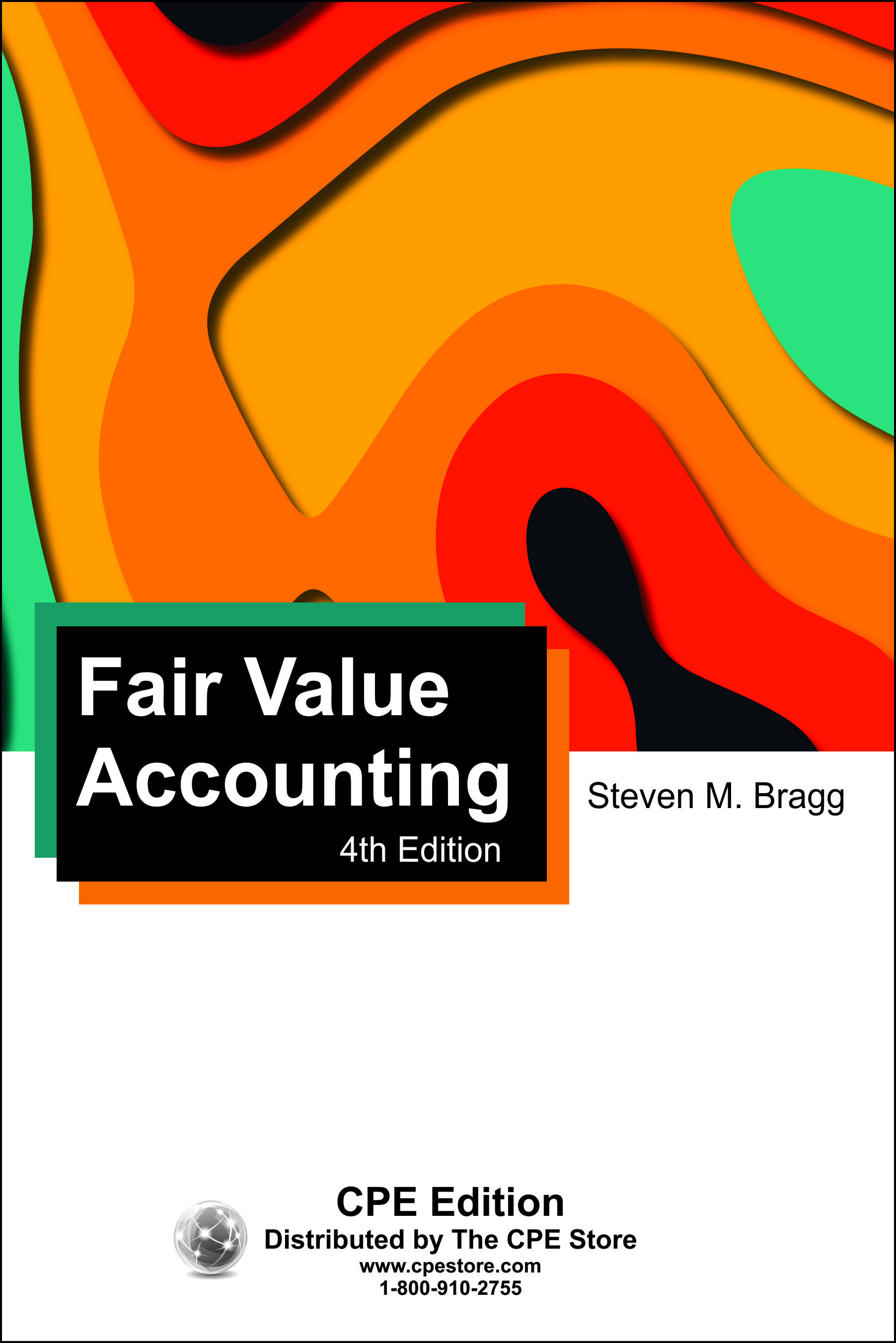
Course number: AA456704
Fair Value Accounting addresses all aspects of the GAAP requirement to report certain assets and liabilities at their fair values. This includes when fair value measurements should be performed, the parameters for measuring fair value, and how to disclose this information in the financial statements. The course also notes those situations in which fair value is used to evaluate whether assets have been impaired. Course level: Basic. Prerequisites: None. Course includes integrated text and study guide, final exam and grading service.NASBA field of study: Accounting Course credit: 2 hours
Printed Version$19
PDF$19
Colleague Test(s)$12
Contents
FASB Review
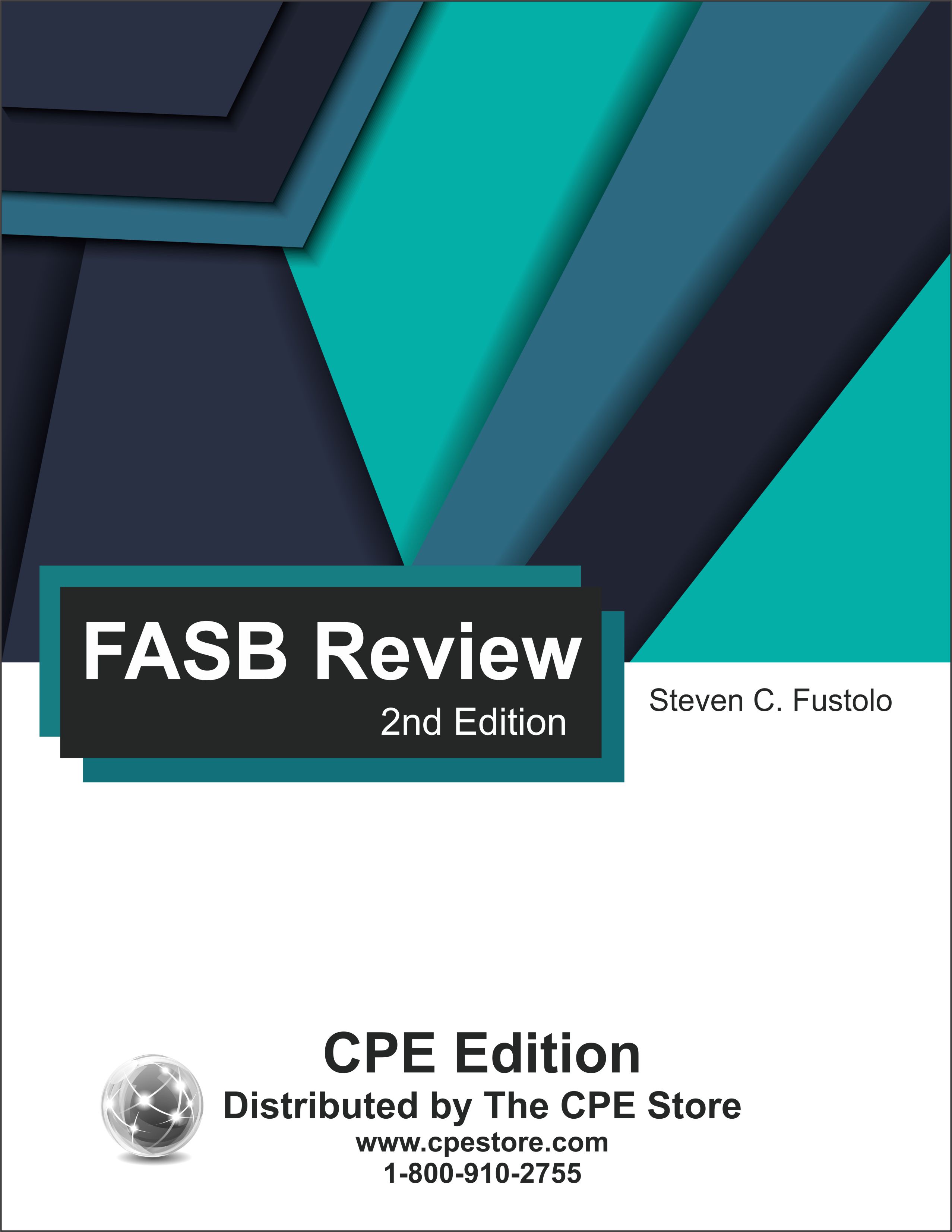
Course number: AA776102
The purpose of this course is to inform the reader of the various changes affecting accounting and financial reporting, as well as a review and recall of existing accounting standards. Topics include a summary of newly issued FASB statements, current and pending developments, the new lease standard, practice issues, a discussion of accounting and financial reporting issues related to post-COVID-19 economic issues, accounting and disclosures for the Employee Retention Credit (ERC) and Pass-Through Entity (PTE) tax, dealing with the forgiveness of PPP loans, and more. Course level: Basic. Prerequisites: None. Course includes integrated text and study guide, final exam, and grading service.NASBA field of study: Accounting Course credit: 16 hours
Printed Version$119
PDF$119
Colleague Test(s)$50
Contents
Fixed Asset Accounting
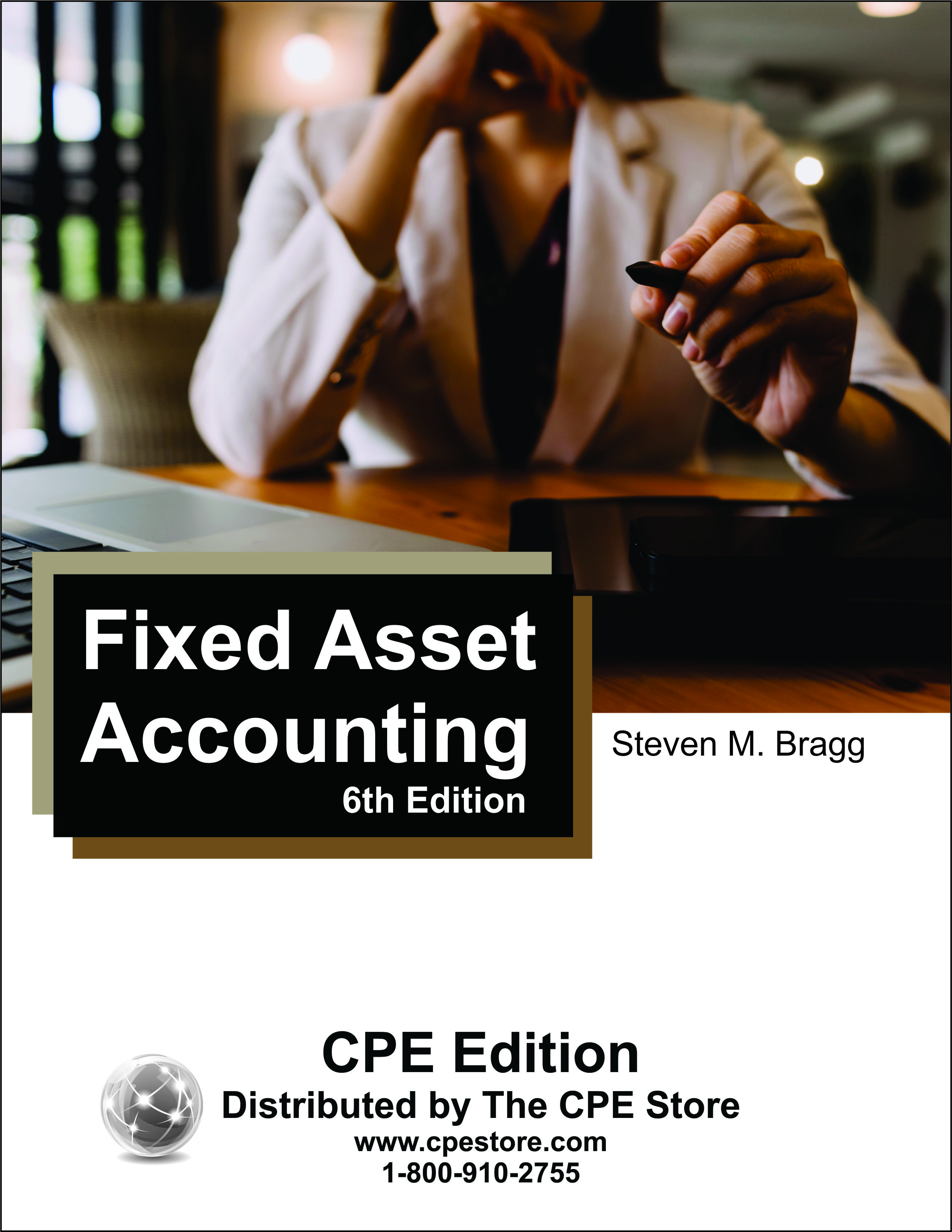
Course number: AA446806
Addresses the GAAP and IFRS accounting for all key fixed asset topics, including capital budgeting, interest capitalization, asset retirement obligations, depreciation, impairment, and disposal. The book delves into many other areas as well, including the record keeping, controls, policies and procedures, measurements, and auditing procedures related to fixed assets. Clear examples and tips are used to supplement the well-written text and accounting terms are conveniently defined within the chapters. Course level: Basic. Prerequisites: None. Course includes integrated text and study guide, final exam and grading service.NASBA field of study: Accounting Course credit: 12 hours
Printed Version$89
PDF$89
Colleague Test(s)$35
Contents
Foreign Currency Accounting
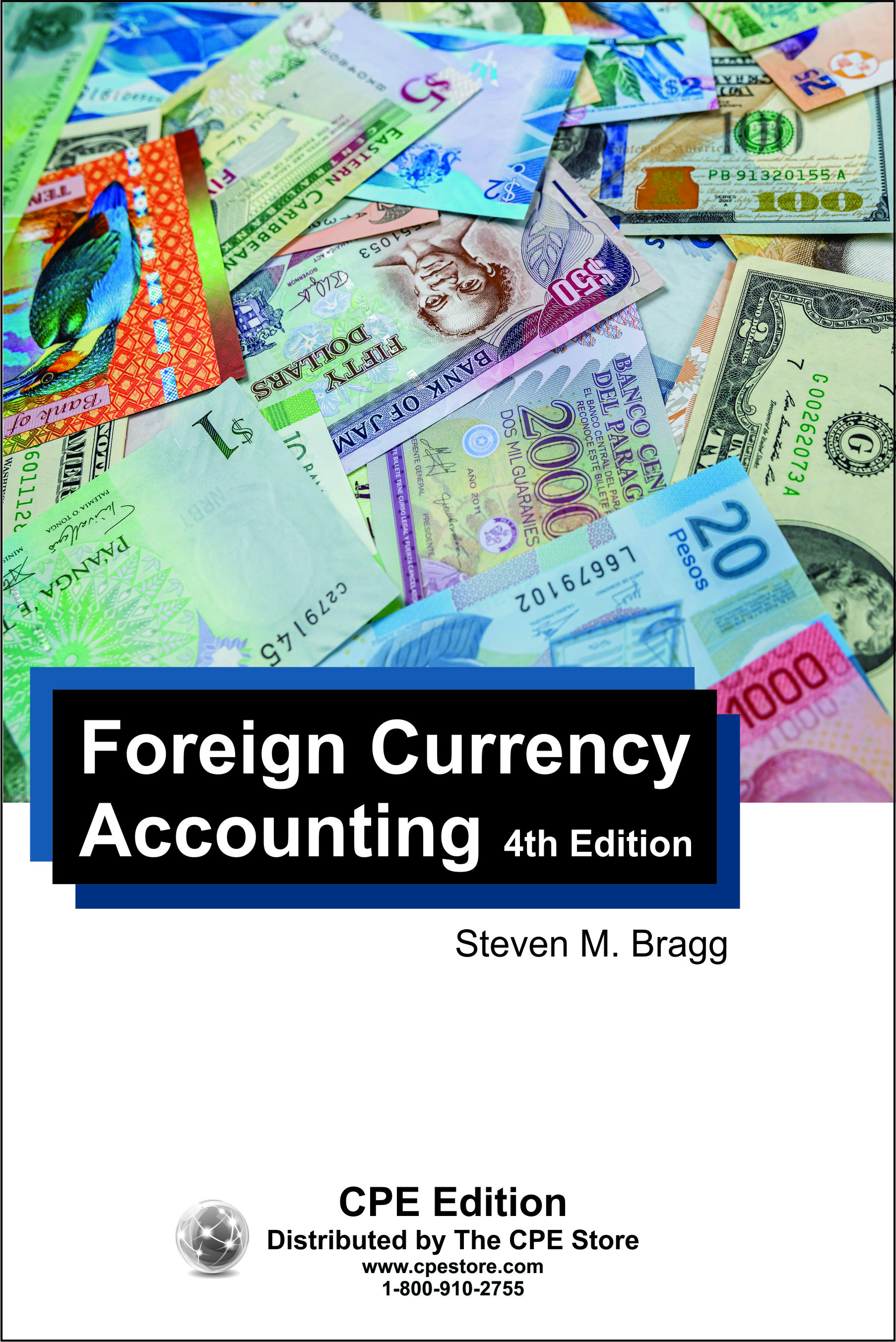
Course number: AA453704
Foreign Currency Accounting describes all accounting activities related to foreign currencies. There is complete coverage of the steps needed to convert foreign currency financial statements into the reporting currency of the parent entity, as well as the accounting for basic foreign exchange transactions and hedging activities. Related financial statement disclosures are also noted. In addition, the course addresses related topics, such as the additional steps required to close the books and internal auditing tasks related to foreign currencies. Course level: Basic. Prerequisites: None. Course includes integrated text and study guide, final exam and grading service.NASBA field of study: Accounting Course credit: 2 hours
Printed Version$19
PDF$19
Colleague Test(s)$12
Contents
Fraud Examination
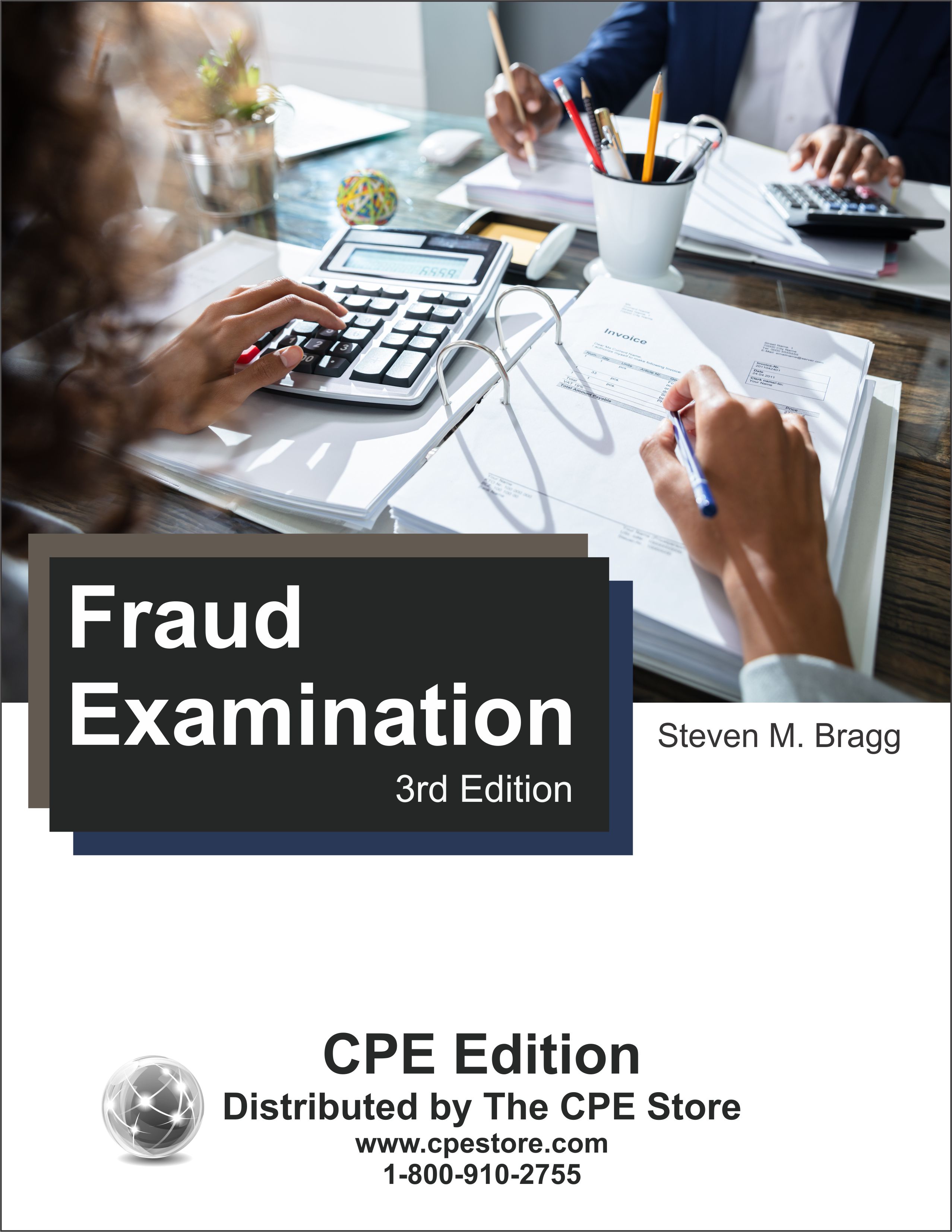
Course number: AA468103
This course is a practical reference for how to prevent, detect, and investigate fraud within a business. It can be used to identify the different types of fraud and construct an environment in which fraud is minimized. In addition, the book describes the many indicators of fraud, so that it can be detected early. The book also describes the process for investigating fraud, including interviewing techniques, document examination, and how to write a fraud report. Course level: Basic. Prerequisites: None. Course includes integrated text and study guide, final exam, and grading service.NASBA field of study: Accounting Course credit: 12 hours
Printed Version$89
PDF$89
Colleague Test(s)$35
Contents
Fraud: Ensuring Integrity in Financial Reporting
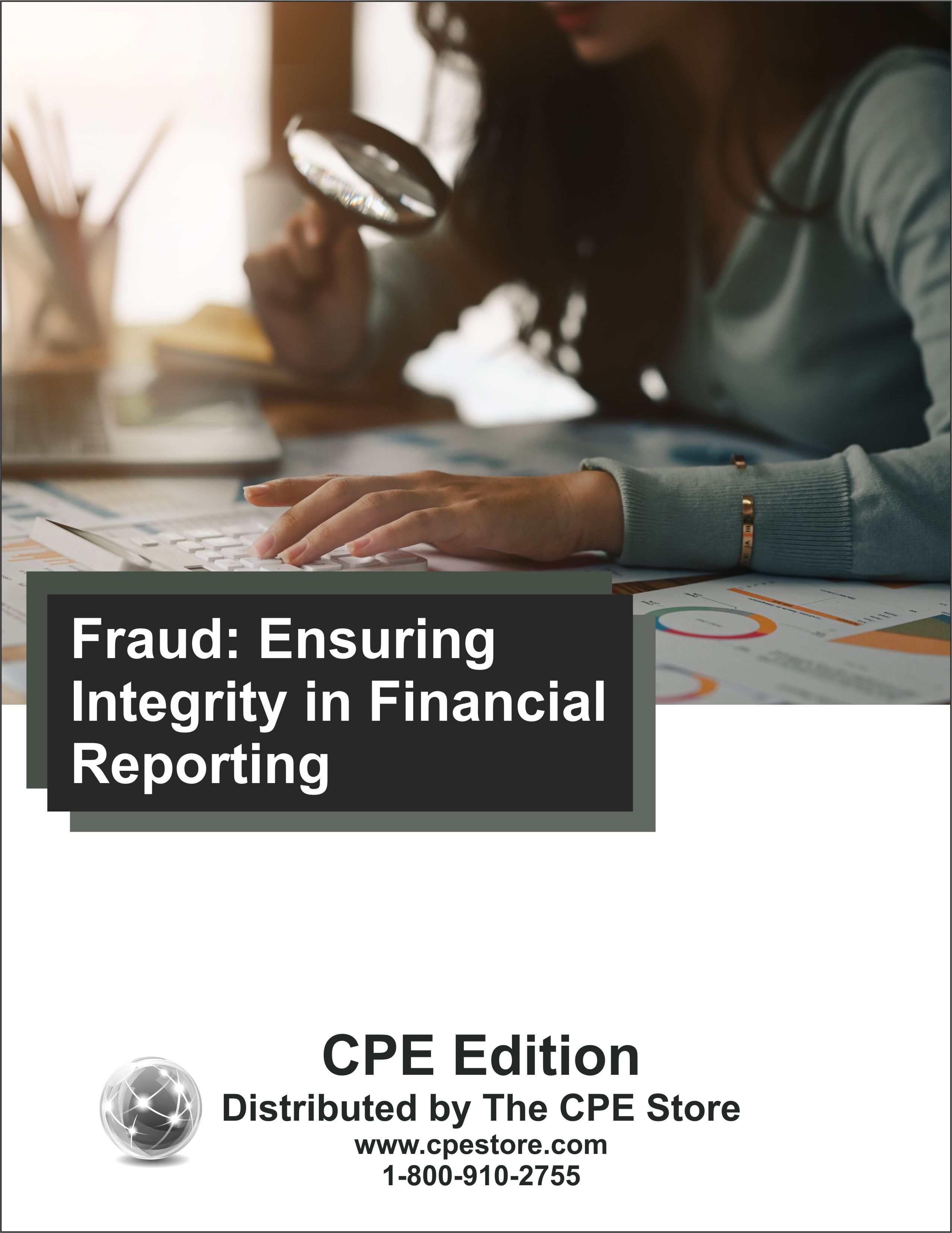
Course number: AA734501
A corporate scandal involves alleged or actual unethical behavior by people acting within or on behalf of a corporation. Since the turn of the century, the U.S. has seen some large corporate collapses and scandals due to shoddy and deceptive accounting practices. Many companies, shareholders and employees suffered as stock prices fell and reputations were tarnished when businesses conducted questionable practices. This course is divided into four parts with topics covering the identification of the common financial shenanigans demonstrated with a series of real-life cases and addressed ongoing financial reporting issues (e.g., restatements, SEC enforcement actions). It provides explanations of the basic accounting rules for stock-based compensation, identification of the regulations that protect investors from unethical business practices and the impact of Sarbanes-Oxley Act, including the creation of PCAOB, reforms of corporate America and improvements in audit quality. Additionally, this course discusses internal control reporting requirements, the role of the audit committee, disclosure controls, personal accountability and it demonstrates ways to promote high levels of accountability and transparency. It further explains the importance of business ethics and corporate social responsibility and discusses the role of good corporate governance in protecting shareholder value. Course level: Basic. Prerequisites: None. Course includes integrated text and study guide, final exam, and grading service.NASBA field of study: Accounting Course credit: 6 hours
Printed Version$59
PDF$59
Colleague Test(s)$20
Contents
Fundamentals of Accounts Payable
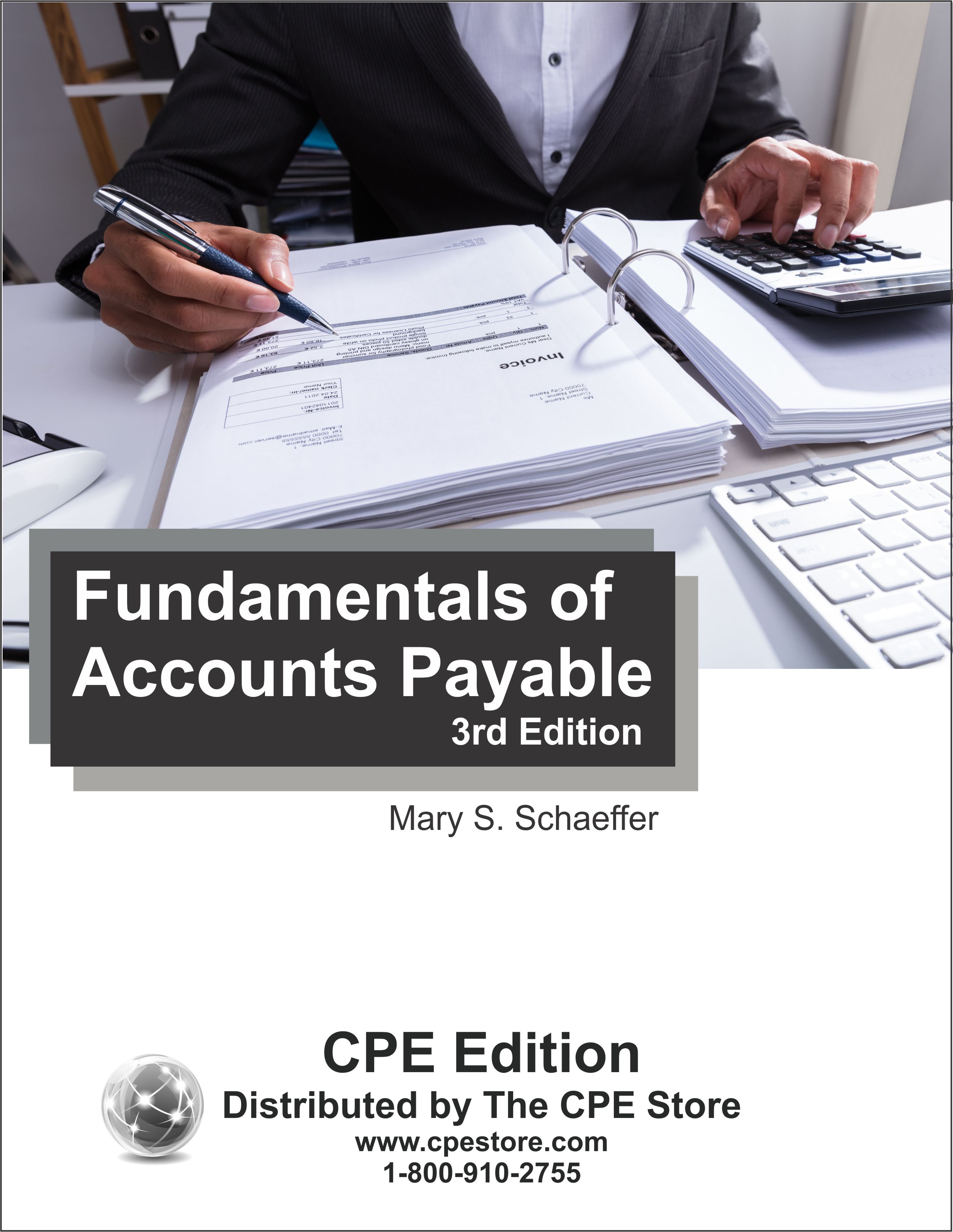
Course number: AA782203
Understanding the fundamentals of the accounts payable function is critical for any organization that wants to run an effective and efficient accounts payable function. Without this understanding, weak processes are permitted, making fraud easier to commit. Duplicate payments increase and the function is not cost-effective. This course presents information the professional can use to create a strong process and implement effective systems. Industry expert Mary Schaeffer shows auditors, controllers, and managers how proper processes in the accounts payable function strengthen controls and lead to an efficient and effective accounts payable function. Course level: Basic. Prerequisites: None. Course includes integrated text and study guide, final exam, and grading service.NASBA field of study: Accounting Course credit: 16 hours
Printed Version$119
PDF$119
Colleague Test(s)$50
Contents
GAAP Guidebook 2025
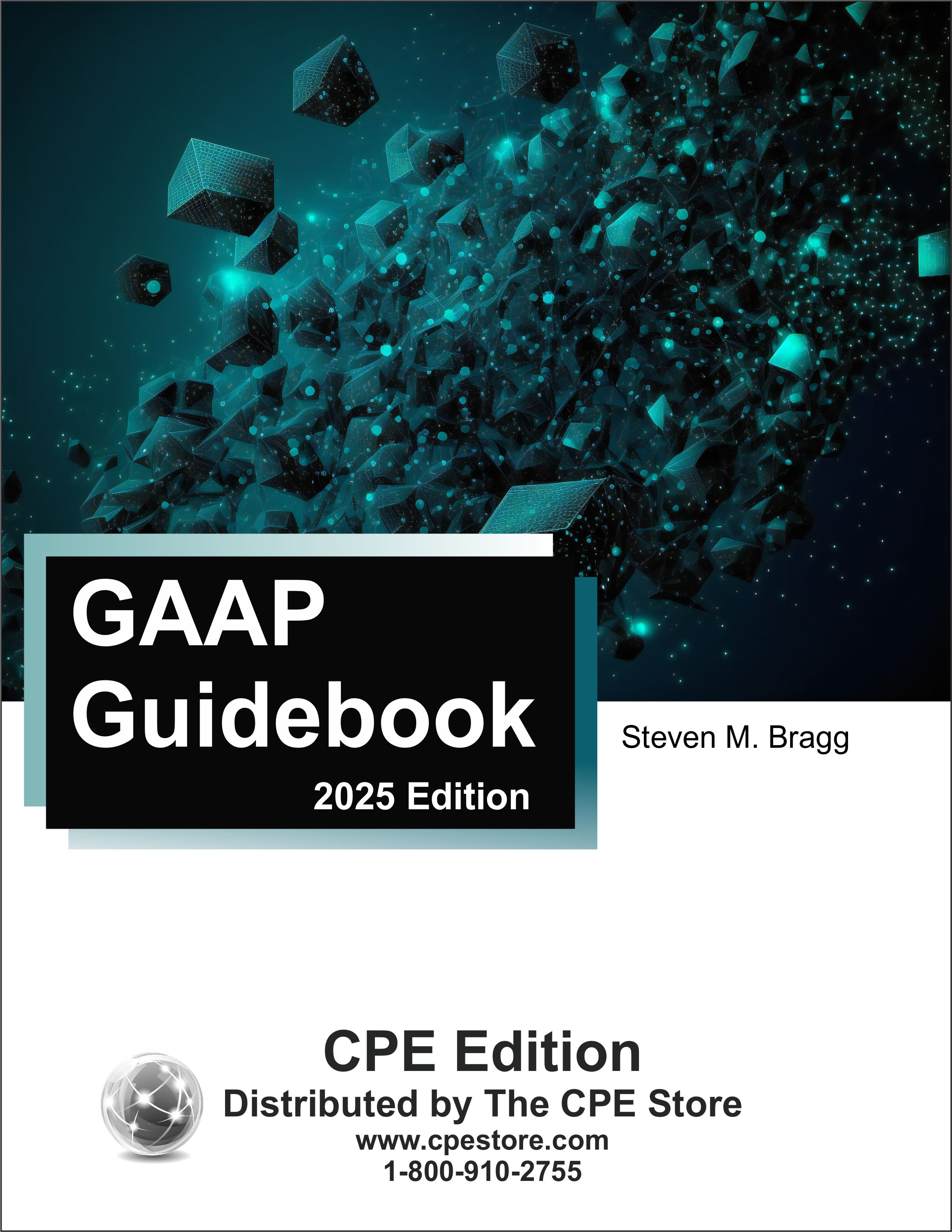
Course number: AA441125
This course provides a comprehensive overview of current GAAP. Includes presentation of financial statements, including the balance sheet, income statement, and statement of cash flows; notes to financial statements; accounting changes and error corrections; earnings per share calculations; interim reporting; risks and uncertainties; segment reporting; receivables; investments; inventory; deferred costs; intangibles; property, plant and equipment; depreciation; amortization; debt; contingencies; commitments; compensation; guarantees; equity; revenue recognition; foreign currency; leases; income taxes and more. Course level: Basic. Course includes integrated text and study guide, final exam, and grading service.NASBA field of study: Accounting Course credit: 30 hours
Printed Version$229
PDF$229
Colleague Test(s)$100
Contents
Government Auditing Standards
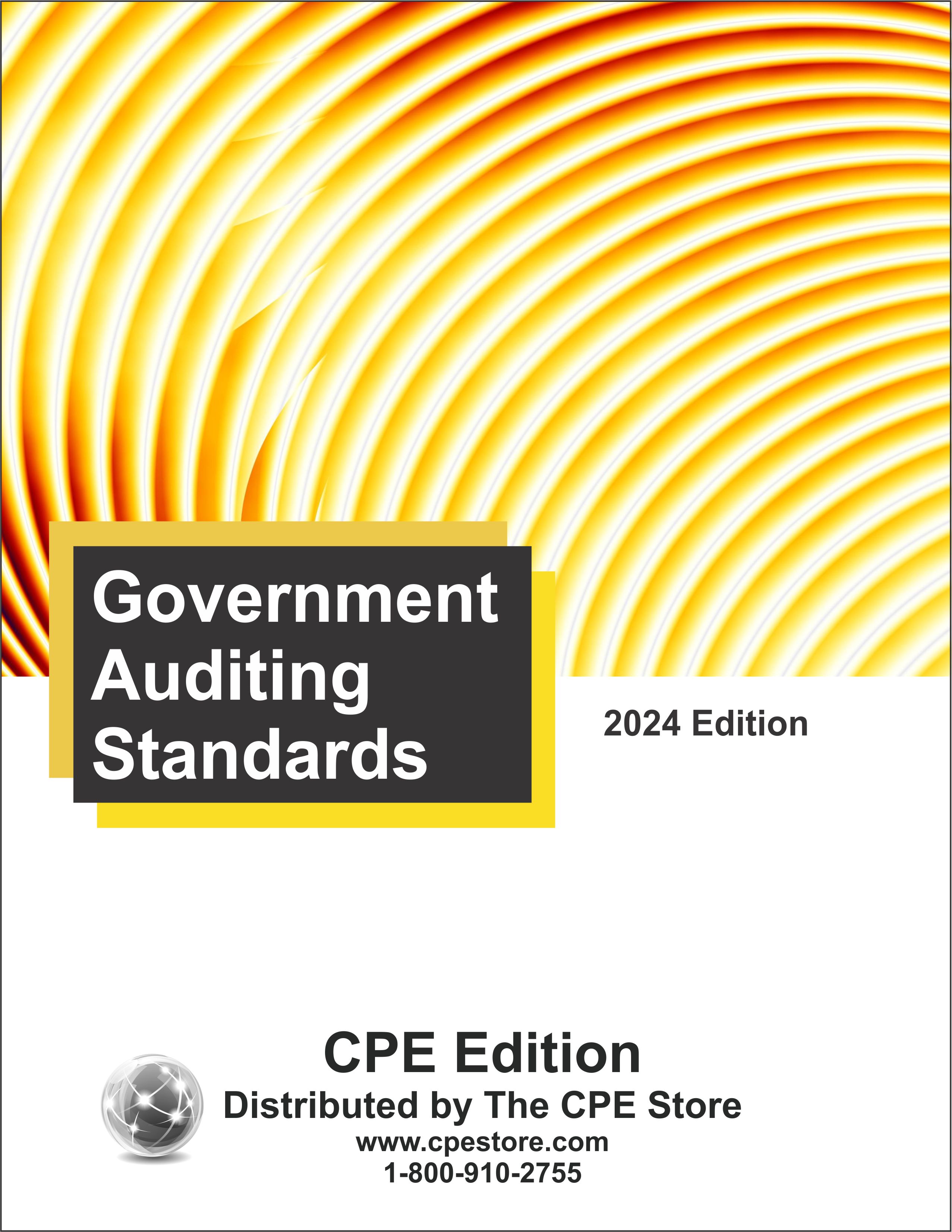
Course number: AA821424
Note: The 2024 Revision is effective for financial audits, attestation engagements, and reviews of financial statements for periods beginning on or after December 15, 2025, and for performance audits beginning on or after December 15, 2025. A system of quality management that complies with Government Auditing Standards is required to be designed and implemented by December 15, 2025. An audit organization should complete its evaluation of the system of quality management by December 15, 2026. Early implementation is permitted. Covers government auditing standards CPA firms are required to follow in audits of government organizations, programs, activities, and functions. Provides guidance on general standards, standards for financial audits, standards for attestation engagements, and field work and reporting standards for performance audits. CPAs use the yellow book for audits of nonprofit organizations, HUD projects, state and local government programs receiving federal funding, and more. Course level: Basic. Prerequisites: None. Course includes integrated text and study guide, final exam, and grading service.NASBA field of study: Auditing (Governmental) Course credit: 10 hours
Printed Version$79
PDF$79
Colleague Test(s)$30
Contents
Governmental Accounting
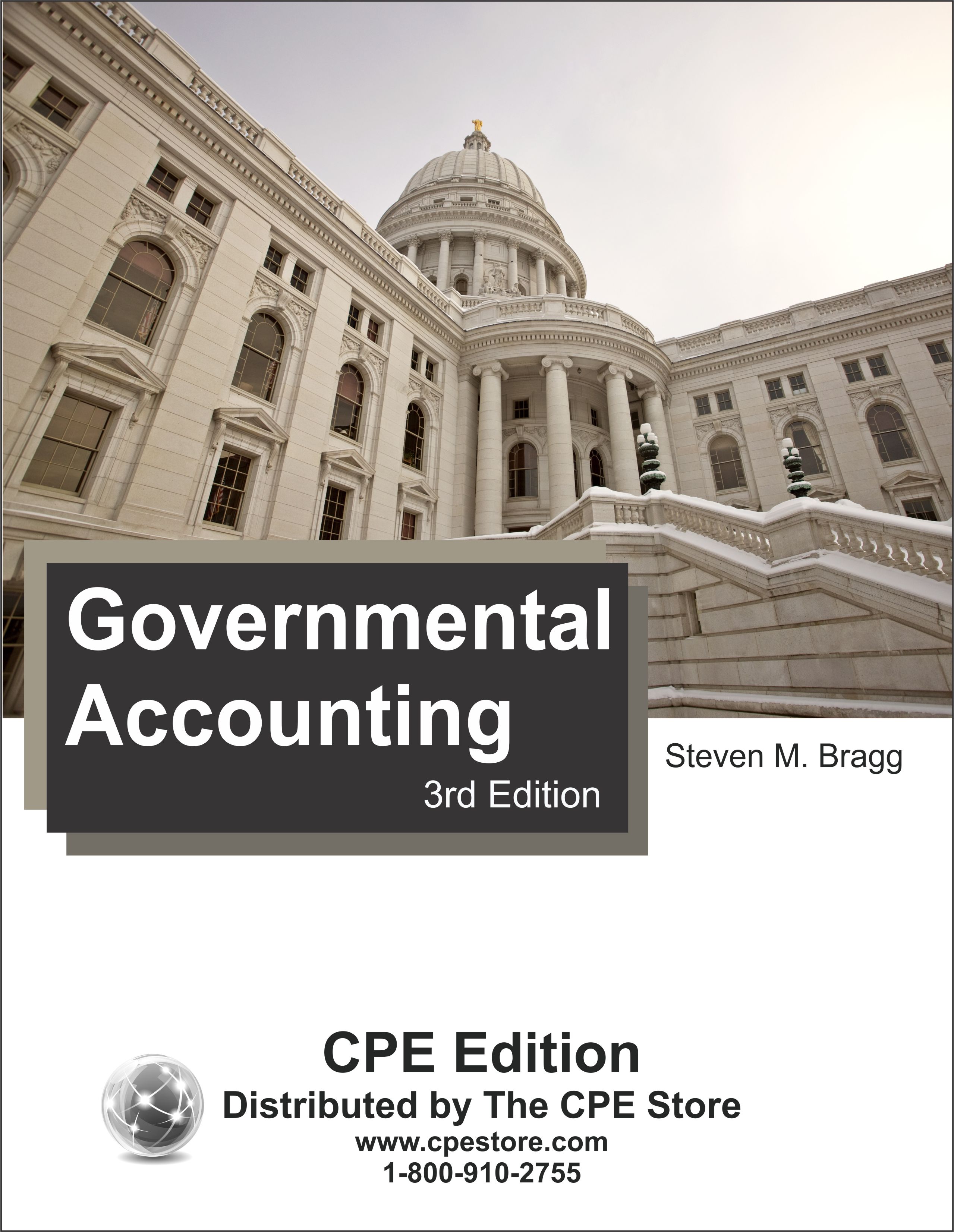
Course number: AA494903
The accounting used by government entities is substantially different from the accounting used by for-profit organizations. This course describes the unique aspects of governmental accounting, including the use of funds, the modified accrual basis of accounting, and many unique financial statement formats and disclosures. There is a strong emphasis on common accounting transactions, the comprehensive annual financial report, budgetary reporting, and nonexchange transactions. In short, Governmental Accounting is an essential desk reference for the professional accountant. Course level: Basic. Prerequisites: None. Course includes integrated text and study guide, final exam, and grading service.NASBA field of study: Accounting (Governmental) Course credit: 13 hours
Printed Version$99
PDF$99
Colleague Test(s)$40
Contents
Governmental GAAP 2023-2024
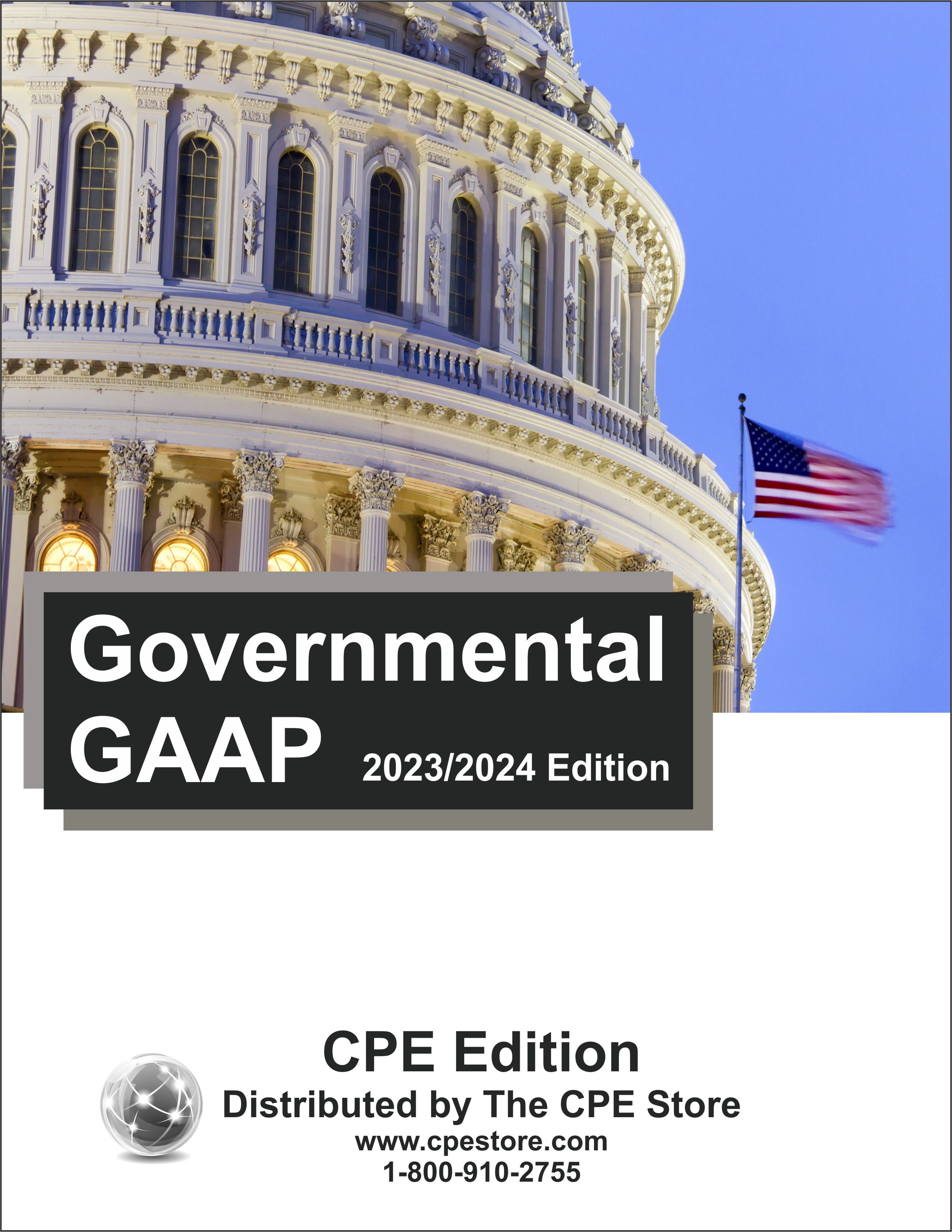
Course number: AA669124
Based on the Wiley GAAP for Governments text, this course provides the latest information on GAAP, with coverage designed specifically for government entities. Includes up-to-date implementation information and explanations of the important developments in governmental GAAP. Illustrations help provide a comprehensive guide to financial reporting for governments at the state and local level. Also includes thorough explanations and expert implementation advice. You will: get up to speed on the newest accounting pronouncements; understand how GAAP applies to government bodies and pension plans; study flowcharts, diagrams, and charts to gain a deeper understanding; and more. Course level: Basic. Prerequisites: None. Course includes integrated text and study guide, final exam, and grading service.NASBA field of study: Accounting (Governmental) Course credit: 40 hours
PDF$269
Colleague Test(s)$120
Contents
Health Care Accounting
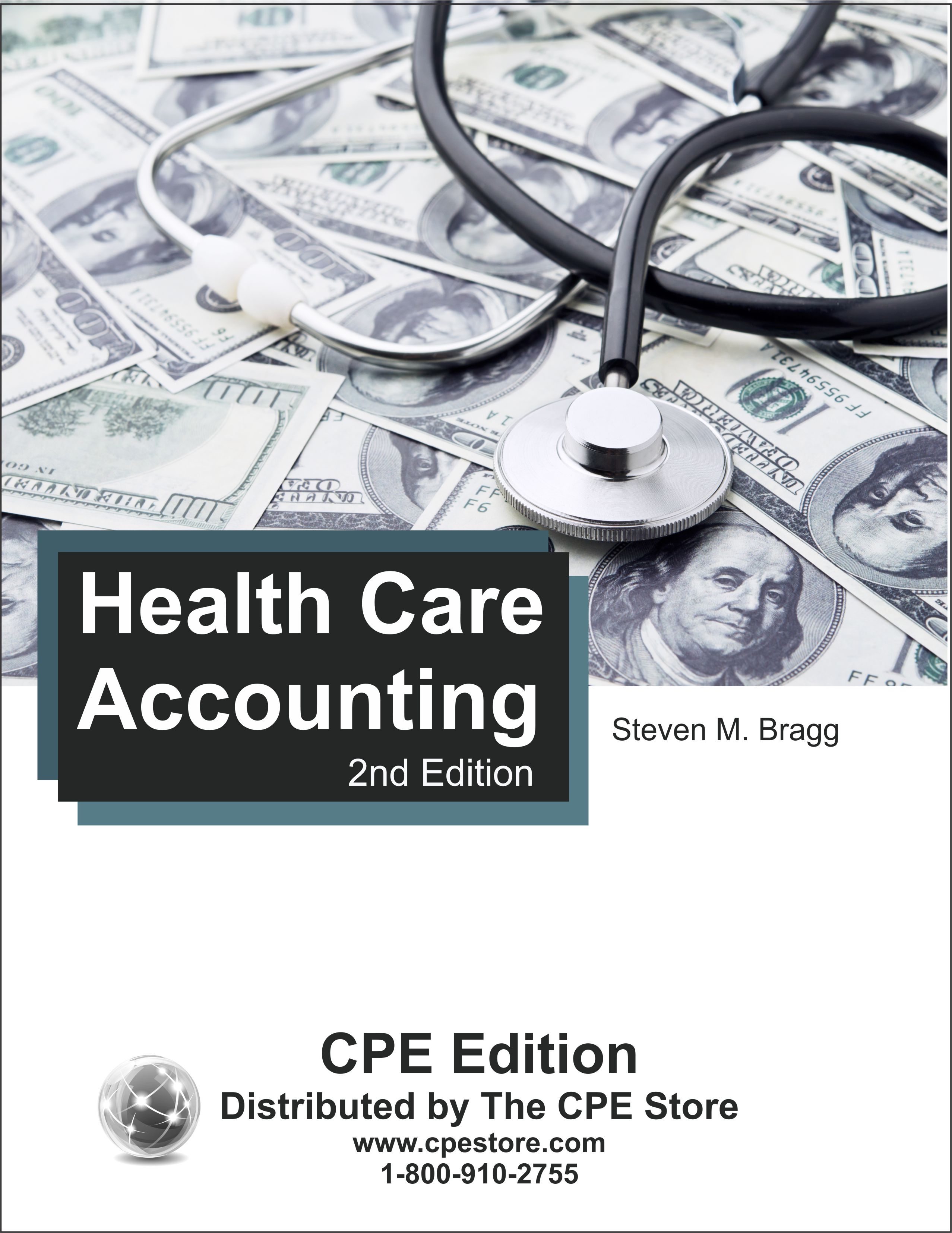
Course number: AA411402
This course discusses the accounting and financial reporting issues related to hospitals, medical group practices, nursing homes, and other health care entities. The course covers the basic system of accounting, financial reporting, and many practical topics for the accountant, including revenue recognition, payroll accounting, fixed asset accounting, debt liabilities, and more. Course level: Basic. Prerequisites: None. Course includes integrated text and study guide, final exam, and grading service.NASBA field of study: Accounting Course credit: 12 hours
Printed Version$89
PDF$89
Colleague Test(s)$35
Contents
Hospitality Accounting
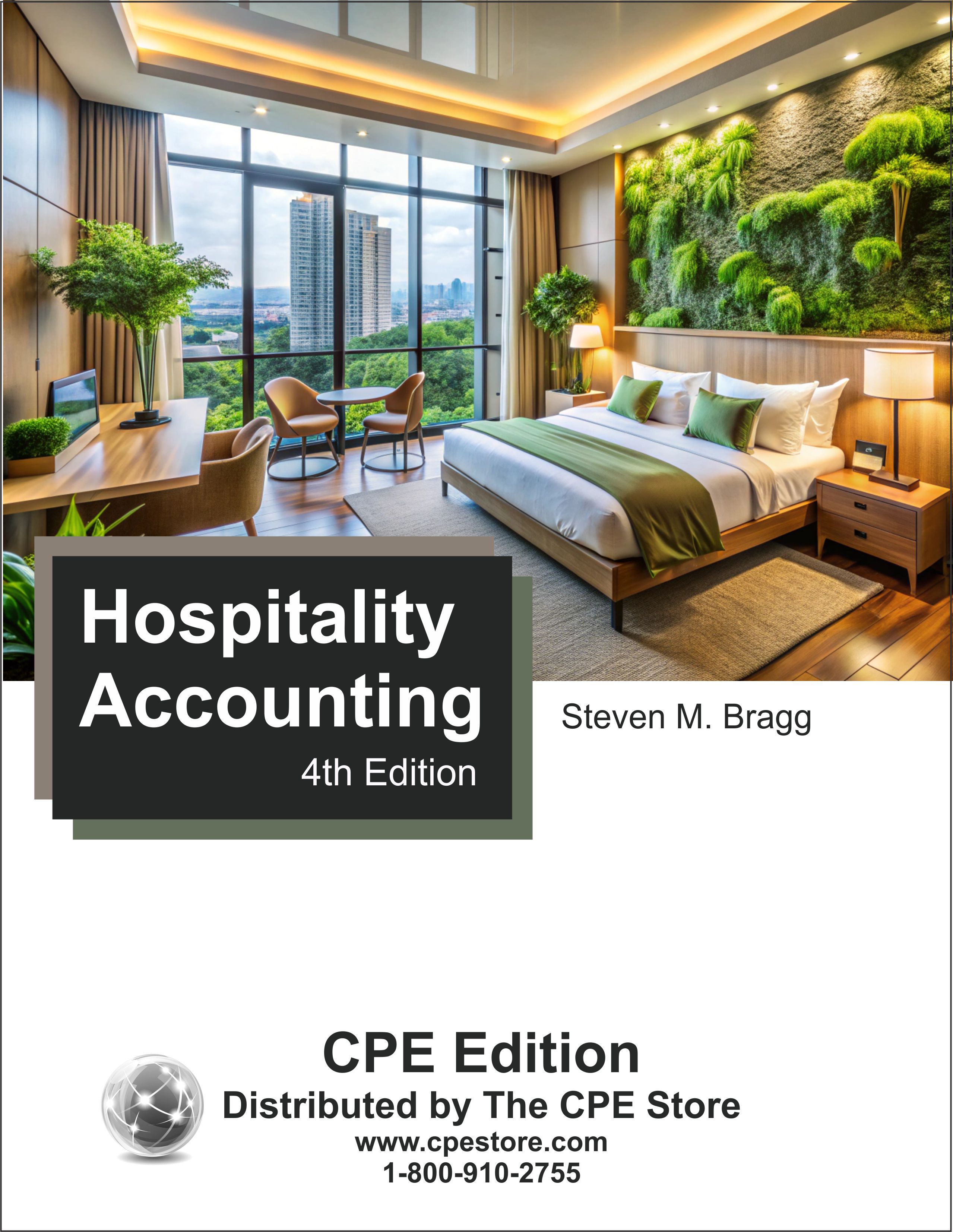
Course number: AA452704
This course describes the essential accounting for anyone in the hospitality industry, which includes hotels, restaurants, spas, and similar businesses. The course familiarizes the accountant with basic concepts and then addresses the various types of financial statements and the accounting needed to construct them. More detailed financial accounting topics include payroll, fixed assets, and payables. There are also many managerial accounting topics, such as the construction of a budget, price formulation systems, cost-volume-profit analysis, and cash management. Course level: Basic. Prerequisites: None. Course includes integrated text and study guide, final exam and grading service.NASBA field of study: Accounting Course credit: 20 hours
Printed Version$139
PDF$139
Colleague Test(s)$60
Contents
How to Audit Cash
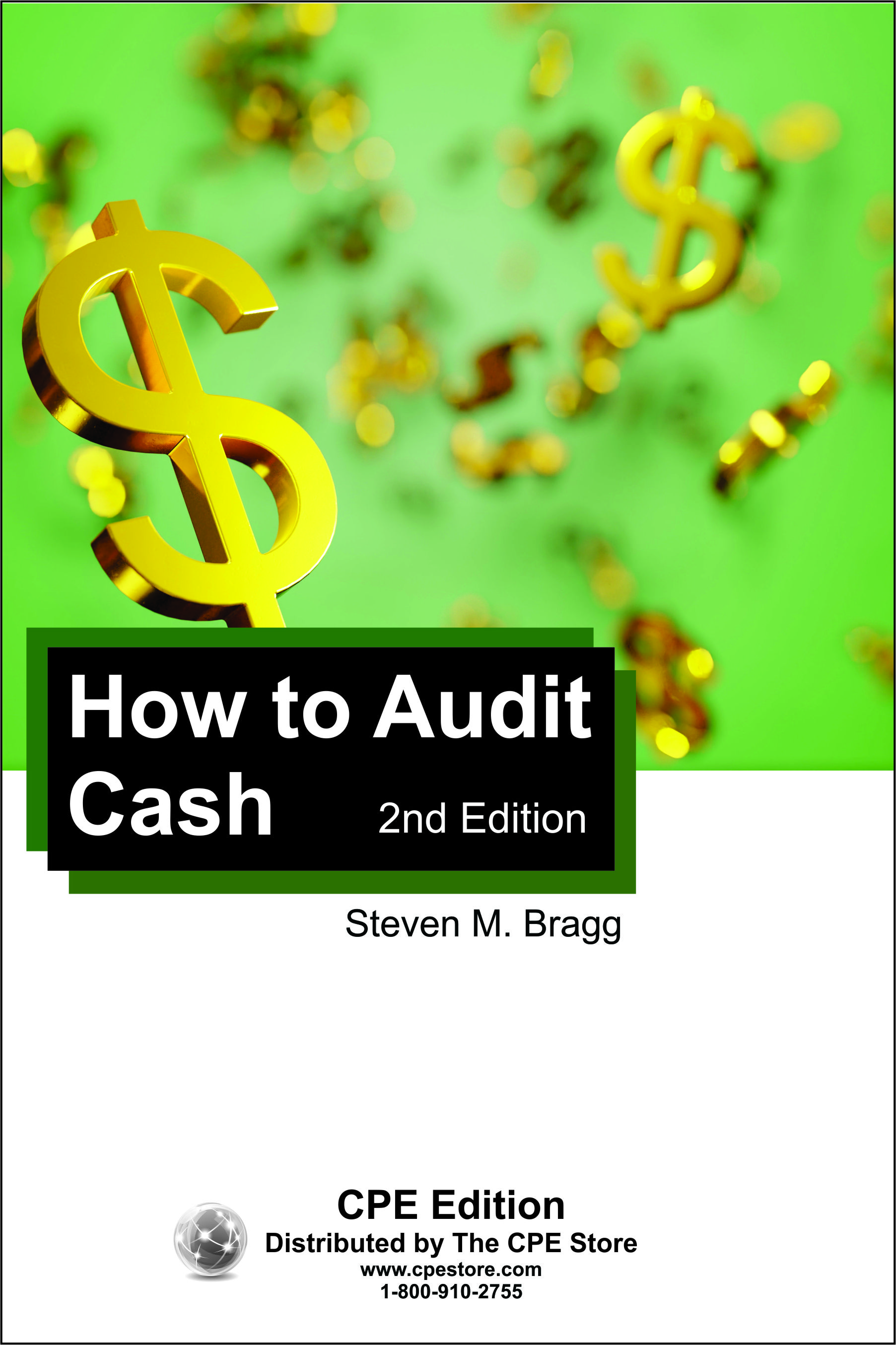
Course number: AA442202
This course clarifies for the auditor every action needed to audit cash. It describes the characteristics of cash from an auditing perspective, and then goes on to describe the activities required to audit a client’s cash accounts. The course contains extensive material about cash-related controls, fraud issues, and the construction of a bank reconciliation and a proof of cash. Course level: Basic. Prerequisites: None. Course includes integrated text and study guide, final exam, and grading service.NASBA field of study: Auditing Course credit: 1 hour
Printed Version$19
PDF$19
Colleague Test(s)$12
Contents
How to Audit Equity
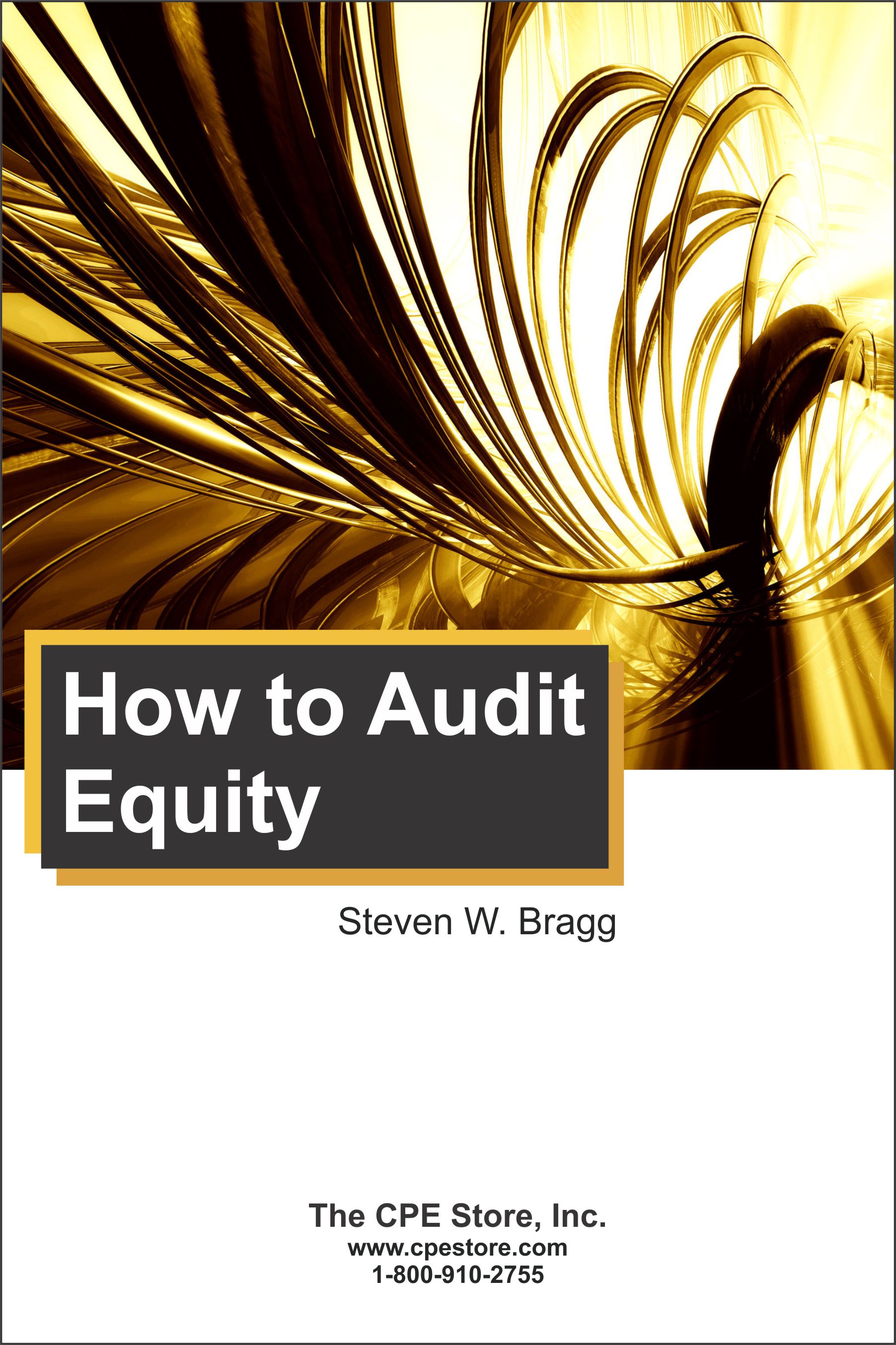
Course number: AA442301
This course clarifies for the auditor every action needed to audit equity. It describes the characteristics of equity from an auditing perspective, and then goes on to describe the activities required to audit the equity portion of the balance sheet. The course also covers the different types of controls that a firm can apply to its equity transactions. Background information concerning the accounting for equity is inserted into the text as needed. Course level: Basic. Prerequisites: None. Course includes integrated text and study guide, final exam, and grading service.NASBA field of study: Auditing Course credit: 1 hour
Printed Version$19
PDF$19
Colleague Test(s)$12
Contents
How to Audit Fixed Assets
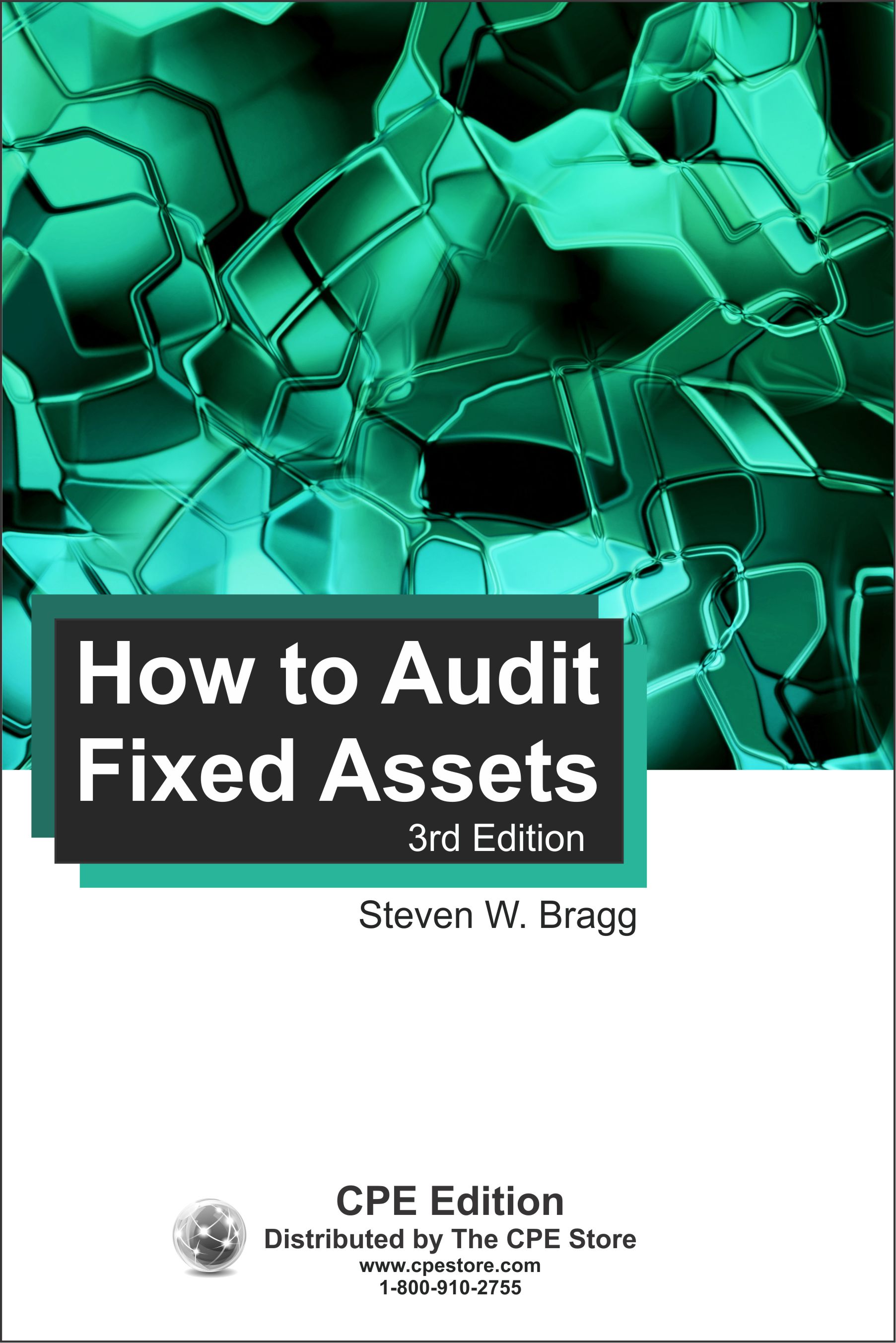
Course number: AA442403
This course clarifies for the auditor every action needed to audit fixed assets. It describes the characteristics of fixed assets from an auditing perspective, and then goes on to describe the activities required to audit both tangible and intangible fixed assets. The course also covers the auditing of depreciation, as well as asset impairment losses. Further, the course materials note several issues that can assist in the planning for an audit of fixed assets. Background information concerning the accounting for fixed assets is inserted into the text as needed. Course level: Basic. Prerequisites: None. Course includes integrated text and study guide, final exam, and grading service.NASBA field of study: Auditing Course credit: 2 hours
Printed Version$19
PDF$19
Colleague Test(s)$12
Contents
How to Audit for Fraud
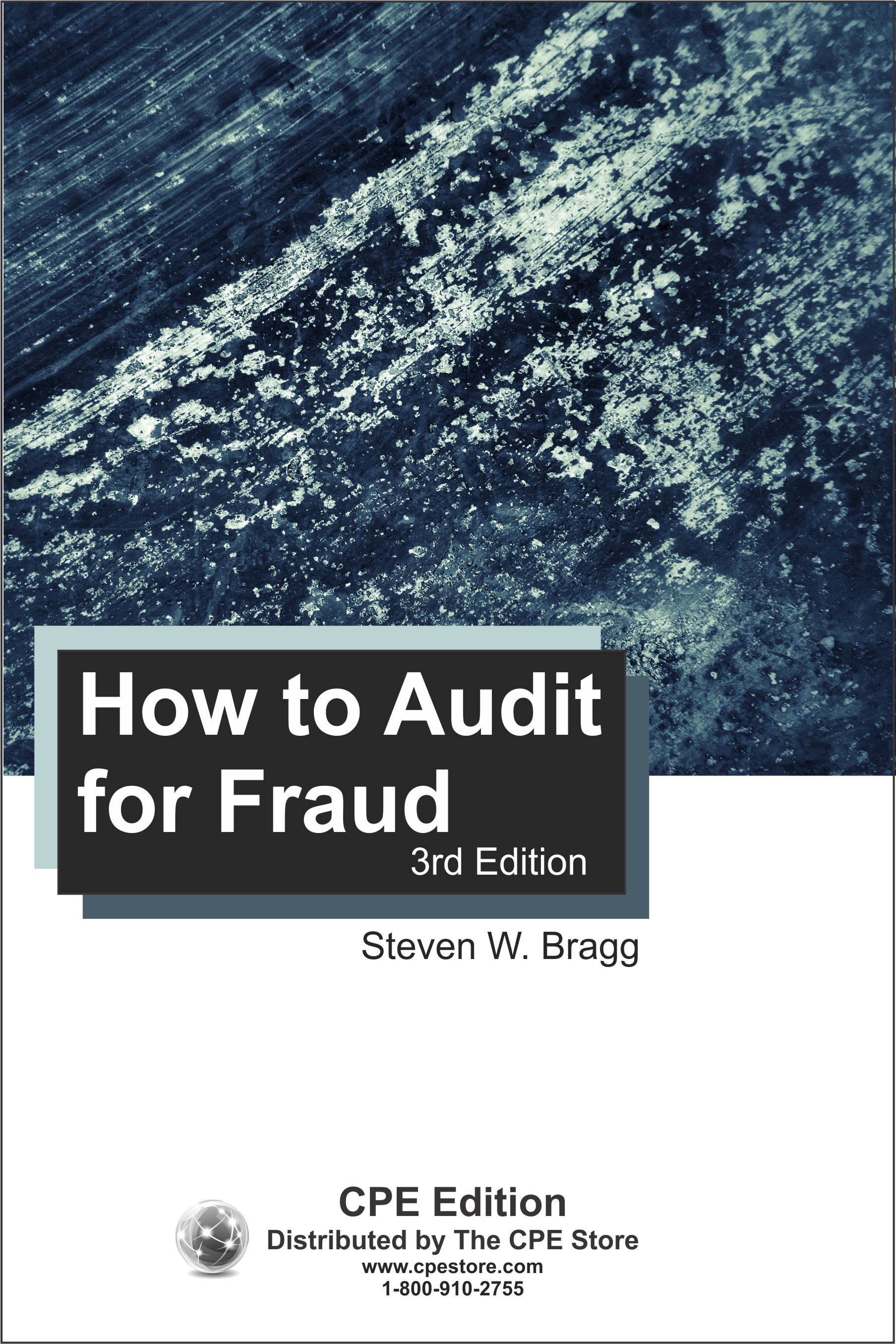
Course number: AA442603
This course shows the auditor how to detect fraud. It does so by discussing fraud risk indicators and other clues indicating the presence of fraud, and itemizes the many extended audit procedures that can be used to detect traces of fraud. The course also notes who is responsible for fraud prevention and detection, and covers the different ways in which financial statements can be fraudulently misstated. Course level: Basic. Prerequisites: None. Course includes integrated text and study guide, final exam, and grading service.NASBA field of study: Auditing Course credit: 3 hours
Printed Version$29
PDF$29
Colleague Test(s)$15
Contents
How to Audit Inventory
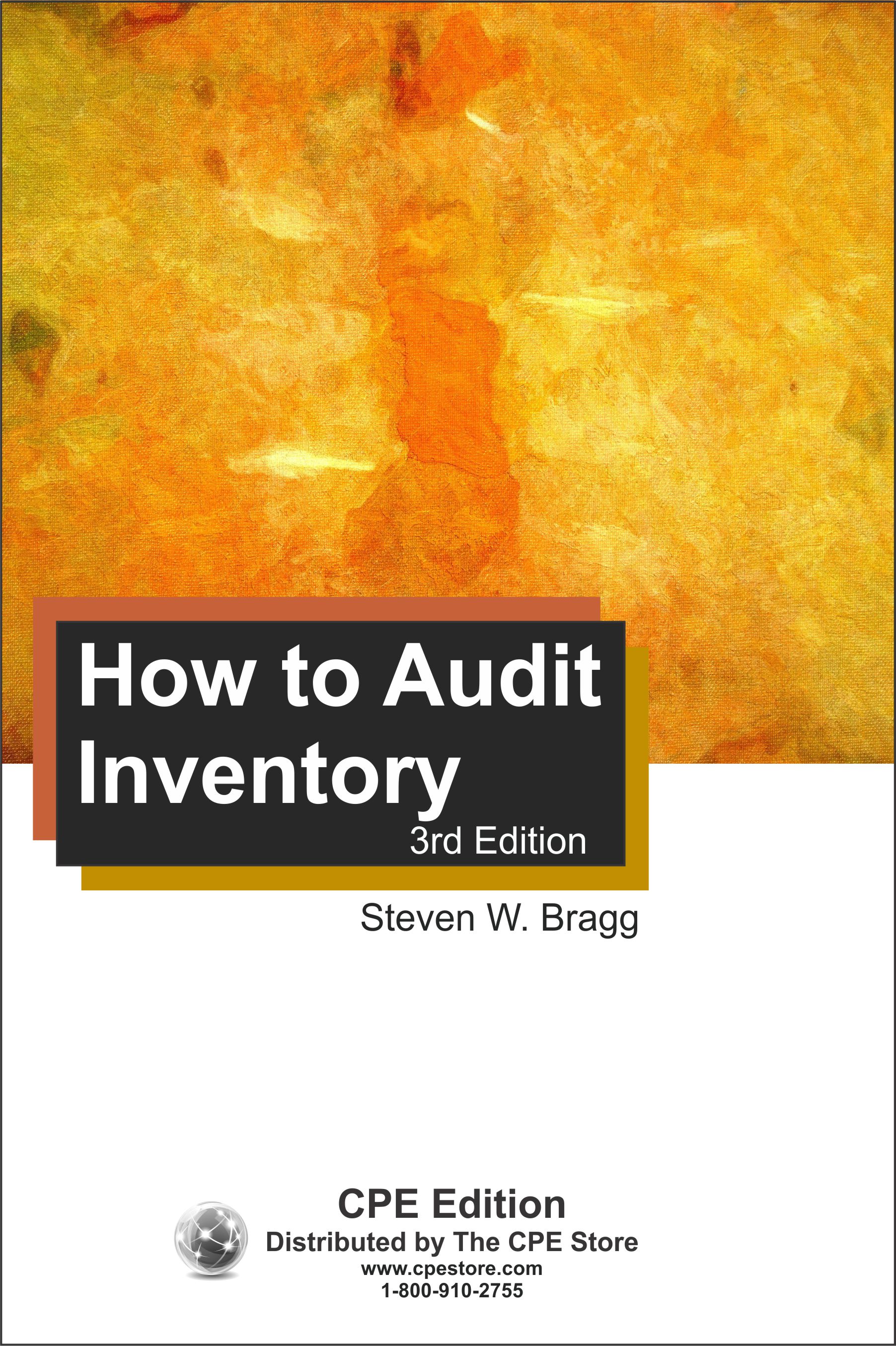
Course number: AA442803
This course clarifies for the auditor every action needed to audit inventory. It describes the characteristics of inventory from an auditing perspective, and then goes on to describe the steps required to audit inventory. Background information concerning inventory is also included, such as physical inventory counts, the lower of cost or market rule, and inventory cost layering. Course level: Basic. Prerequisites: None. Course includes integrated text and study guide, final exam, and grading service.NASBA field of study: Auditing. Course credit: 2 hours
Printed Version$19
PDF$19
Colleague Test(s)$12
Contents
How to Audit Liabilities
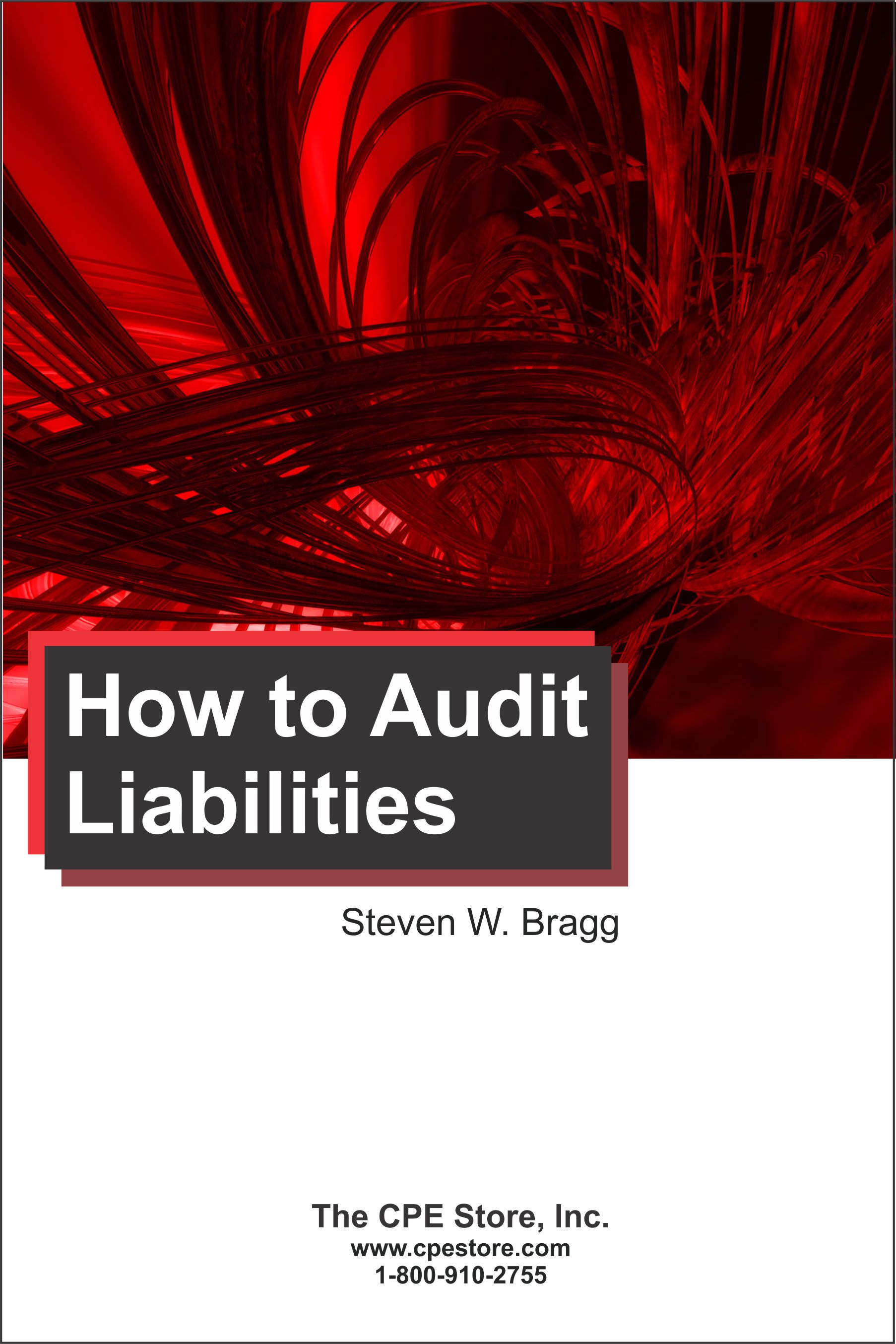
Course number: AA442901
This course clarifies for the auditor every action needed to audit liabilities. It describes the characteristics of liabilities from an auditing perspective, and then goes on to describe the steps required to audit many types of liabilities, including accounts payable, accrued liabilities, and debt. There is a particular emphasis on the search for unrecorded liabilities. Background information concerning the accounting for liabilities is inserted into the text as needed. Course level: Basic. Prerequisites: None. Course includes integrated text and study guide, final exam, and grading service.NASBA field of study: Auditing Course credit: 1 hour
Printed Version$19
PDF$19
Colleague Test(s)$12
Contents
How to Audit Receivables
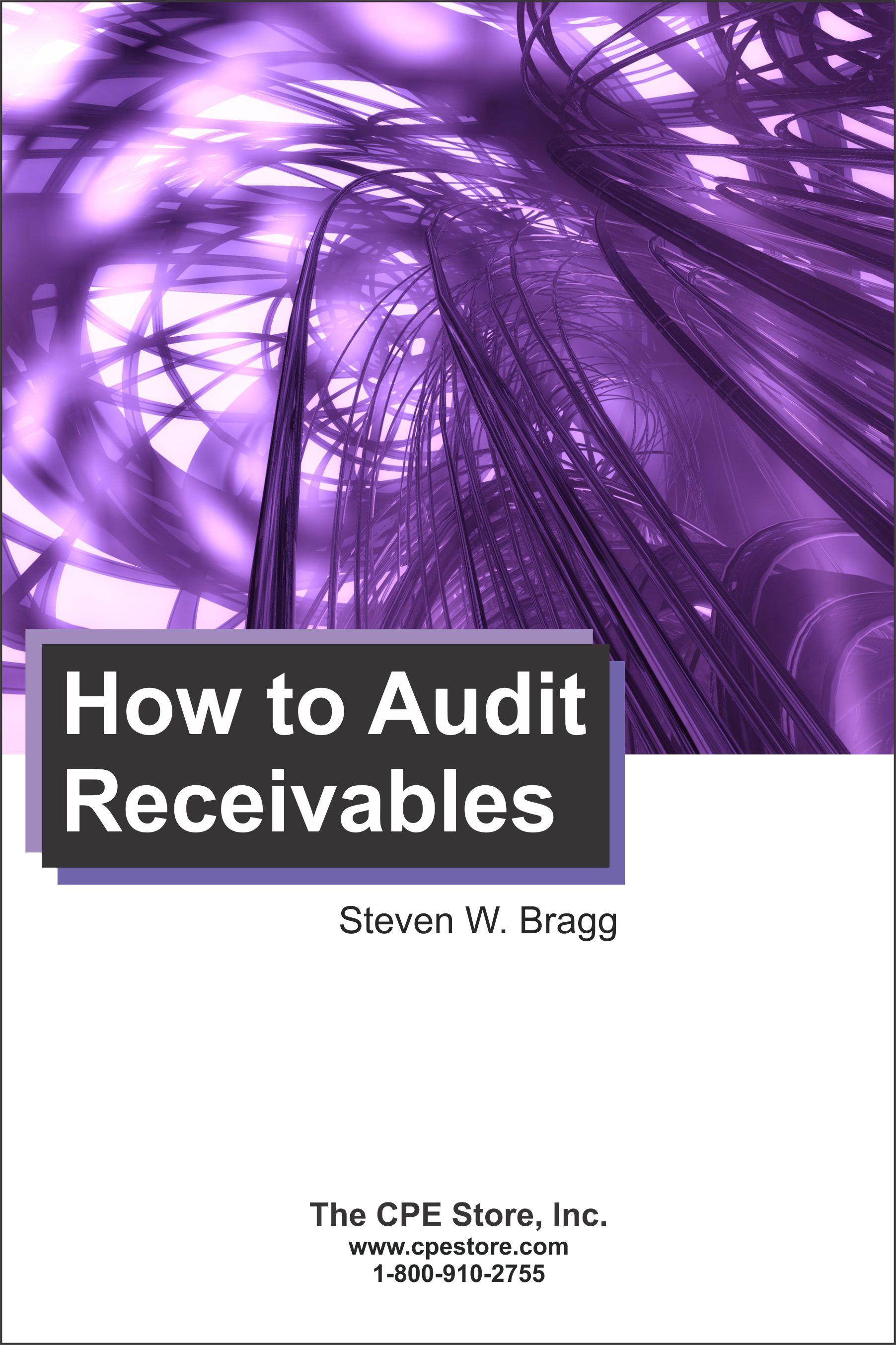
Course number: AA443101
This course clarifies for the auditor every action needed to audit receivables. It describes the characteristics of receivables from an auditing perspective, and then goes on to describe the steps required to audit receivables. Background information concerning receivables is also included, such as the allowance for doubtful accounts, accounting for notes receivable, receivable fraud, and receivable controls. Course level: Basic. Prerequisites: None. Course includes integrated text and study guide, final exam, and grading service.NASBA field of study: Auditing Course credit: 2 hours
Printed Version$19
PDF$19
Colleague Test(s)$12
Contents
How to Audit Revenue
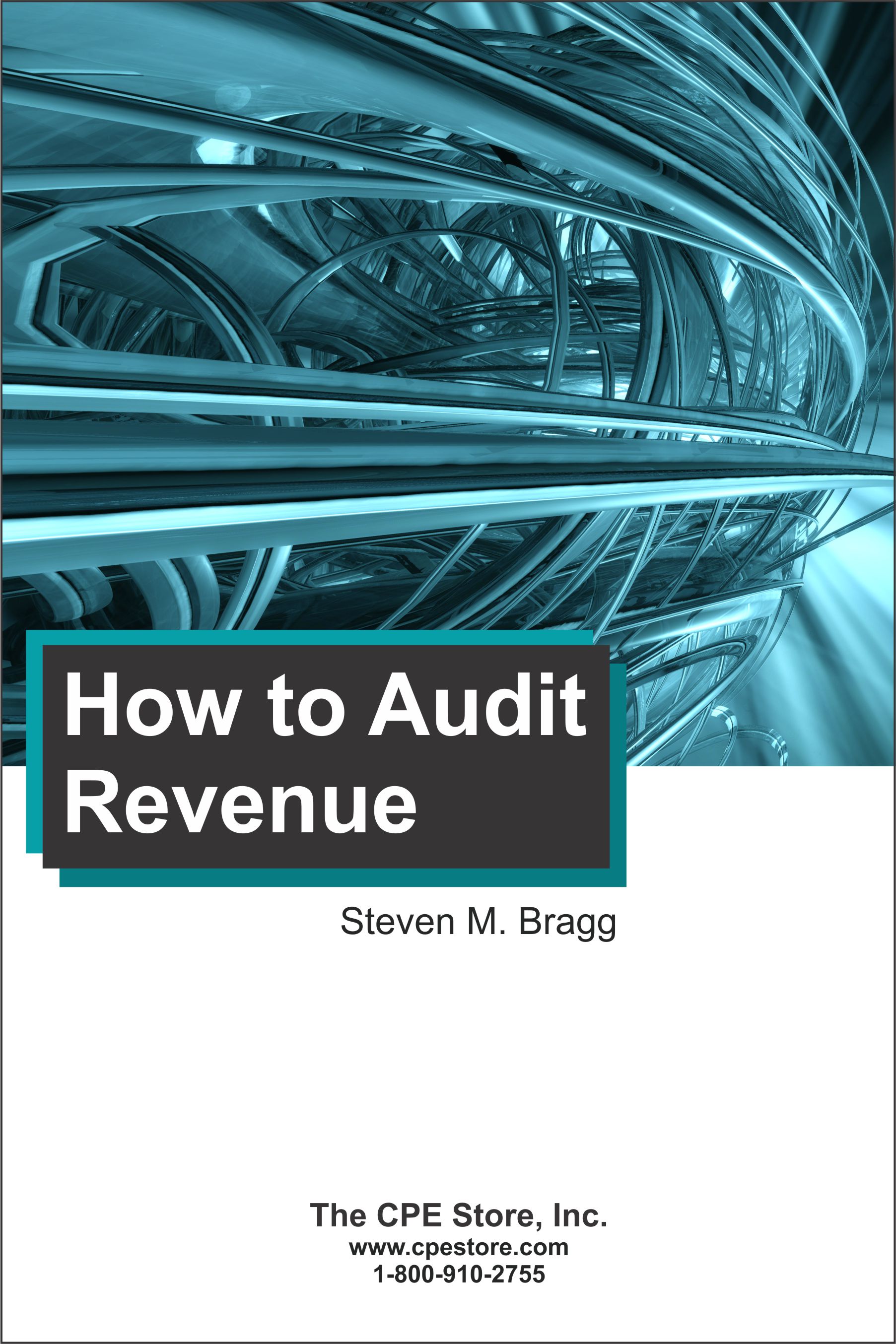
Course number: AA489401
This course clarifies for the auditor every action needed to audit revenue. It describes the characteristics of revenue from an auditing perspective, and then goes on to describe the steps required to audit revenue. Background information concerning revenue recognition is also included, such revenue recognition rules, consignment arrangements, customer acceptance issues, revenue fraud, and revenue controls. Course level: Basic. Prerequisites: None. Course includes integrated text and study guide, final exam, and grading service.NASBA field of study: Auditing Course credit: 2 hours
Printed Version$19
PDF$19
Colleague Test(s)$12
Contents
How to Conduct an Audit Engagement
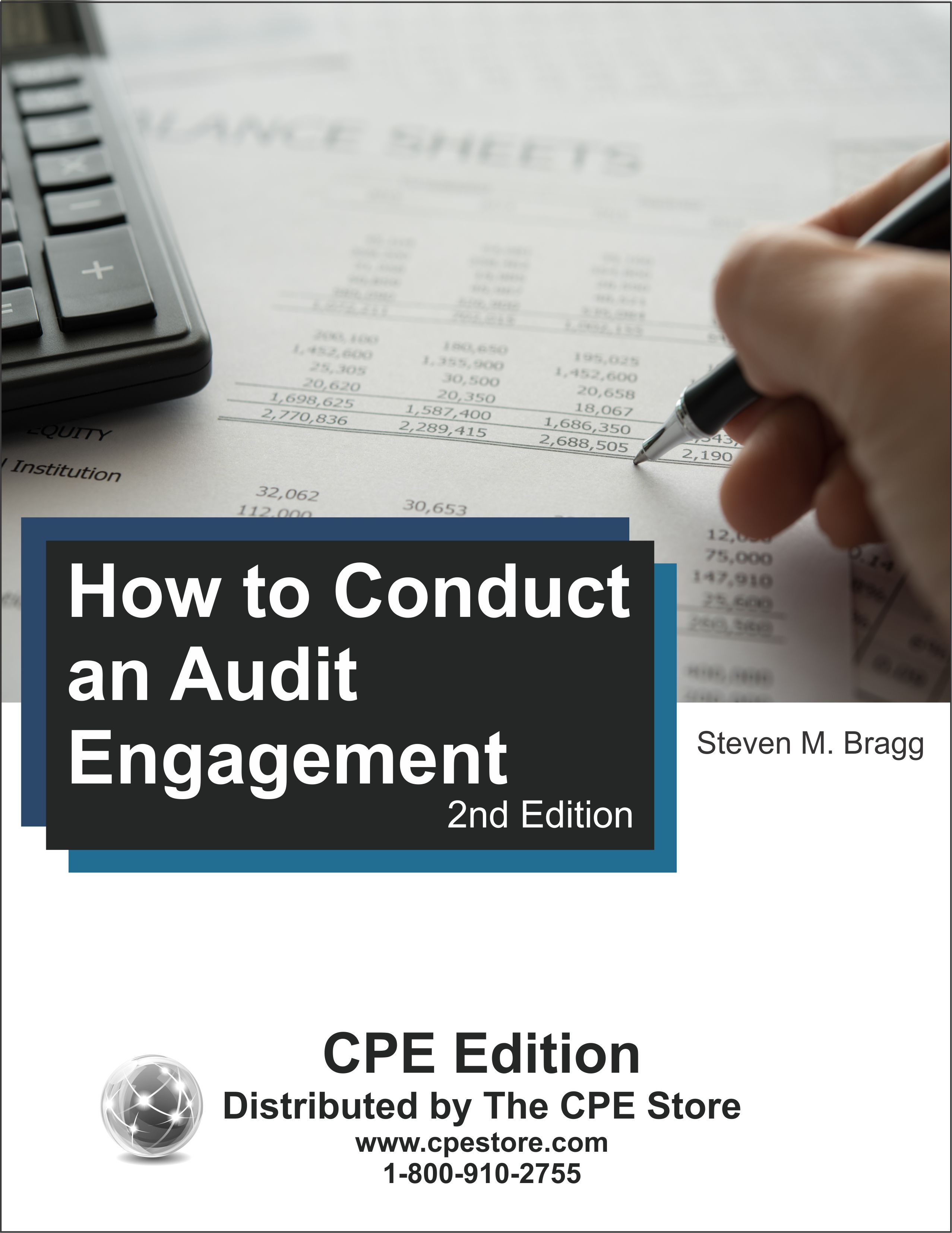
Course number: AA421402
The auditor needs to conduct audits as efficiently and thoroughly as possible. In How to Conduct an Audit Engagement, we describe every aspect of an audit engagement, including the engagement letter, audit planning, audit sampling, audit evidence, fraud considerations, audit documentation, auditor reports, and much more. Throughout, there is an emphasis on the practical aspects of auditing. This course is derived in part from the Statements on Auditing Standards. Course level: Basic. Course includes integrated text and study guide, final exam, and grading service.NASBA field of study: Auditing Course credit: 17 hours
Printed Version$119
PDF$119
Colleague Test(s)$50
Contents
Implementing the New Lease Standard ASU 2016-02
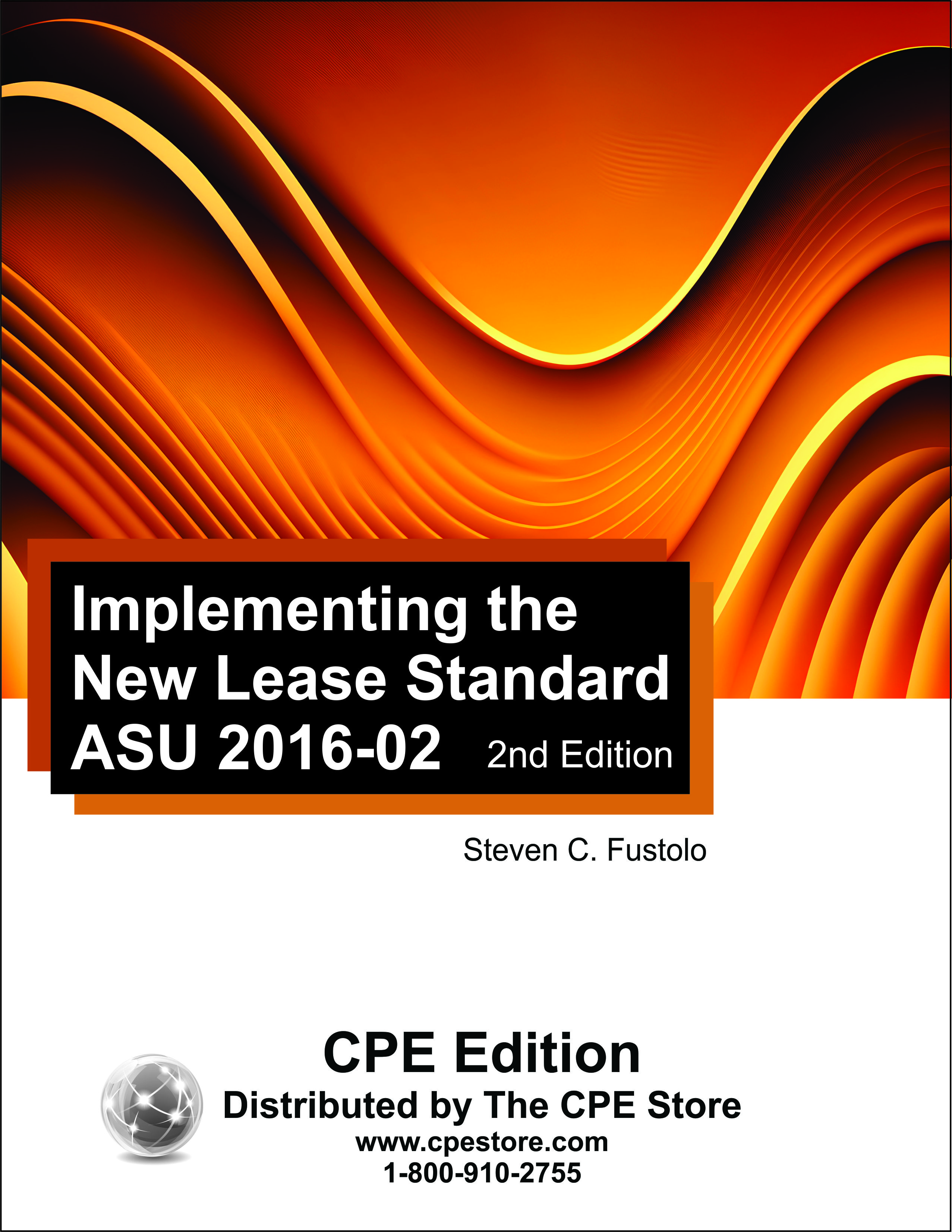
Course number: AA751902
The purpose of this course is to review the changes made to lease accounting by ASU 2016-02, Leases, (as further amended by ASU 2018-01, Land Easement—Practical Expedient for Transition to Topic 842), and numerous other amendments, and to establish the principles that lessees and lessors shall apply to report useful information to users of financial statements about the amount, timing, and uncertainty of cash flows arising from a lease. Topics include a review of the new rules for lessees and lessors, the types of leases, how to account for the balance sheet, income statement and cash flows statement impacts of different types of leases, the implementation requirements, and more. Course level: Basic. Prerequisites: None. Course includes integrated text and study guide, final exam, and grading service.NASBA field of study: Accounting Course credit: 8 hours
Printed Version$69
PDF$69
Colleague Test(s)$25
Contents
Income Statement: Accounting and Reporting
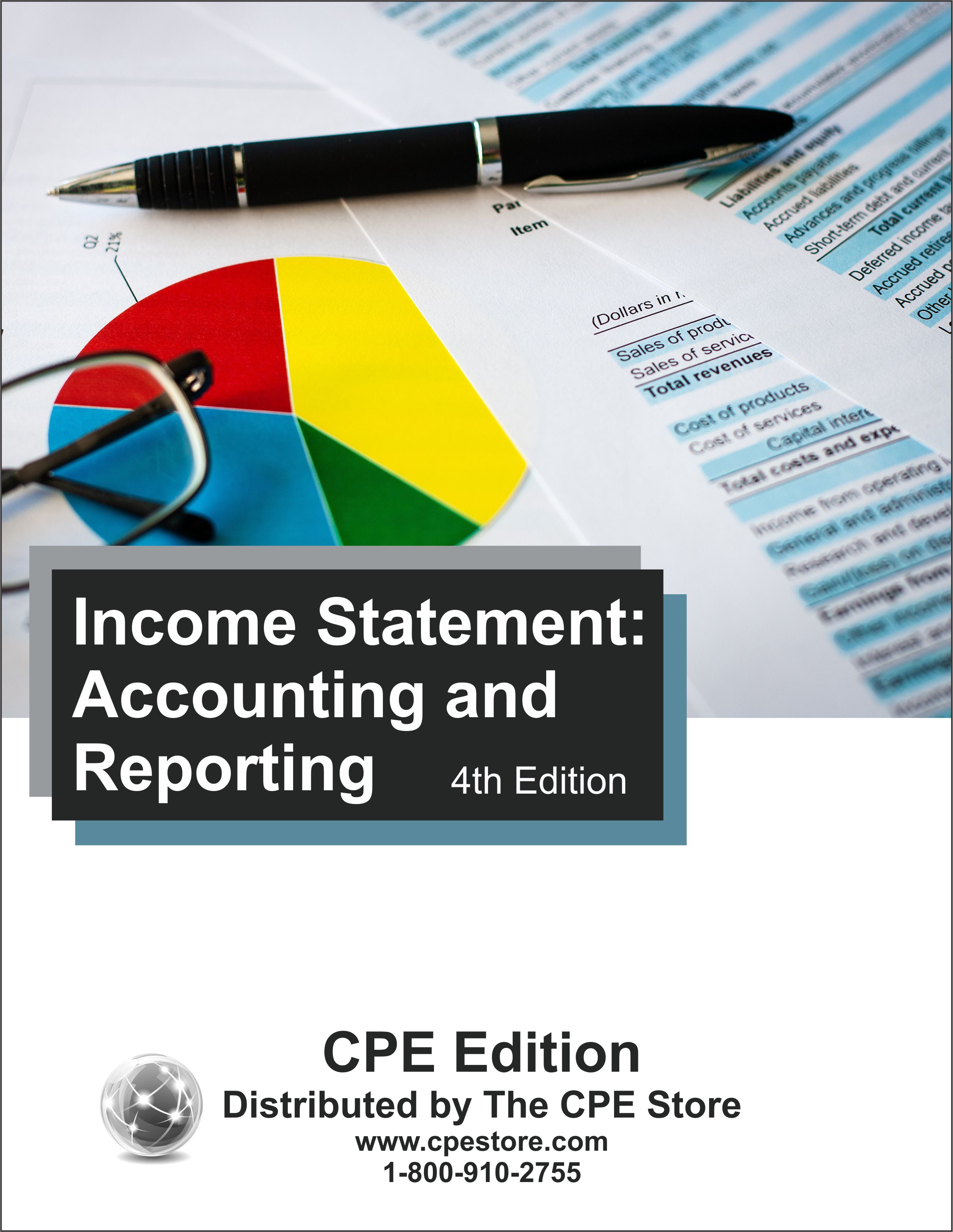
Course number: AA775504
This course addresses income statement accounting and reporting. It discusses a variety of accounting issues surrounding income statement items and related information, the format of the income statement, major income statement categories, unusual and nonrecurring items, discontinued operations, research and development costs, deferred compensation arrangements, share-based payments, compensation expense arising under a stock option plan, insurance costs, and earnings per share (EPS) calculation. Course level: Basic. Prerequisites: None. Course includes integrated text and study guide, final exam, and grading service.NASBA field of study: Accounting Course credit: 4 hours
Printed Version$39
PDF$39
Colleague Test(s)$15
Contents
Internal Auditing Guidebook
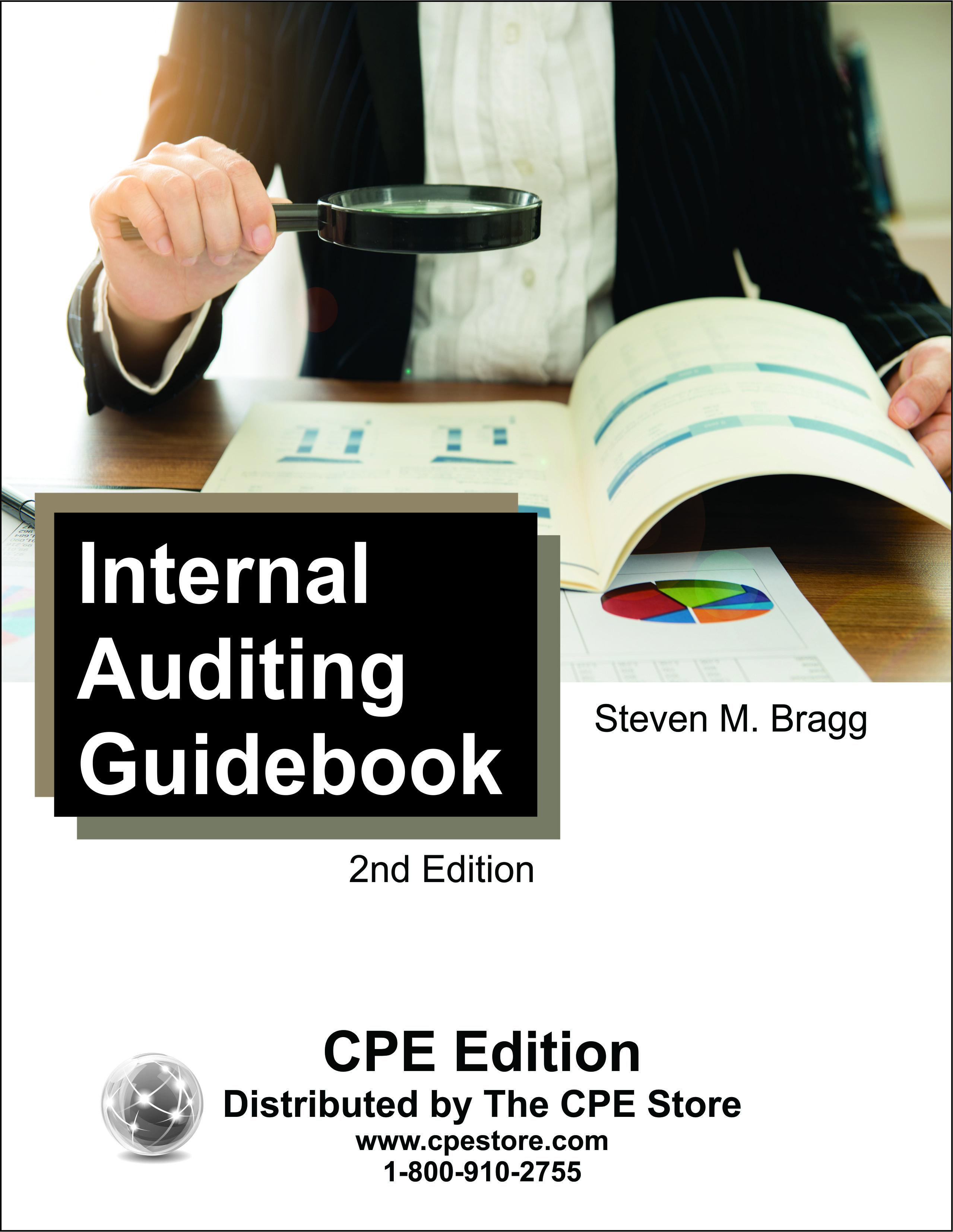
Course number: AA422102
A successful internal audit program is an essential tool for determining how well an organization’s processes and controls are functioning. It can identify high-risk areas and determine how well existing controls are mitigating risks. In the Internal Auditing Guidebook, we cover all aspects of the internal auditing function, including governance, risk management, internal controls, fraud prevention and detection, audit evidence, audit sampling, data analytics, how to conduct engagements, and much more. This course is designed to assist in the development of a fine-tuned internal audit department that can help to minimize risks and provide valuable consulting advice to every area of a business. Course level: Basic. Prerequisites: None. Course includes integrated text and study guide, final exam, and grading service.NASBA field of study: Auditing Course credit: 10 hours
Printed Version$79
PDF$79
Colleague Test(s)$30
Contents
Internal Control and Anti-Fraud Program for the Small Business
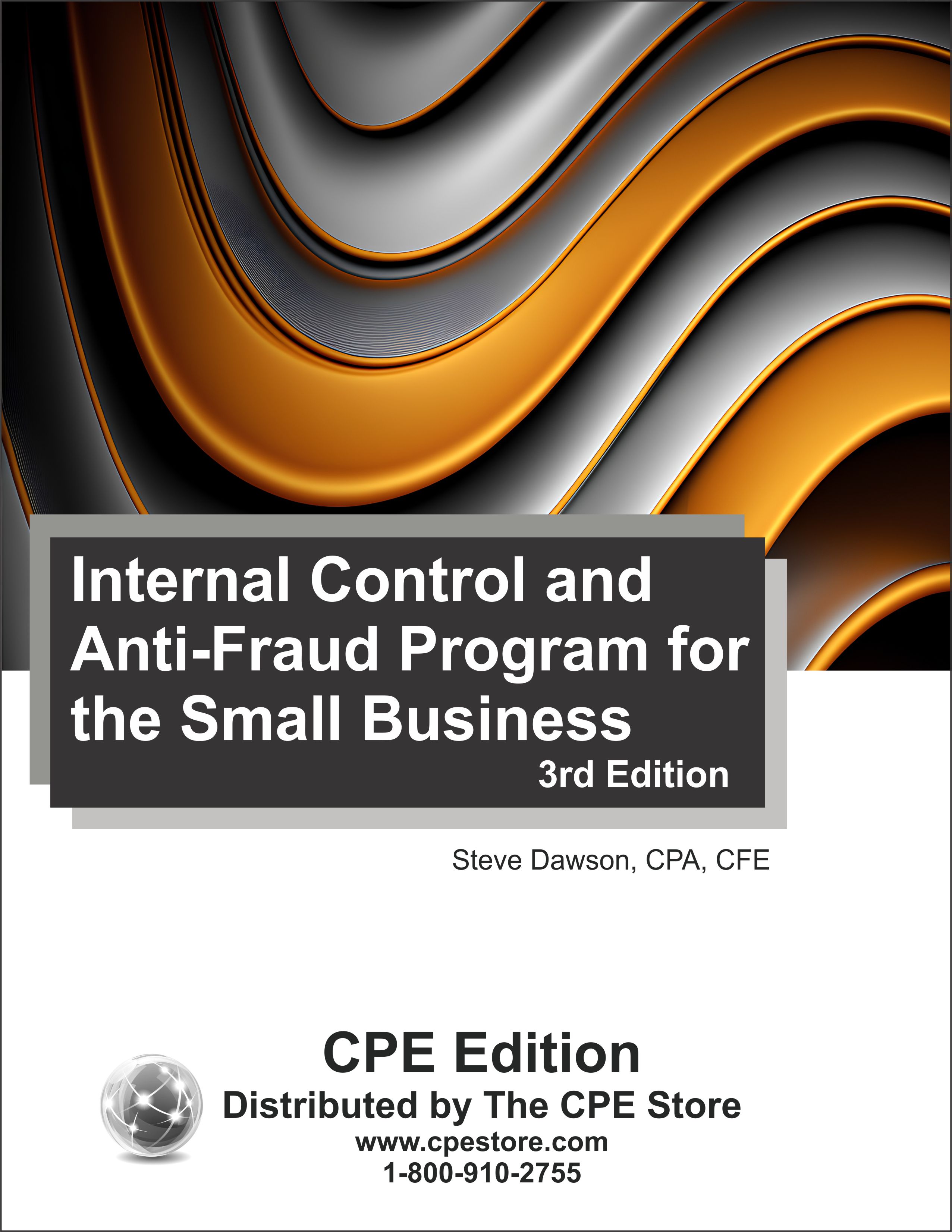
Course number: AA666503
This course is a practical guide to protection for businesses NOT subject to the Sarbanes-Oxley Act. It is geared specifically toward private, non-public small businesses and their unique needs in the realm of fraud protection. Covering all elements of an internal control structure applicable to the small business community, this course provides a step-by-step roadmap for designing and implementing an effective, efficient internal control structure/anti-fraud program tailored to your business’s particular needs. Case studies are used throughout to illustrate internal control weaknesses and the fraud that can result, and follow-up analysis describes the controls that would have reduced the probability of fraud had they been in place. You’ll learn how to analyze your company’s internal control issues, and implement a robust system for fraud prevention. The step-by-step internal control program includes the following: understanding the five elements of internal control, avoiding gaps in protection with relevant controls, designing the ultimate anti-fraud program, and implementing internal control tailored to your needs. Course level: Basic. Prerequisites: None. Course includes integrated text and study guide, final exam, and grading service.NASBA field of study: Auditing Course credit: 7 hours
Printed Version$69
PDF$69
Colleague Test(s)$20
Contents
Internal Control and Fraud Detection
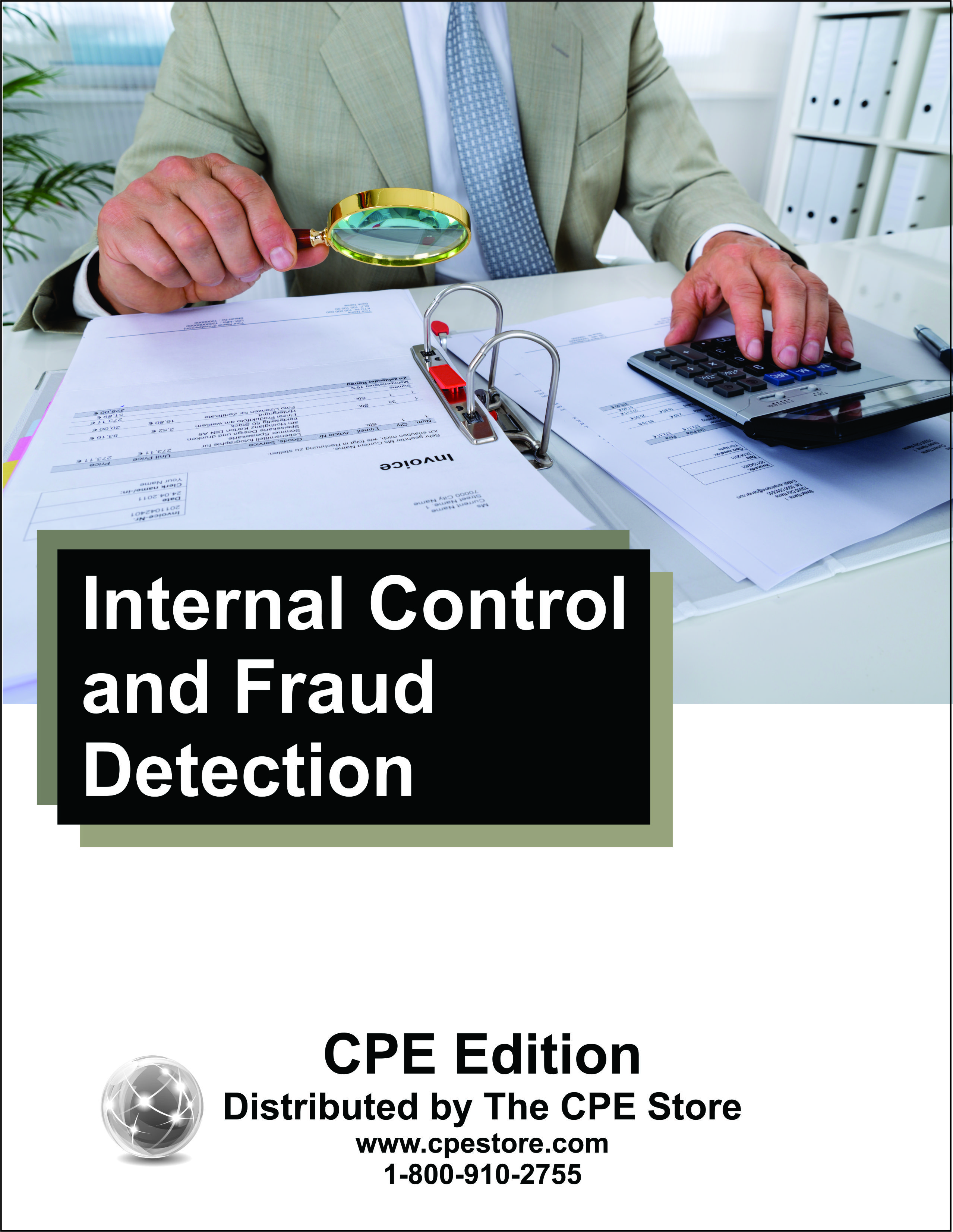
Course number: AA762402
This course presents the principles of internal control to help readers understand the nature and context of control, such as limitations of internal controls, the most recognized controls frameworks (e.g. COSO Framework, Green Book), and some common and important control procedures. It also includes steps on how to identify risks and controls, advice on how to assess the adequacy of controls, a discussion of how to reach a fair assessment, and documentation requirements for evidences of effective controls. In addition, the course discusses requirements related to performing an integrated audit: SAS 130 and AS No. 2201. Although these auditing rules are mandatory for external auditors and not for management, management should give consideration to following the approach described in these requirements. Includes an illustration of potential internal controls weaknesses involving accounting and financial reporting cycles, along with examples of compensating controls. It provides sample audit programs of key processes. It also incorporates appendices including: an example of management internal control report, a SOX Section 404 management compliance checklist, financial reporting controls and information systems checklist for each key cycle (e.g. revenue, inventory, financing), and a computer applications checklist. Course level: Basic. Prerequisites: None. Course includes integrated text and study guide, final exam, and grading service.NASBA field of study: Auditing Course credit: 8 hours
Printed Version$69
PDF$69
Colleague Test(s)$25
Contents
International Accounting
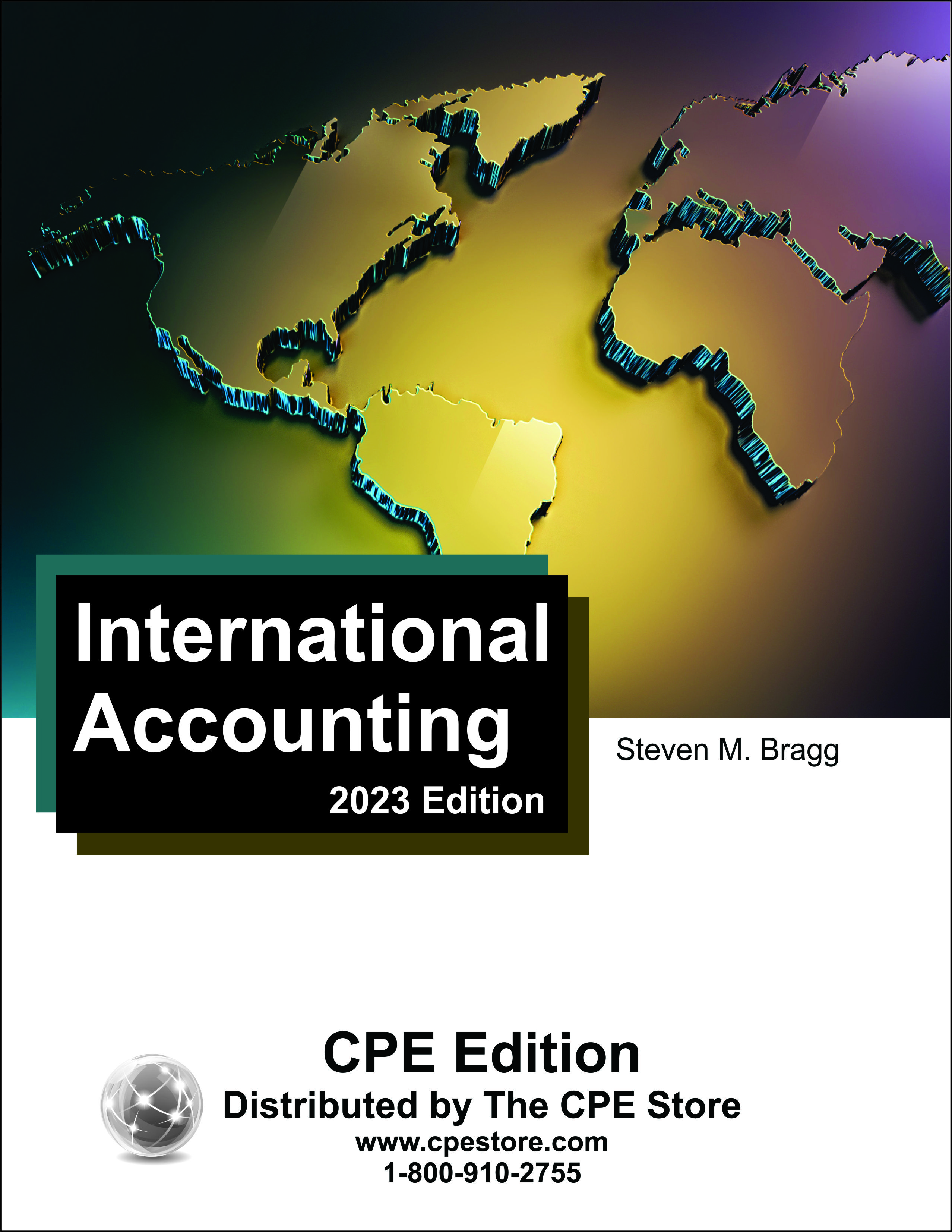
Course number: AA432023
International accounting standards are used as the basis for financial reporting outside of the United States. The original documents are lengthy and difficult to research. The International Accounting course solves this problem by condensing the key elements of the standards into a single volume. This course describes the key elements of each accounting topic, how accounting information is to be disclosed, and where to look in the source documents for additional information. The text contains hundreds of practical examples that show how to apply international accounting standards to real-world situations, as well as sample journal entries and usage tips. In short, International Accounting serves as a handy reference for accountants who need quick answers to difficult problems. Course level: Basic. Prerequisites: None. Course includes integrated text and study guide, final exam and grading service.NASBA field of study: Accounting Course credit: 25 hours
Printed Version$169
PDF$169
Colleague Test(s)$75
Contents
Law Firm Accounting
On Sale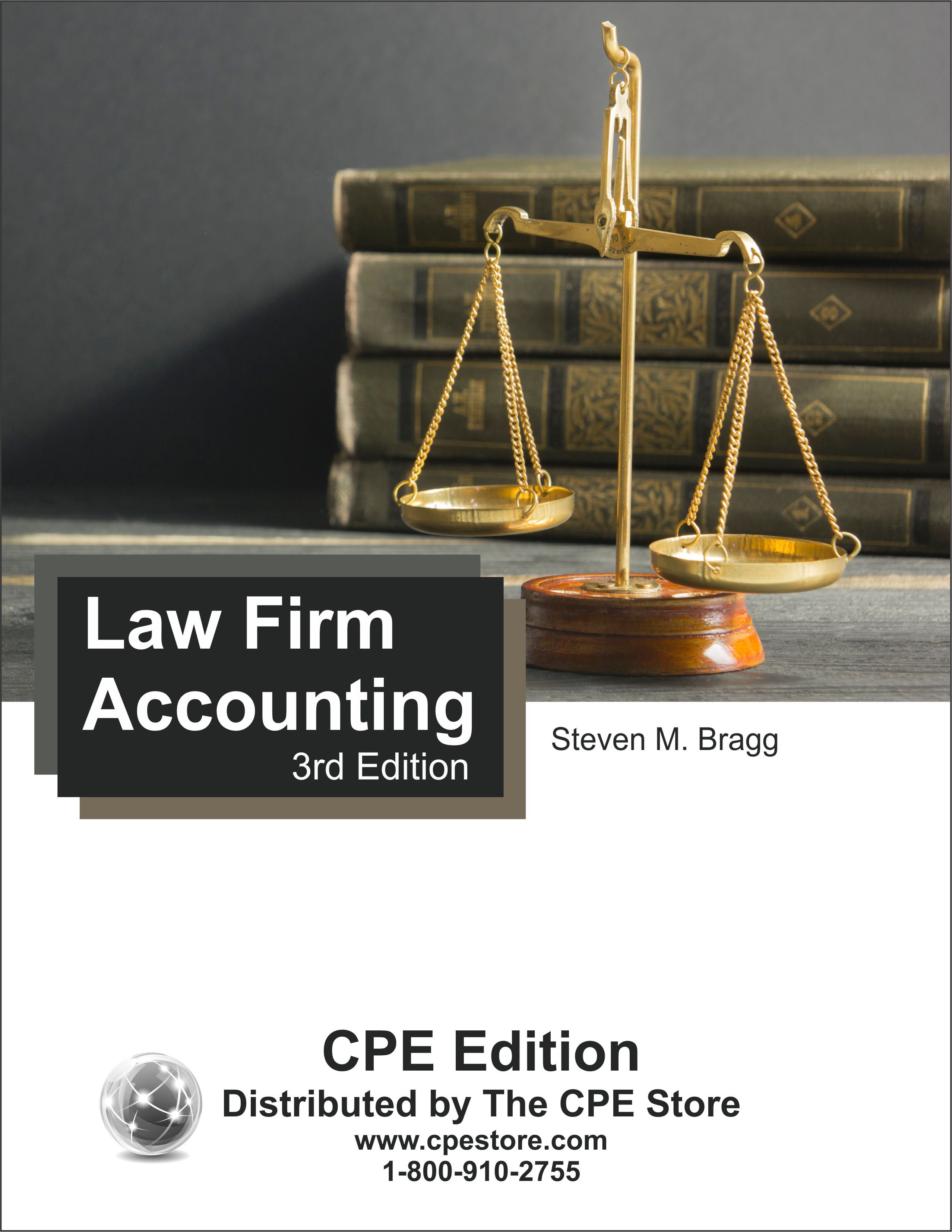
Course number: AA441503
A law firm has a number of unique accounting requirements. It is strongly focused on the proper identification of chargeable hours, correctly structured billings, distributable income calculations, partner accounts, practice group reporting, realization rates, and much more. Law Firm Accounting provides the accountant with the information needed to set up a charge code system, account for ongoing business transactions, prepare financial statements, and issue a broad array of reports that are specifically targeted at the needs of a law firm. In short, it addresses every aspect of the accounting for a law firm. Course level: Basic. Prerequisites: None. Course includes integrated text and study guide, final exam and grading service.NASBA field of study: Accounting Course credit: 3 hours
Printed Version$22
PDF$22
Colleague Test(s)$15
Contents
Lean Accounting
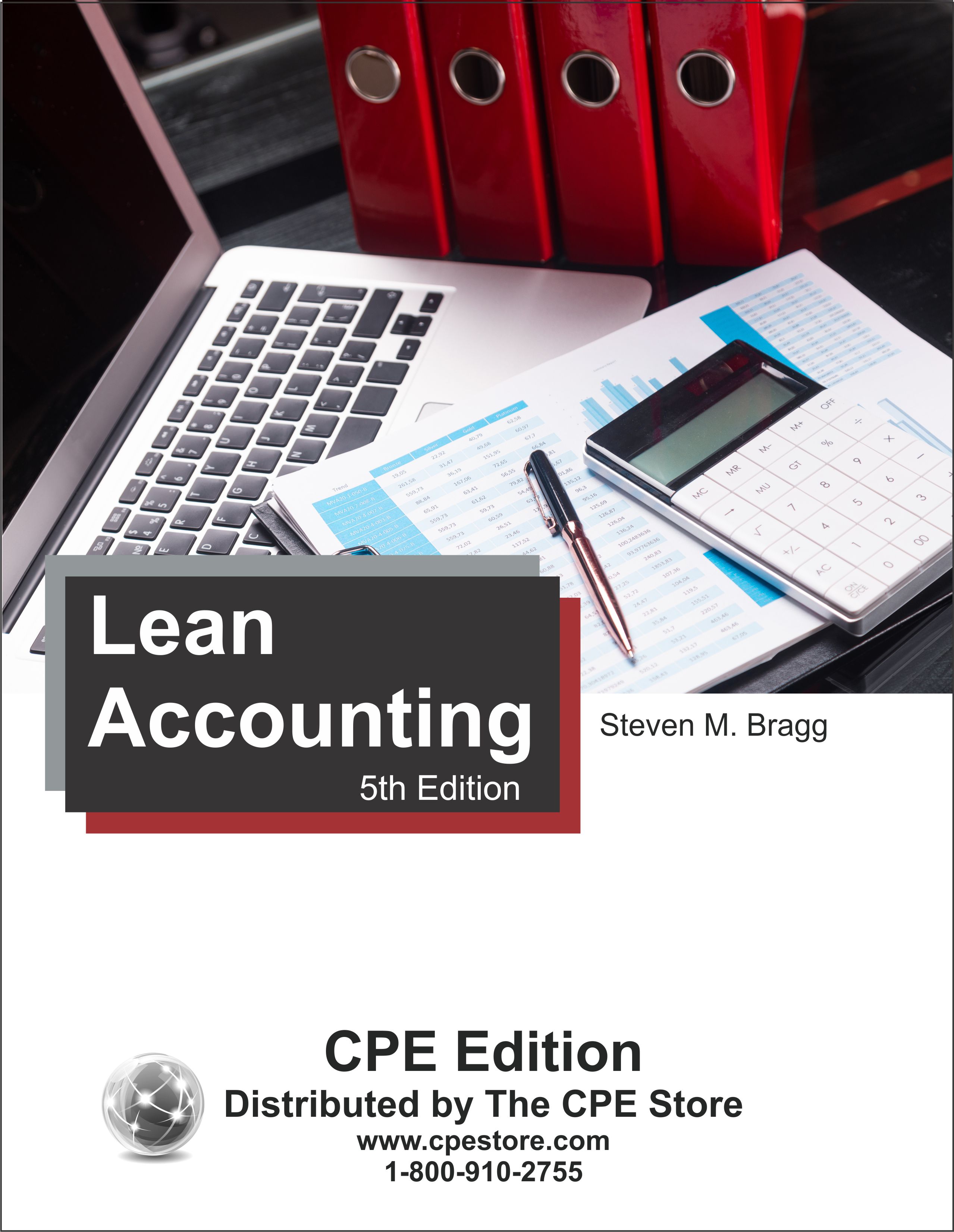
Course number: AA484605
There are massive differences between the efficiency and effectiveness of average accounting departments and those that operate at a world-class level. The key difference is having a lean focus on how the operation is constructed and operated. This course reveals how to streamline the accounting department with over 150 improvement tips for billing, collections, cost accounting, fixed assets, payables, payroll, inventory, budgeting, general ledger, financial statement production, and more. Course level: Basic. Prerequisites: None. Course includes integrated text and study guide, final exam and grading service.NASBA field of study: Accounting Course credit: 15 hours
Printed Version$109
PDF$109
Colleague Test(s)$45
Contents
Materiality in a Review of Financial Statements (SSARS 25)
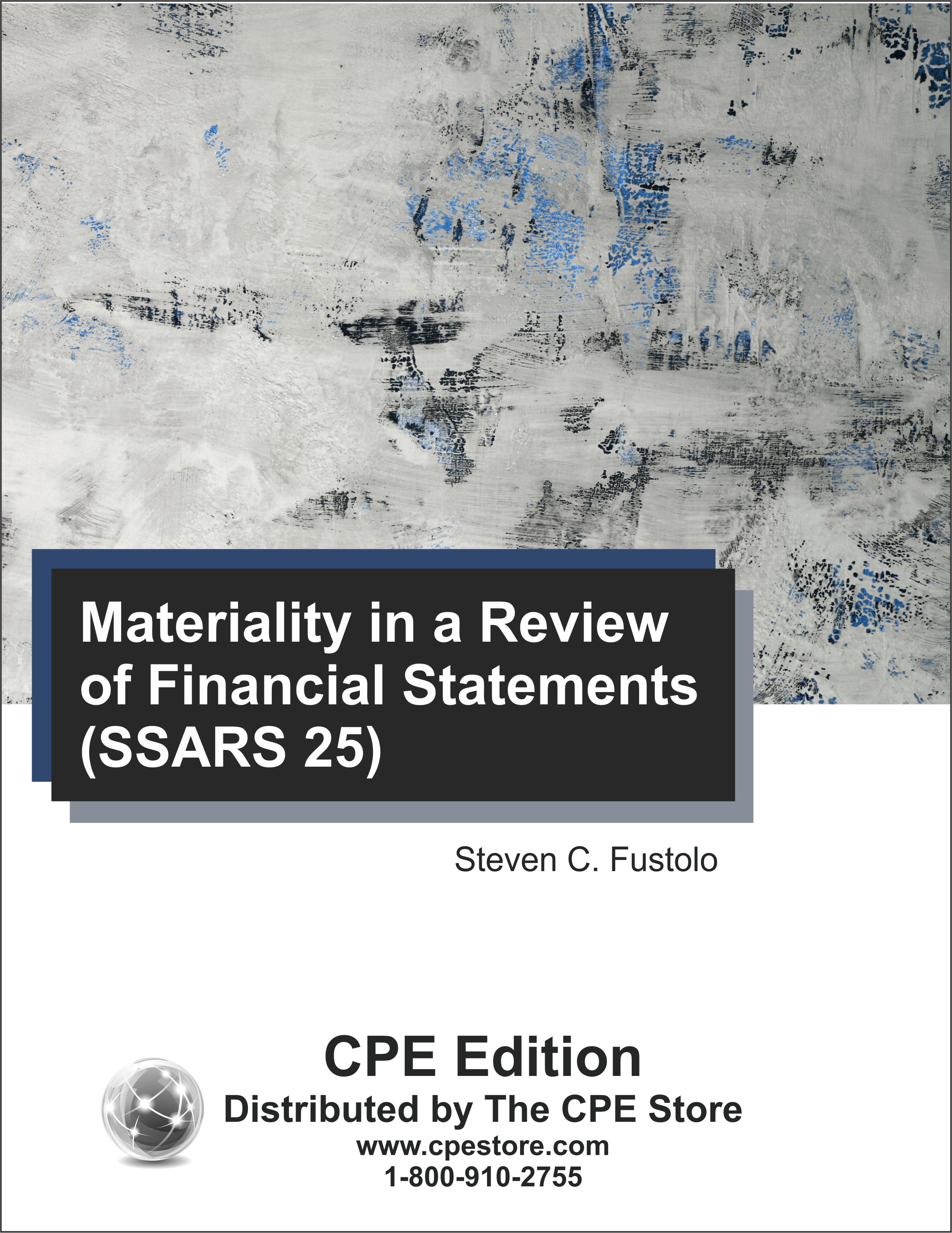
Course number: AA771301
The purpose of this course is to inform the reader of the various changes made to the compilation and review codification by the issuance of SSARS No. 25, Materiality in a Review of Financial Statements and Adverse Conclusions, include changes made to AR-C 60—General Principles, AR-C 70—Preparation of Financial Statements, AR-C 80—Compilation Engagements, and AR-C 90—Review of Financial Statements. Topics include expanding use of the disclaimer report in a preparation engagement, changes involving the reporting on the contractual basis of accounting, new requirements to define materiality in a review engagement, expanded inquiries and management representations in a review engagement, the new modified conclusion (qualified and adverse conclusion) reporting changes, guidance on going concern in a review engagement, and more. Course level: Basic. Prerequisites: None. Course includes integrated text and study guide, final exam, and grading service.NASBA field of study: Auditing Course credit: 4 hours
PDF$39
Colleague Test(s)$15
Contents
Nonprofit Accounting
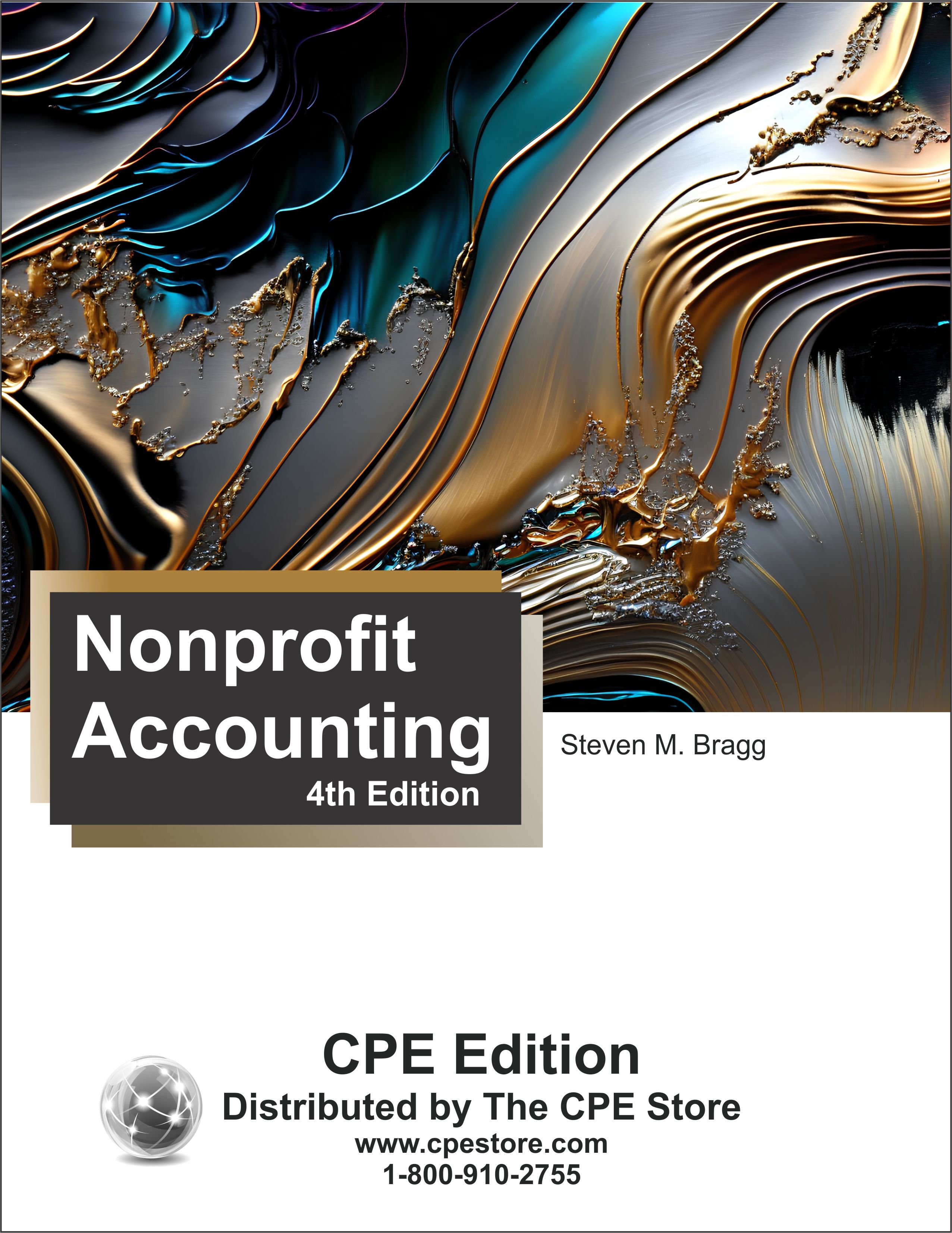
Course number: AA475104
This course provides guidance in how to create and operate a nonprofit accounting system, close the books, and produce financial statements – all while operating in accordance with the unique nonprofit accounting standards. Coverage of accounting standards includes revenue recognition, joint costs, split-interest agreements, and mergers and acquisitions. The course also describes detailed systems of control, budgeting, and ratio analysis to maintain a proper level of control over funds. Course level: Basic. Prerequisites: None. Course includes integrated text and study guide, final exam and grading service.NASBA field of study: Accounting Course credit: 16 hours
Printed Version$119
PDF$119
Colleague Test(s)$50
Contents
Oil and Gas Accounting
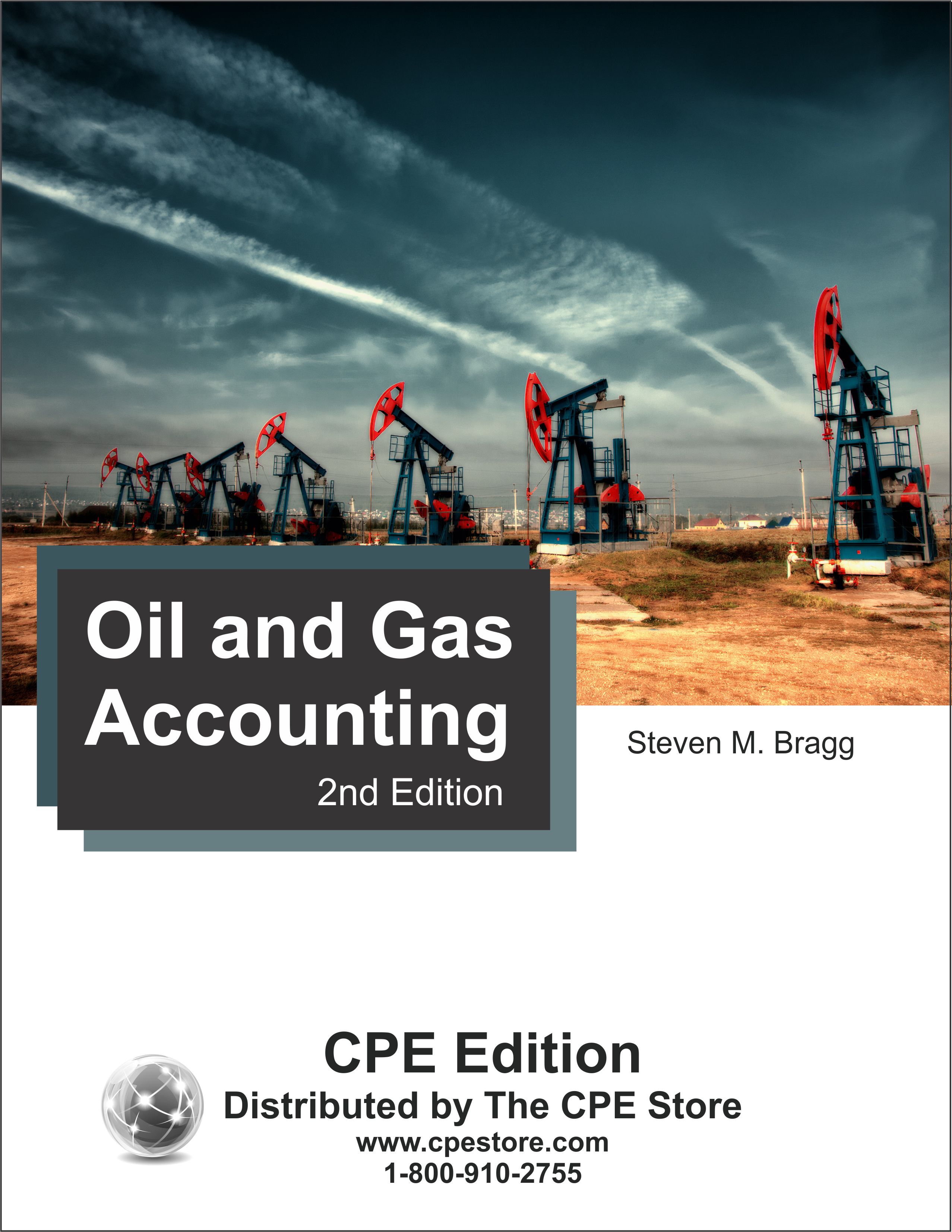
Course number: AA486502
Oil and gas operations have some of the most unique accounting issues found in any industry. Oil and Gas Accounting delves into acquisition, exploration, development, and production activities, covering many industry-specific accounting issues. Topics covered include the successful efforts method, full cost method, reserve reporting, the unit of production method, severance taxes, take-or-pay arrangements, transfers of mineral interests, and joint interest accounting, as well as industry-specific controls that should be installed. In short, this is the essential oil and gas desk reference for the accountant. Course level: Basic. Prerequisites: None. Course includes integrated text and study guide, final exam and grading service.NASBA field of study: Accounting Course credit: 9 hours
Printed Version$69
PDF$69
Colleague Test(s)$30
Contents
Optimal Accounting for Cash
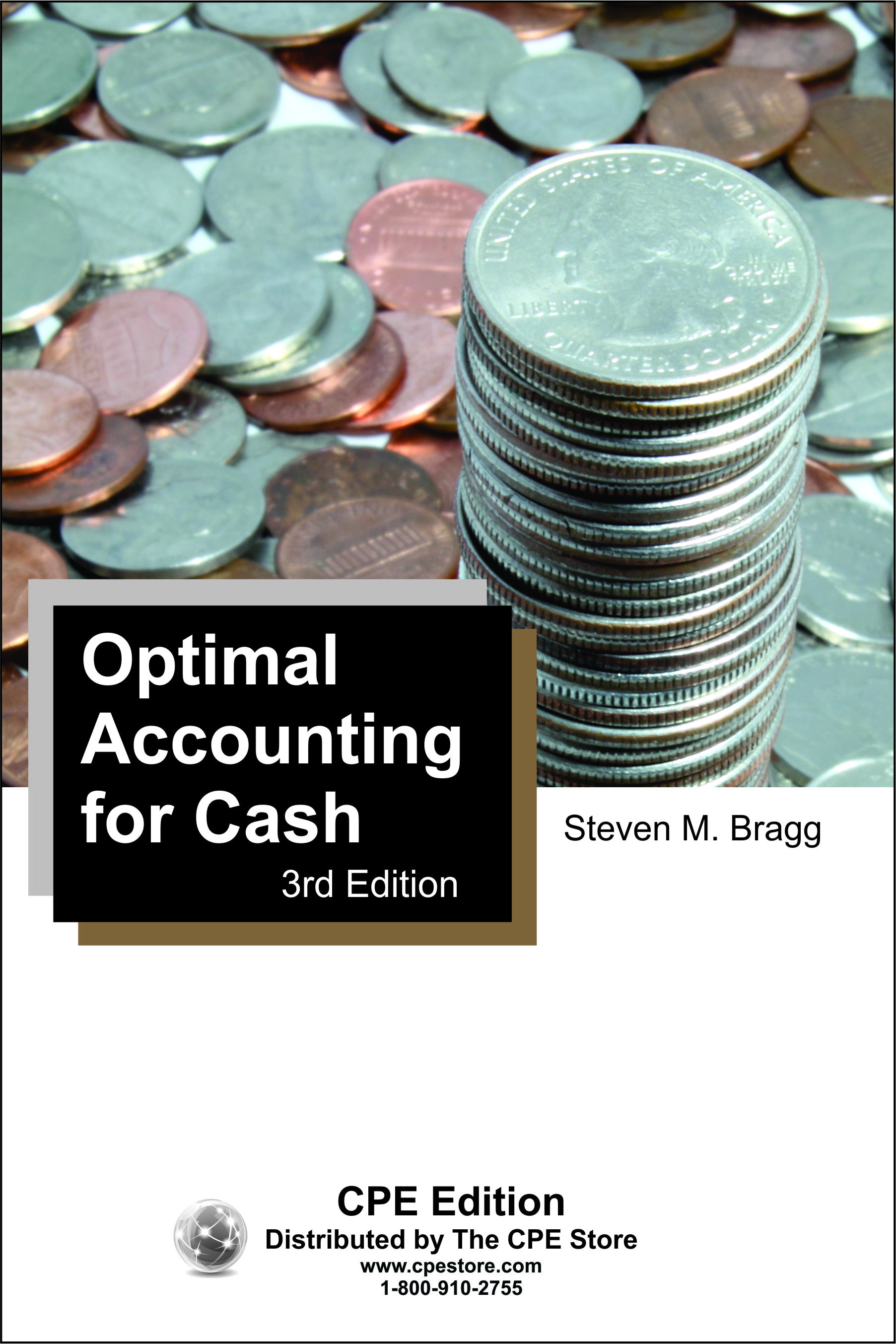
Course number: AA401103
The processing of checks and cash is one of the most inefficient processes in a business, since it is blanketed by the controls needed to minimize theft. Optimal Accounting for Cash shows how to sidestep these inefficient processes by taking a different approach to the handling of checks and cash. The course also covers the most essential controls needed to minimize the theft of cash, and notes how these changes impact the annual audit, closing the books, and instances of fraud. Course level: Basic. Prerequisites: None. Course includes integrated text and study guide, final exam and grading service.NASBA field of study: Accounting Course credit: 1 hour
Printed Version$19
PDF$19
Colleague Test(s)$12
Contents
Optimal Accounting for Payables
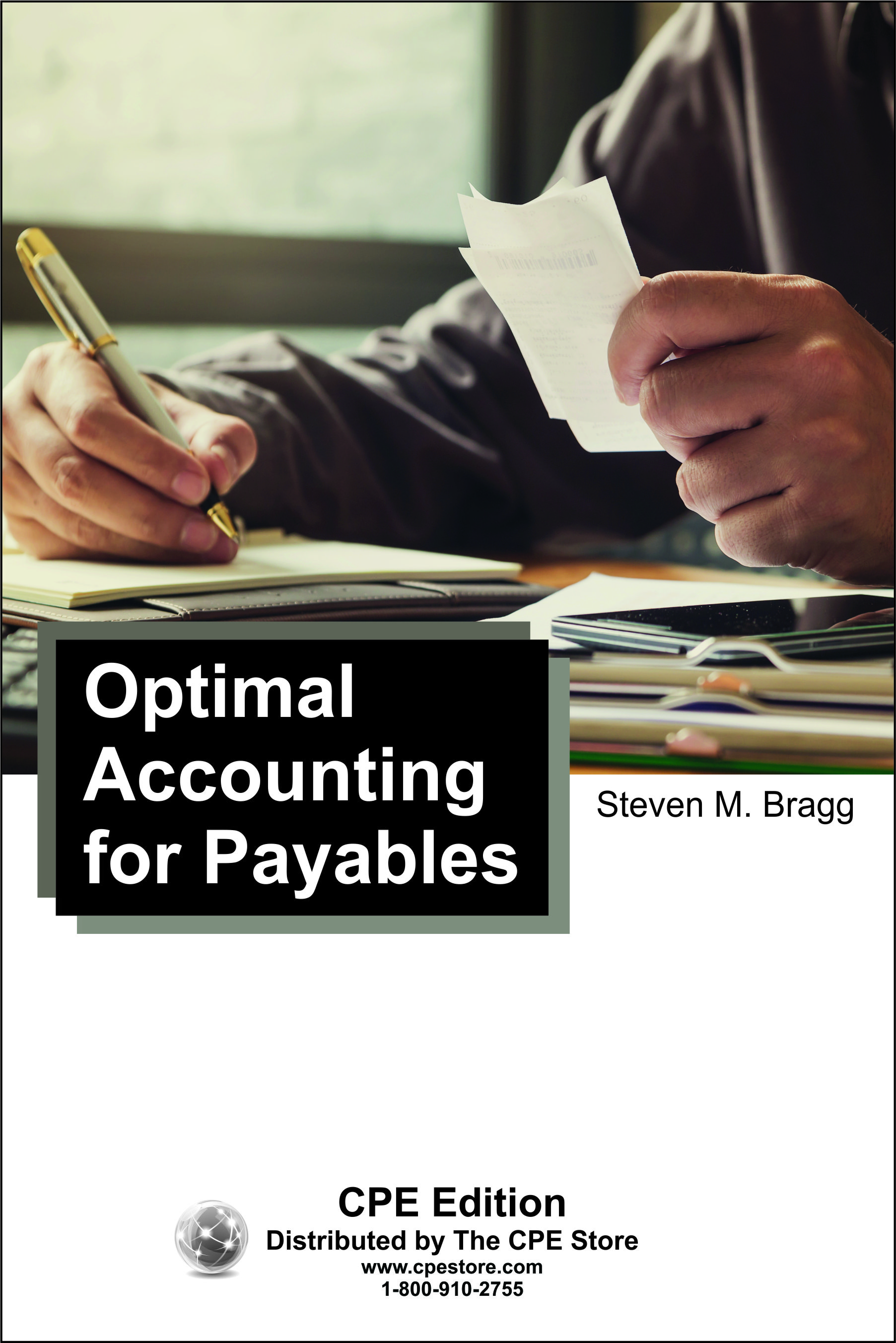
Course number: AA402201
The recordation and payment of accounts payable is a deeply inefficient process. Optimal Accounting for Payables shows how to enhance the basic process, as well as how to sidestep portions of it entirely. The result is a much more efficient and effective payables function. The course also notes the impact of these changes on closing the books, fraud, and the annual audit. Course level: Basic. Prerequisites: None. Course includes integrated text and study guide, final exam and grading service.NASBA field of study: Accounting Course credit: 1 hour
Printed Version$19
PDF$19
Colleague Test(s)$12
Contents
Partnership Accounting
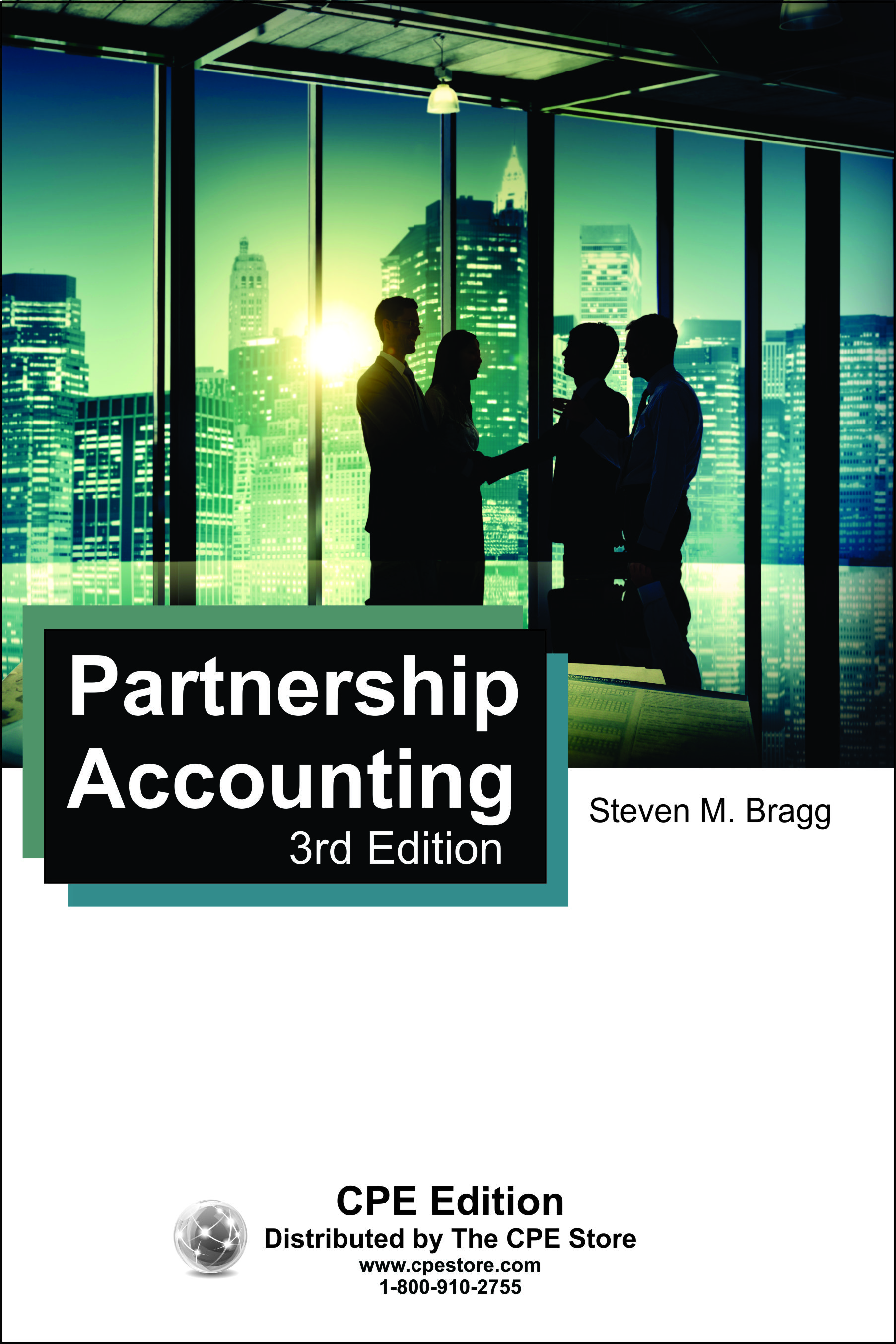
Course number: AA468403
The Partnership Accounting course focuses on the accounting for all types of transactions that are unique to a partnership. The discussion includes the contribution of funds to a partnership, capital accounts, the allocation of profits and losses to partners, the admission of a new partner into a partnership, and the liquidation of a partnership. Course level: Basic. Prerequisites: None. Course includes integrated text and study guide, final exam, and grading service.NASBA field of study: Accounting Course credit: 1 hour
Printed Version$19
PDF$19
Colleague Test(s)$12
Contents
Payables Management
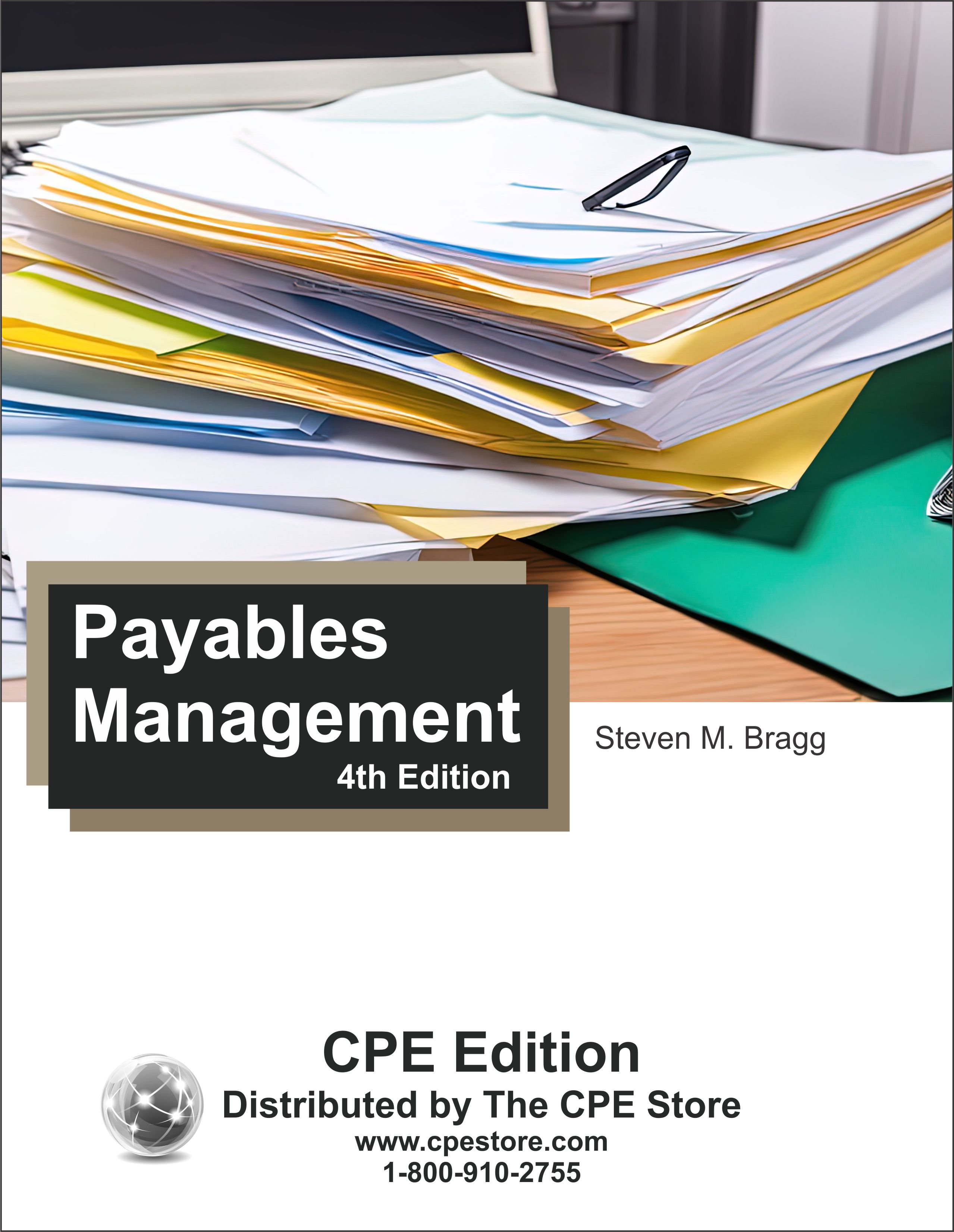
Course number: AA449804
Proper management of the accounts payable function calls for a comprehensive knowledge of transaction flows, controls, and the latest technology. The Payables Management course delves into these topics in detail, addressing the accounting for each type of payables transaction, control systems, use taxes, payables fraud, record keeping, unclaimed property reporting, measurement systems, and more. Course level: Basic. Prerequisites: None. Course includes integrated text and study guide, final exam and grading service.NASBA field of study: Accounting Course credit: 10 hours
Printed Version$79
PDF$79
Colleague Test(s)$30
Contents
Project Accounting
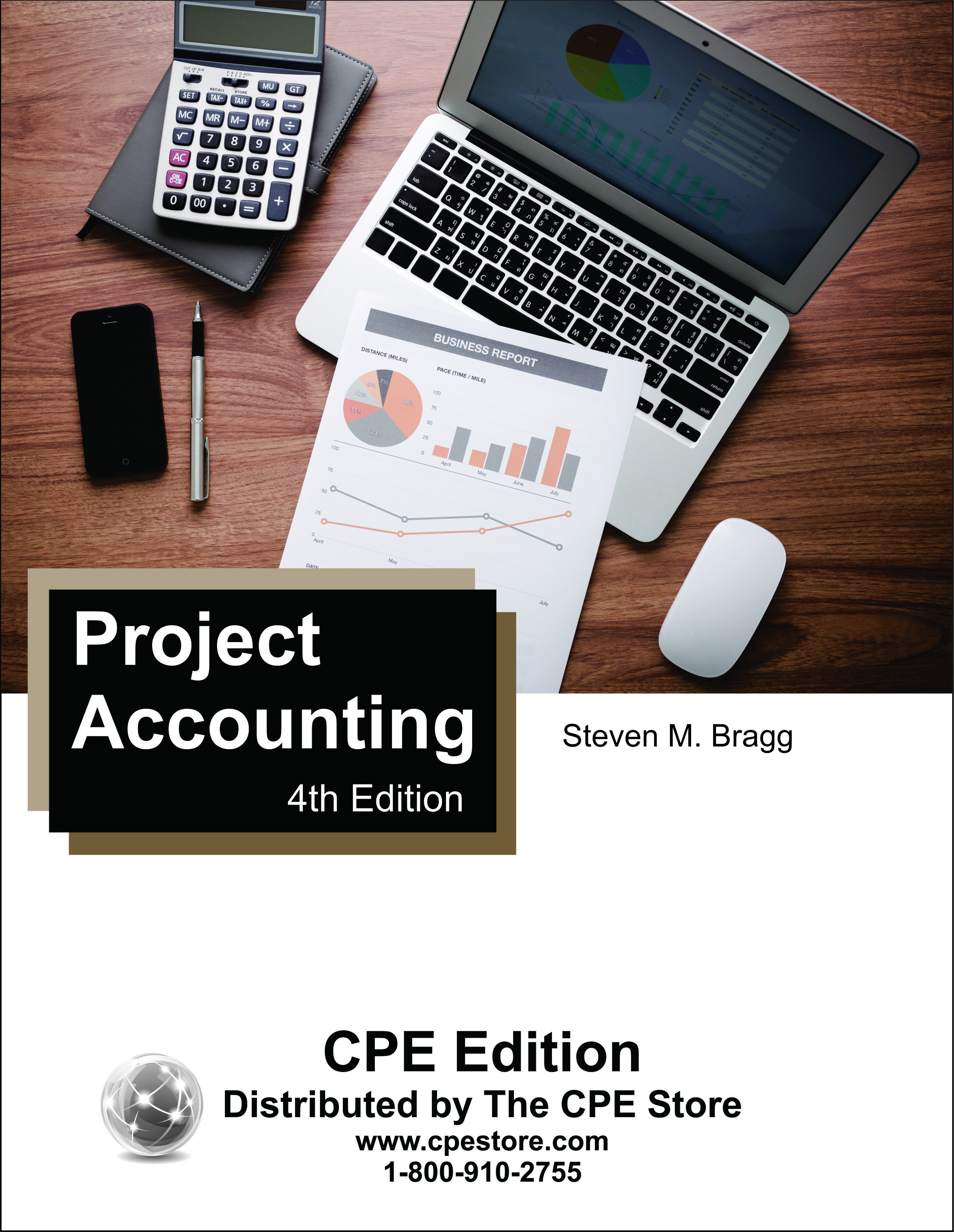
Course number: AA451304
Accounting for a major project presents the accountant with a multitude of difficult accounting issues. The Project Accounting course shows how to deal with these concerns by describing the ideal cost collection system and how to record expenses and revenues within it. The course also addresses the management of change orders, allowances, and contingencies, while noting the impact of GAAP requirements on specific project issues, including interest capitalization and the treatment of research and development costs. The controls and measurements used for projects are also discussed. The broad range of topics covered make this course an essential tool for the project accountant. Course level: Basic. Prerequisites: None. Course includes integrated text and study guide, final exam, and grading service.NASBA field of study: Accounting Course credit: 3 hours
Printed Version$29
PDF$29
Colleague Test(s)$15
Contents
Real Estate Accounting
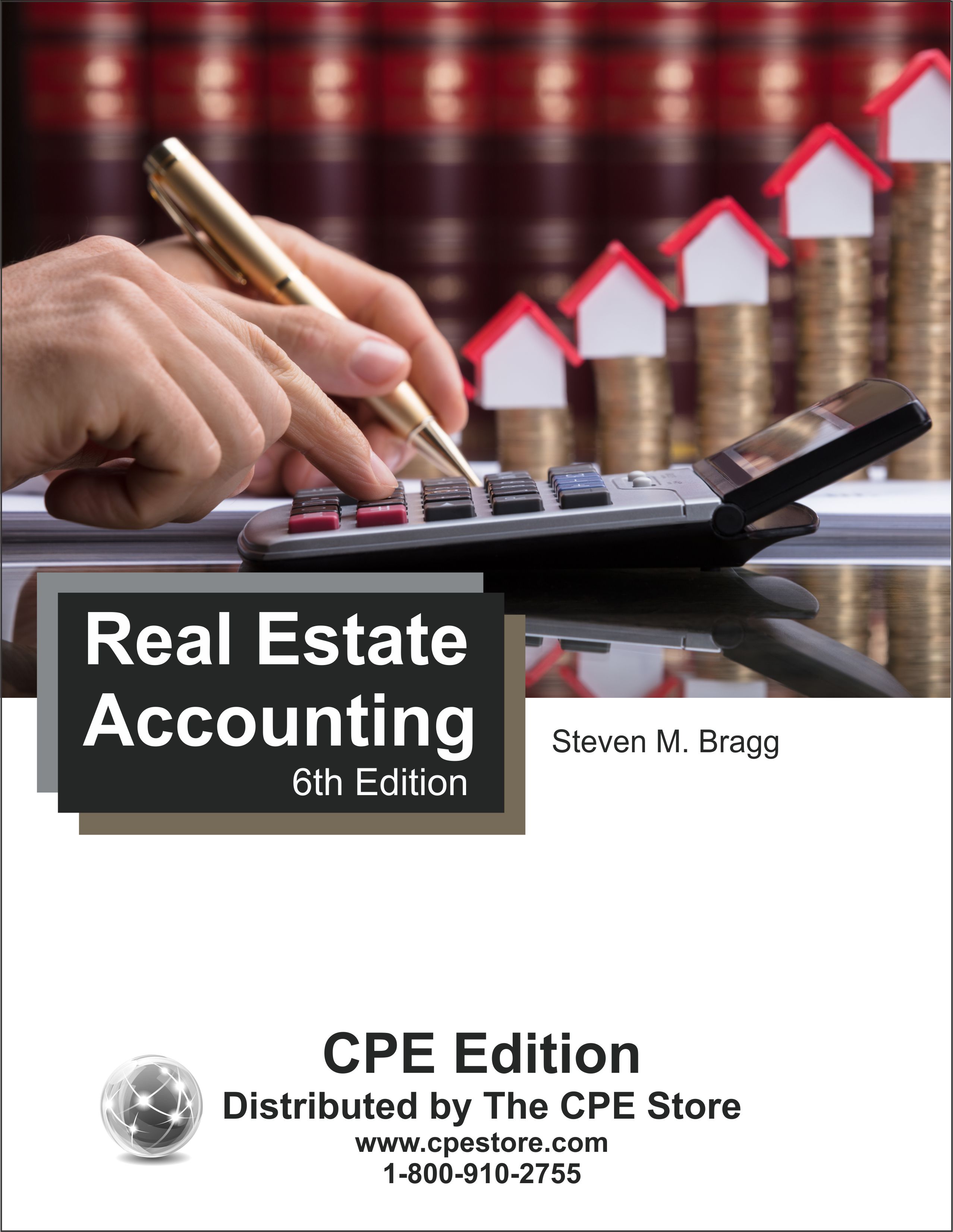
Course number: AA456406
This course describes the accounting to be used for all types of real estate transactions, such as retail land sales, real estate sales, property exchanges, and the sale of time-share intervals. It also reveals the related financial statement presentations and accompanying disclosures. In addition, the course describes the accounting related to the rental of property, and investments in real estate ventures. Course level: Basic. Prerequisites: None. Course includes integrated text and study guide, final exam and grading service.NASBA field of study: Accounting Course credit: 10 hours
Printed Version$79
PDF$79
Colleague Test(s)$30
Contents
Revenue Recognition
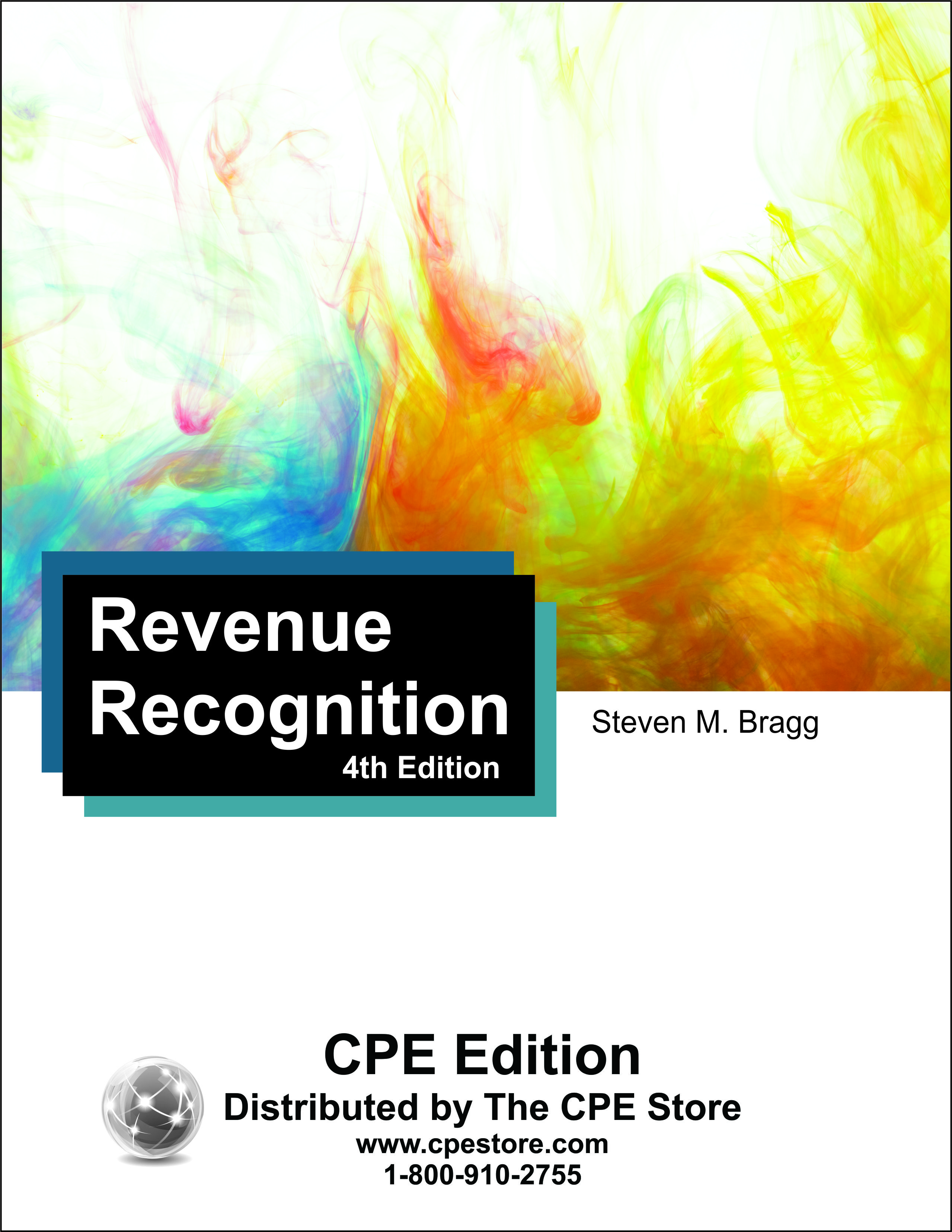
Course number: AA476604
The recognition of revenue is among the most misunderstood areas of accounting, leading to ongoing arguments between management and auditors about how to account for various sales transactions. Revenue Recognition brings clarity to the topic by focusing on Topic 606, Revenue from Contracts with Customers, which describes the five-step process for recognizing many types of revenue. The discussion includes the establishment of a contract, the determination of performance obligations, and how to set and allocate prices. The course covers many ancillary topics as well, including the treatment of variable consideration, noncash consideration, price discounts, subsequent price changes, consignments, licensing, repurchase agreements, disclosures, and more. In short, when there is an issue about revenue recognition, consult this course. Course level: Basic. Prerequisites: None. Course includes integrated text and study guide, final exam and grading service.NASBA field of study: Accounting Course credit: 4 hours
Printed Version$39
PDF$39
Colleague Test(s)$15
Contents
Revenue Standard ASC 606
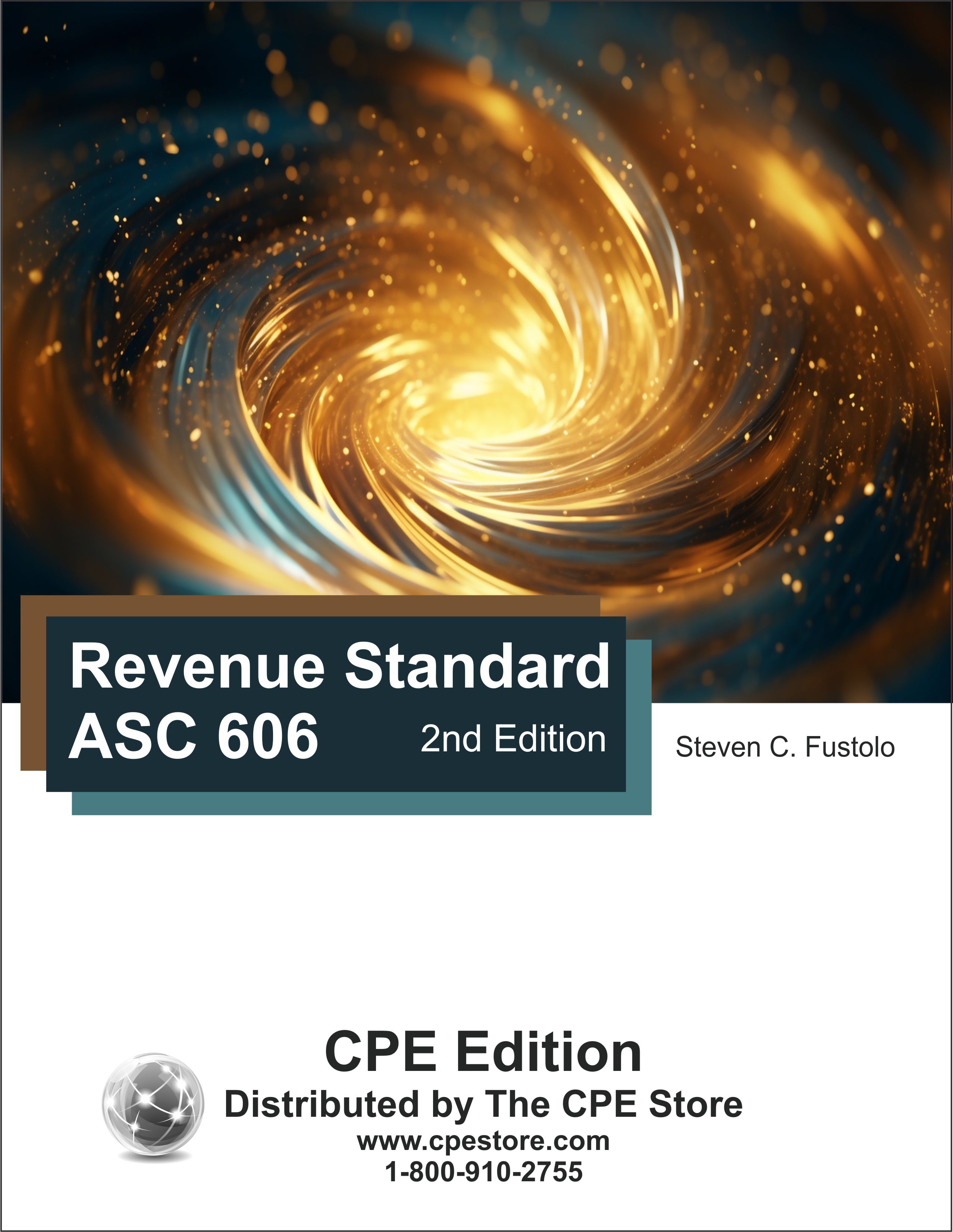
Course number: AA764502
The objective of this course is to address the new revenue standard in ASC 606, Revenue from Contracts with Customers, and its related updates, and provide guidance to nonpublic (private) entities who implemented the standard in 2020 and are continuing to experience post-implementation issues. Topics include and overview of the new standard and its core principle, an analysis of each of the five steps required in the revenue model, selected issues encompassing principal versus agent considerations, dealing with warranties, bill-and-hold arrangements, and consignment transaction. The course also addresses how to account for contract costs, financial statement presentation of revenue-related accounts, disclosures, and transition methods and guidance. Course level: Basic. Prerequisites: None. Course includes integrated text and study guide, final exam, and grading service.NASBA field of study: Accounting Course credit: 8 hours
Printed Version$69
PDF$69
Colleague Test(s)$25
Contents
Sales and Use Tax Accounting
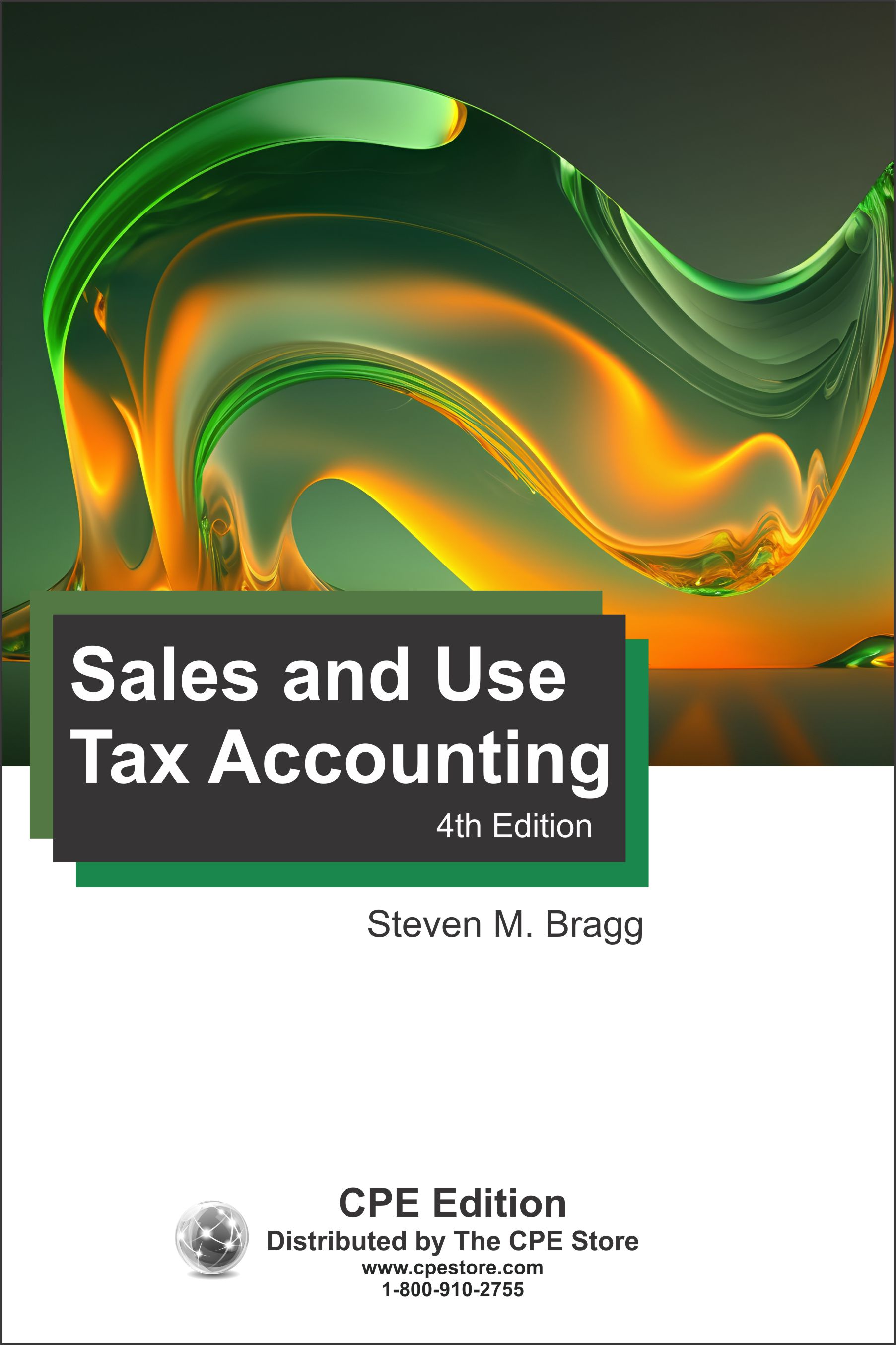
Course number: AA475404
The Sales and Use Tax Accounting course discusses when sales and use taxes should be applied to a transaction. The course addresses the calculation of these taxes, when exemptions may apply, how to remit tax receipts to the government, and how to present the related tax liability in the financial statements. The course also covers many special situations, such as dealing with over- or under-collections of sales taxes, private letter rulings, sales tax holidays, and how to deal with a sales tax audit. Course level: Basic. Prerequisites: None. Course includes integrated text and study guide, final exam, and grading service.NASBA field of study: Accounting Course credit: 2 hours
Printed Version$19
PDF$19
Colleague Test(s)$12
Contents
Standards for Accounting and Review Services (SSARS 21-26)
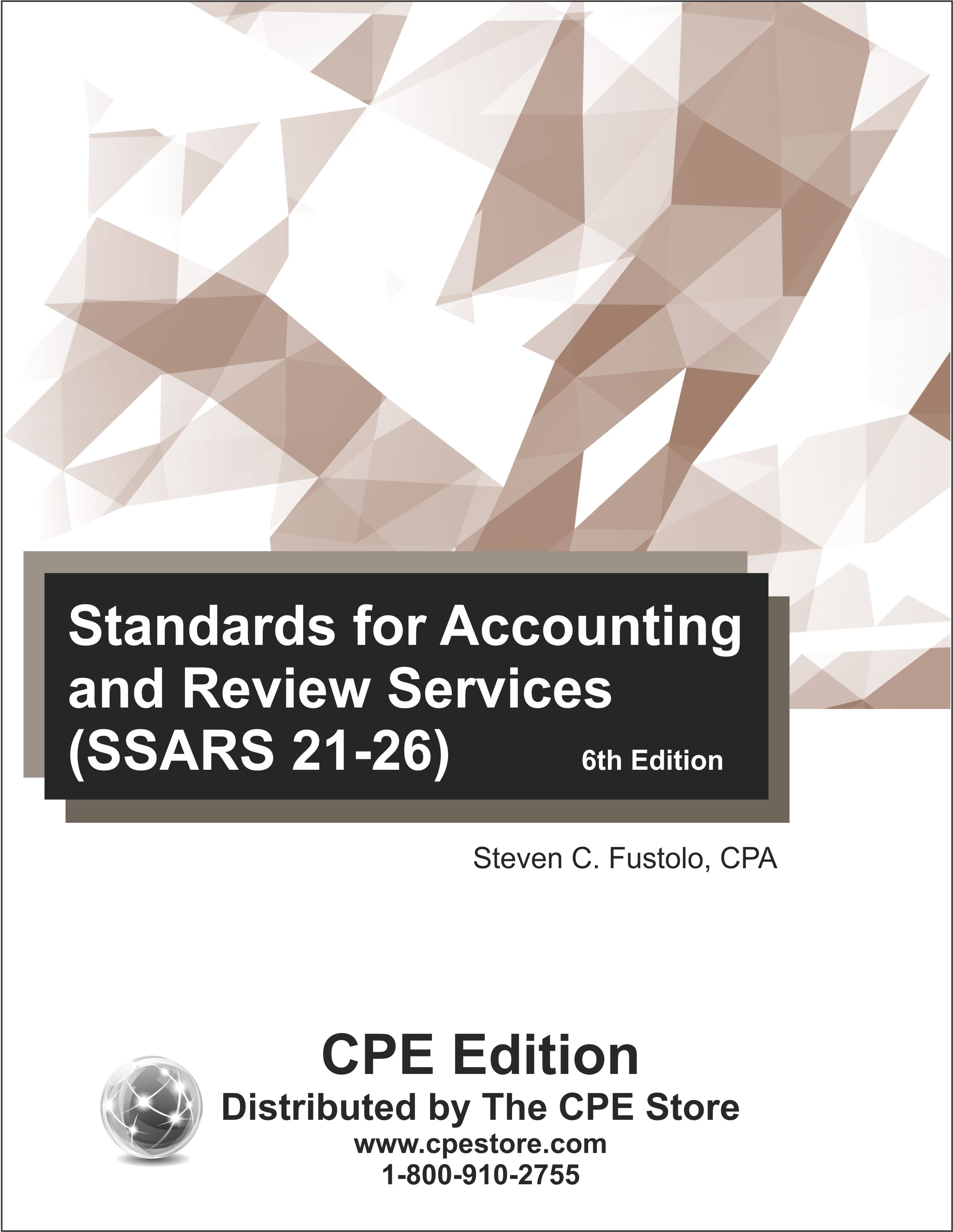
Course number: AA752106
The purpose of this course is to inform the reader of the various changes made to the compilation and review codification by SSARS No. 21 as amended by SSARS No. 22, Compilation of Pro Forma Financial Information, SSARS No. 23, Omnibus Statement on Standards for Accounting and Review Services—2016, SSARS No. 24, Omnibus Statement on Standards for Accounting and Review Services—2018, SSARS No. 25, Materiality in a Review of Financial Statements and Adverse Conclusions, and SSARS No. 26: Quality Management for an Engagement Conducted in Accordance With Statements on Standards for Accounting and Review Services. The course addresses the three types of engagements that can be performed under the SSARSs: a preparation of financial statements engagement, a compilation engagement, and a review engagement. Course level: Basic. Prerequisites: None. Course includes integrated text and study guide, final exam, and grading service.NASBA field of study: Auditing Course credit: 10 hours
PDF$79
Colleague Test(s)$30
Contents
Statement of Cash Flows
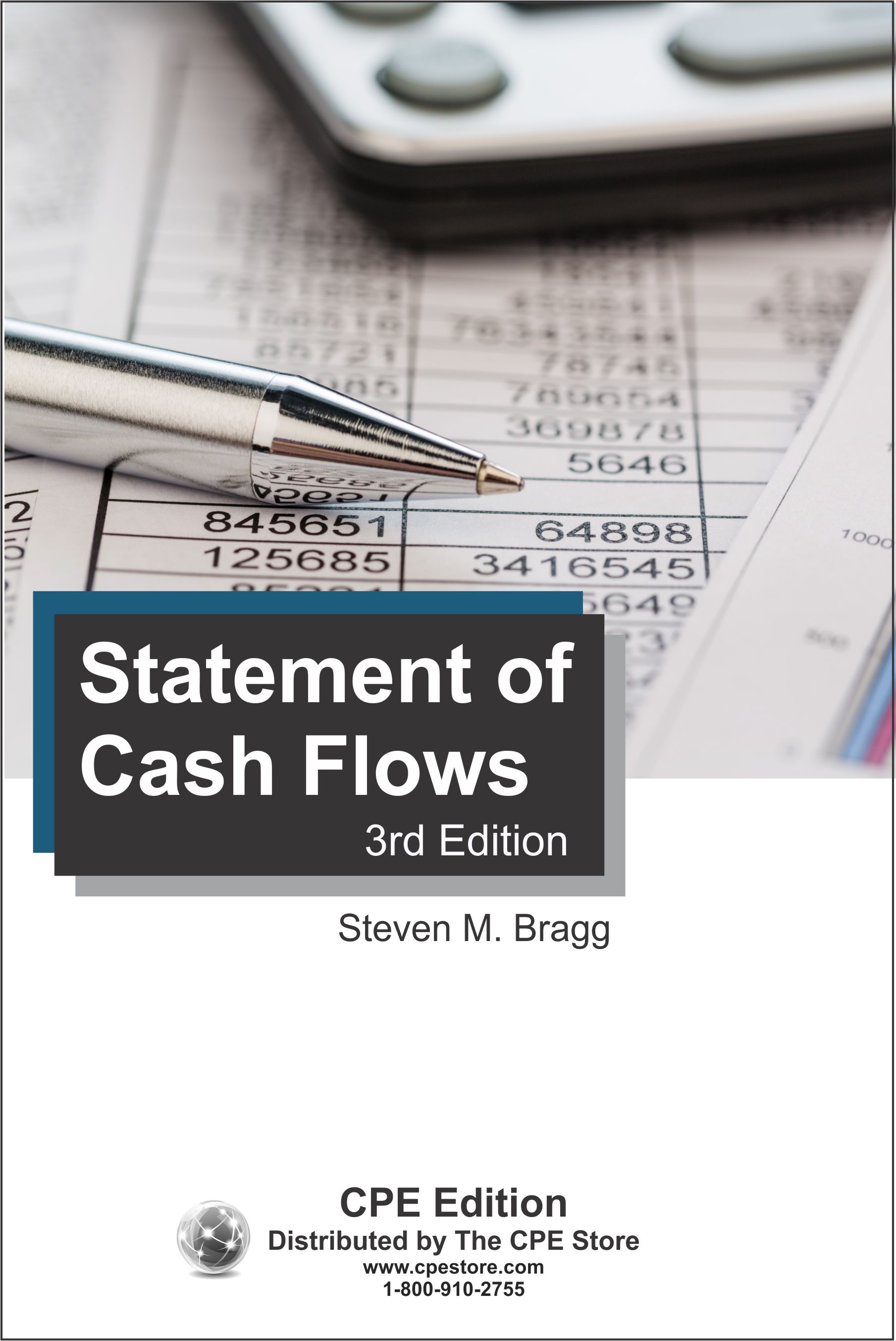
Course number: AA462303
The Statement of Cash Flows course describes the objectives of the statement of cash flows, the different presentation methods that can be used, and how to prepare it. The course also notes the presentation treatment of many special situations, data collection issues, and the disclosure requirements for related information. In addition, the course describes several key cash flow analyses, including how to interpret the statement of cash flows. Course level: Basic. Prerequisites: None. Course includes integrated text and study guide, final exam, and grading service.NASBA field of study: Accounting Course credit: 2 hours
Printed Version$19
PDF$19
Colleague Test(s)$12
Contents
Tax-Basis Financial Statements
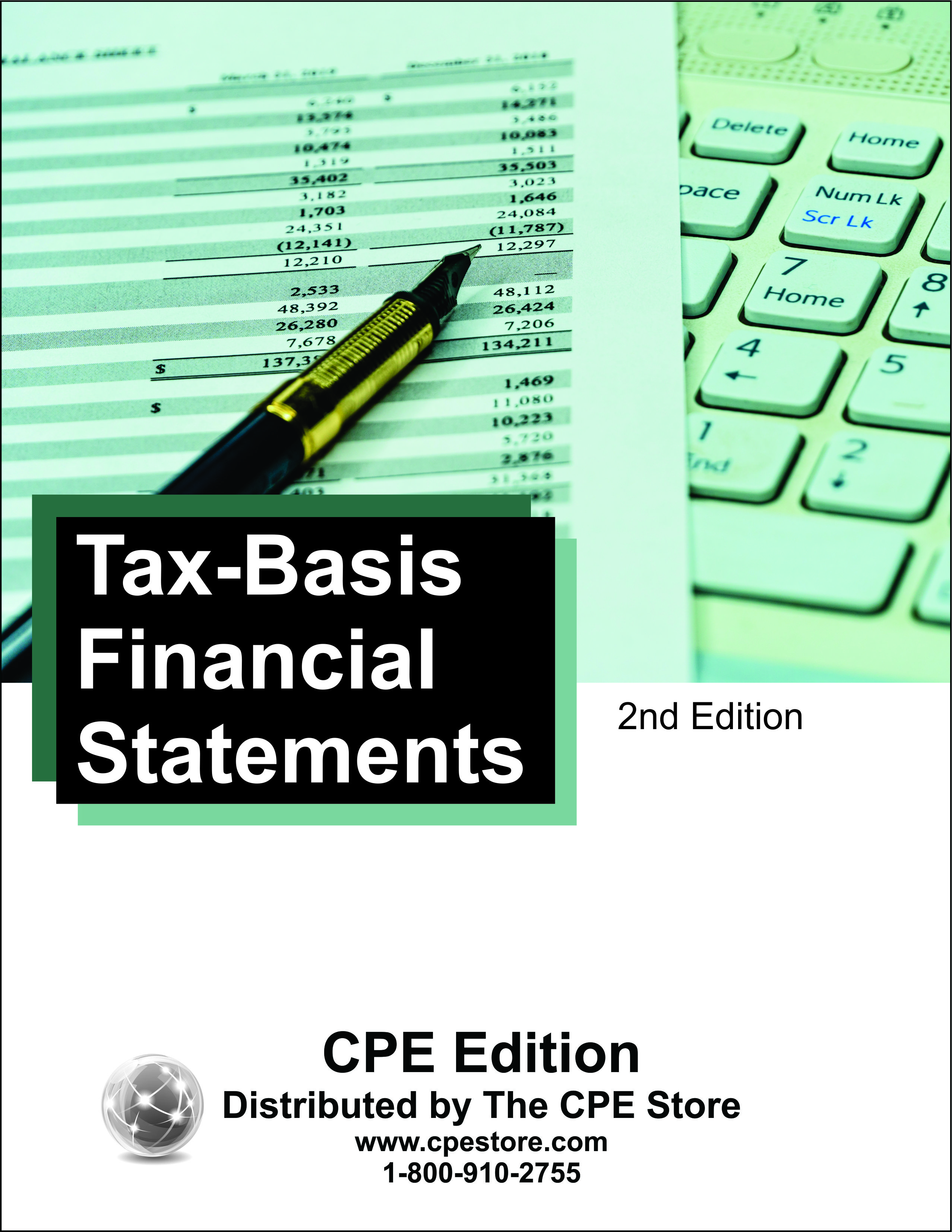
Course number: AA722802
The objective of this course is to discuss the general rules and applications used in the preparation of and reporting on tax-basis financial statements and other bases of accounting found within the special purpose frameworks (also referred to as other comprehensive bases of accounting). Topics include an overview of the types of special purpose frameworks, advantages and disadvantages of using tax-basis financial statements, tax-basis accrual versus cash basis, reviewing the key differences between GAAP and tax-basis revenue and expenses and other differences, tax-basis disclosures, reporting options for tax-basis financial statements, unusual reporting and presentation issues related to tax-basis financial statements, an overview of other types of special purpose frameworks including pure cash basis, modified cash basis, regulatory basis, contractual basis, and the other basis of accounting, and more. Course level: Basic. Prerequisites: None. Course includes integrated text and study guide, final exam, and grading service.NASBA field of study: Accounting Course credit: 10 hours
Printed Version$79
PDF$79
Colleague Test(s)$30
Contents
The Balance Sheet
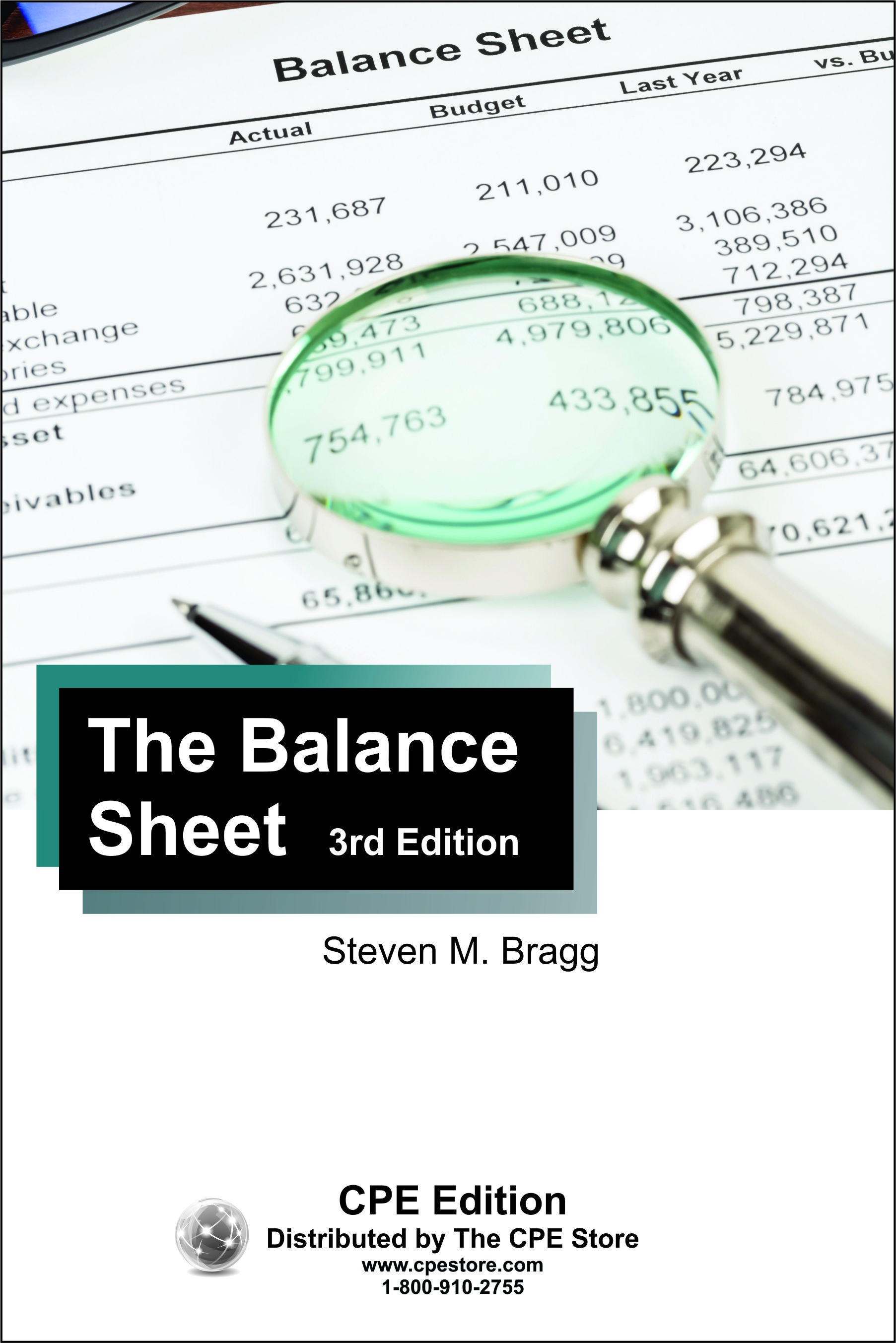
Course number: AA477303
Because the balance sheet reveals the financial position of a business, it should be properly prepared in order to maximize the amount of information conveyed to users. This course assists the accountant by noting the various presentation formats that can be used, as well as the content and description of each line item within the statement. It also discusses sample balance sheets from several publicly held companies, in order to show the range of presentation possibilities. Course level: Basic. Prerequisites: None. Course includes integrated text and study guide, final exam, and grading service.NASBA field of study: Accounting Course credit: 2 hours
Printed Version$19
PDF$19
Colleague Test(s)$12
Contents
The Year-End Close
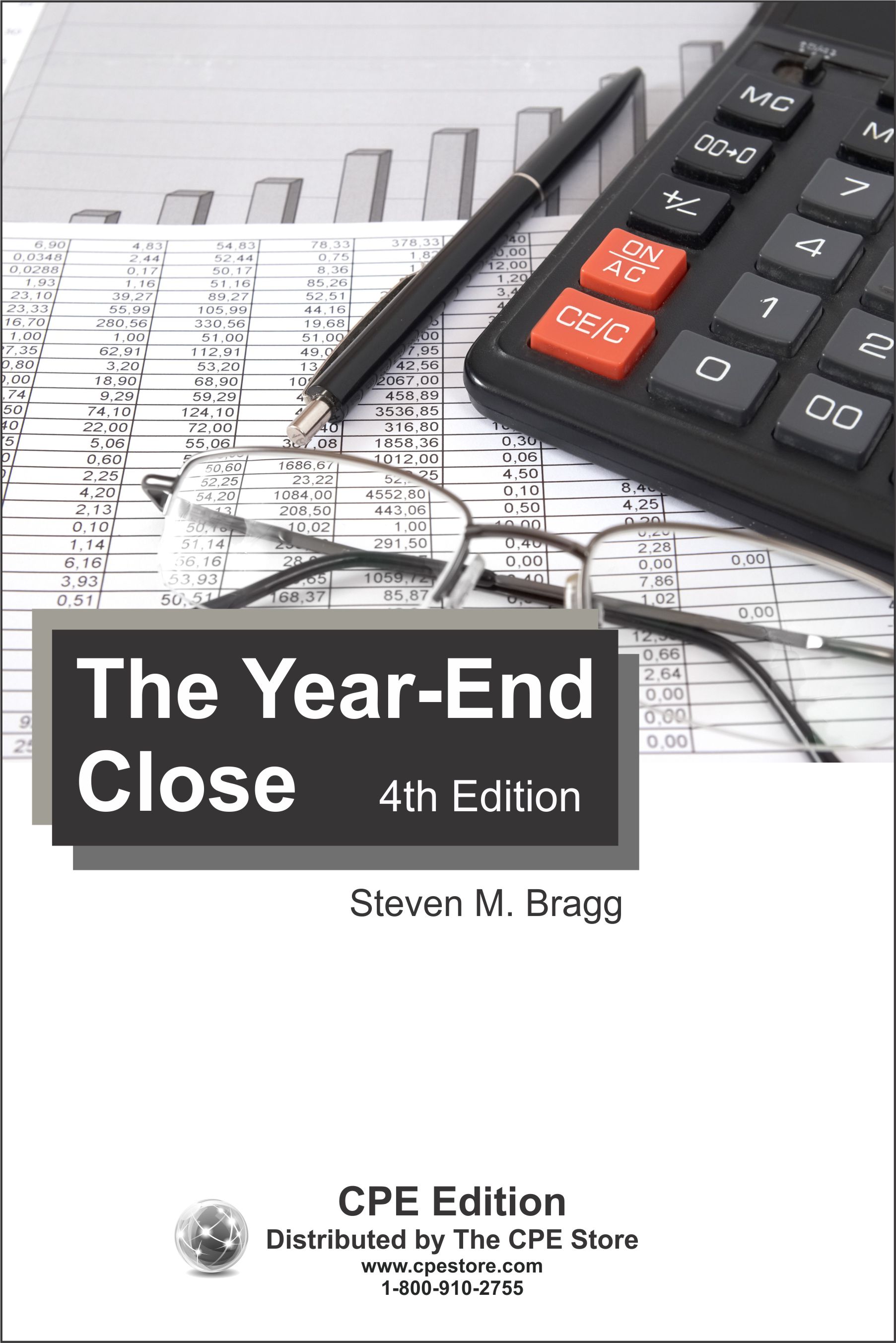
Course number: AA457204
This course notes the actions to be taken to close the books at the end of the fiscal year, as well as other activities required at the end of the calendar year. There is a particular emphasis on several major areas of accounting, including receivables, inventory, fixed assets, payables, and payroll. Additional tasks required for the year-end close of a publicly held company are also described. Course level: Basic. Prerequisites: None. Course includes integrated text and study guide, final exam and grading service.NASBA field of study: Accounting Course credit: 3 hours
Printed Version$29
PDF$29
Colleague Test(s)$15
Contents
Yellow Book Explained
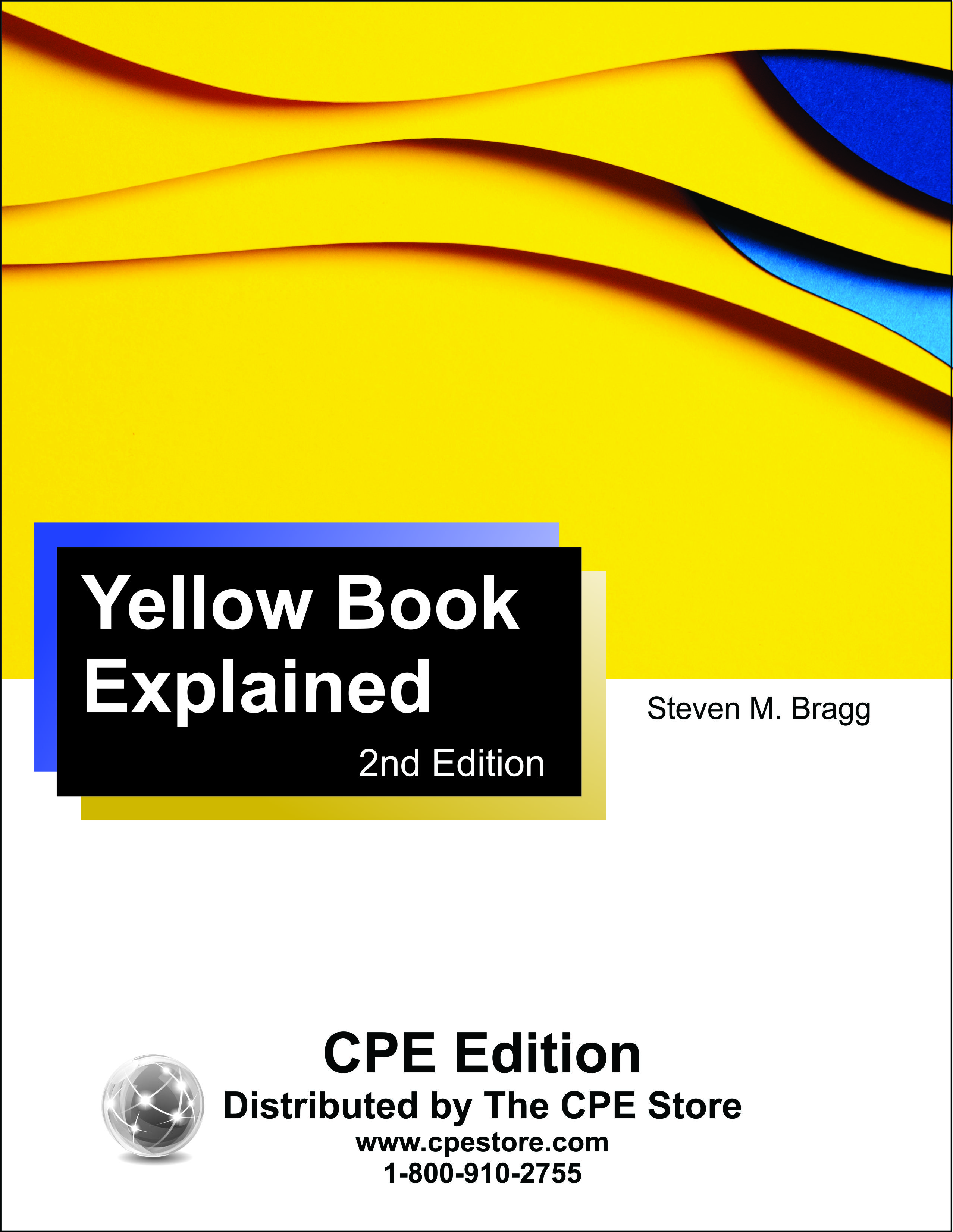
Course number: AA424402
This course is based on the 2018 Yellow Book, which is effective for financial audits, attestation engagements, and reviews of financial statements, and for performance audits for periods beginning before December 15, 2025. The new 2024 Yellow Book will become effective on December 15, 2025 and is not covered in this course. The contents of the Yellow Book may seem incomprehensible for someone not familiar with government auditing. In the Yellow Book Explained course, we convert every aspect of the standards into plain English, so you can better understand how to apply them to an audit. The course covers all aspects of GAGAS, including auditor independence, quality control, fieldwork standards, and reporting standards. This course is useful for both internal and external auditors who work with government entities. Course level: Basic. Prerequisites: None. Course includes integrated text and study guide, final exam, and grading service.NASBA field of study: Auditing (Governmental) Course credit: 4 hours
Printed Version$39
PDF$39
Colleague Test(s)$15
Contents